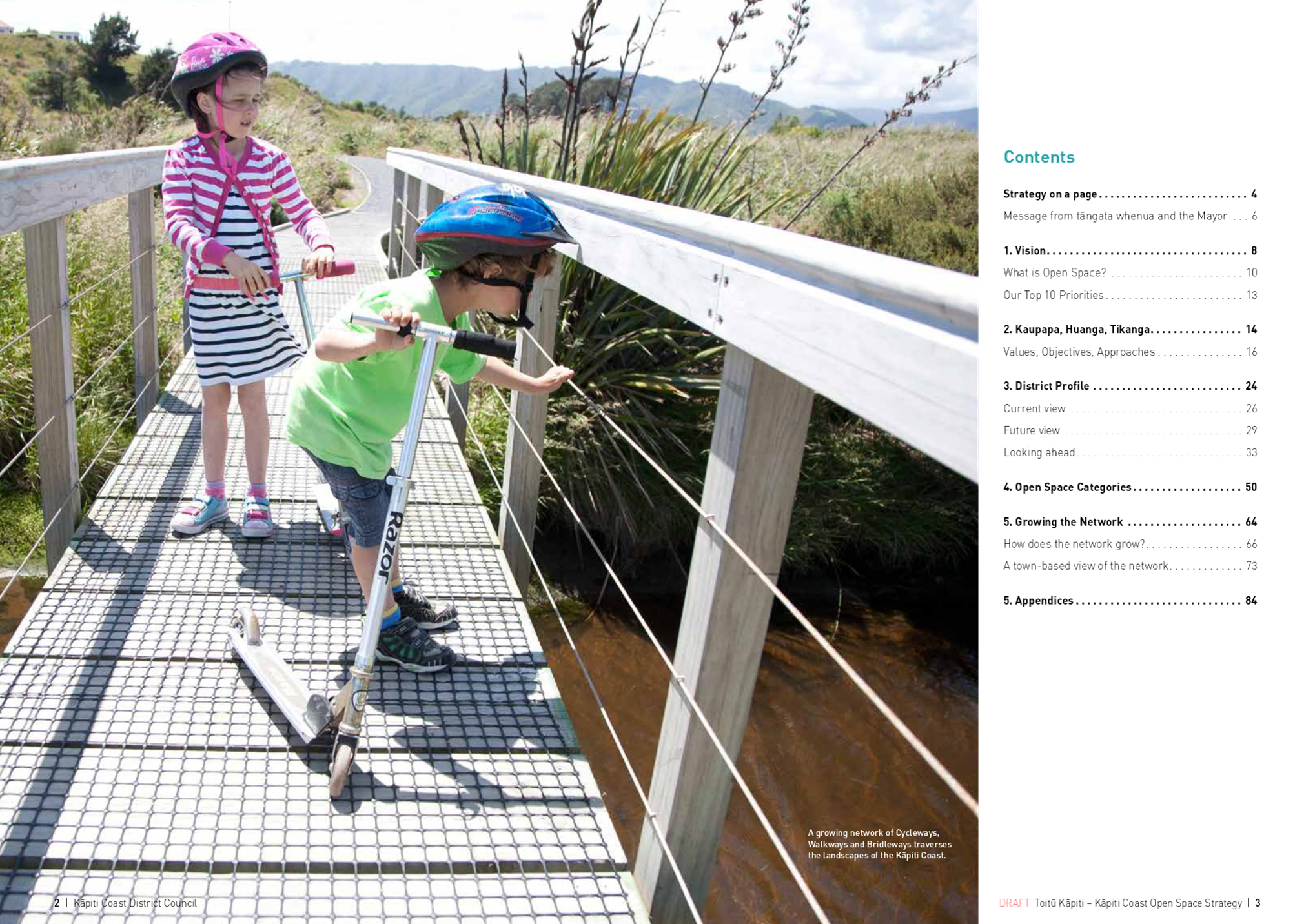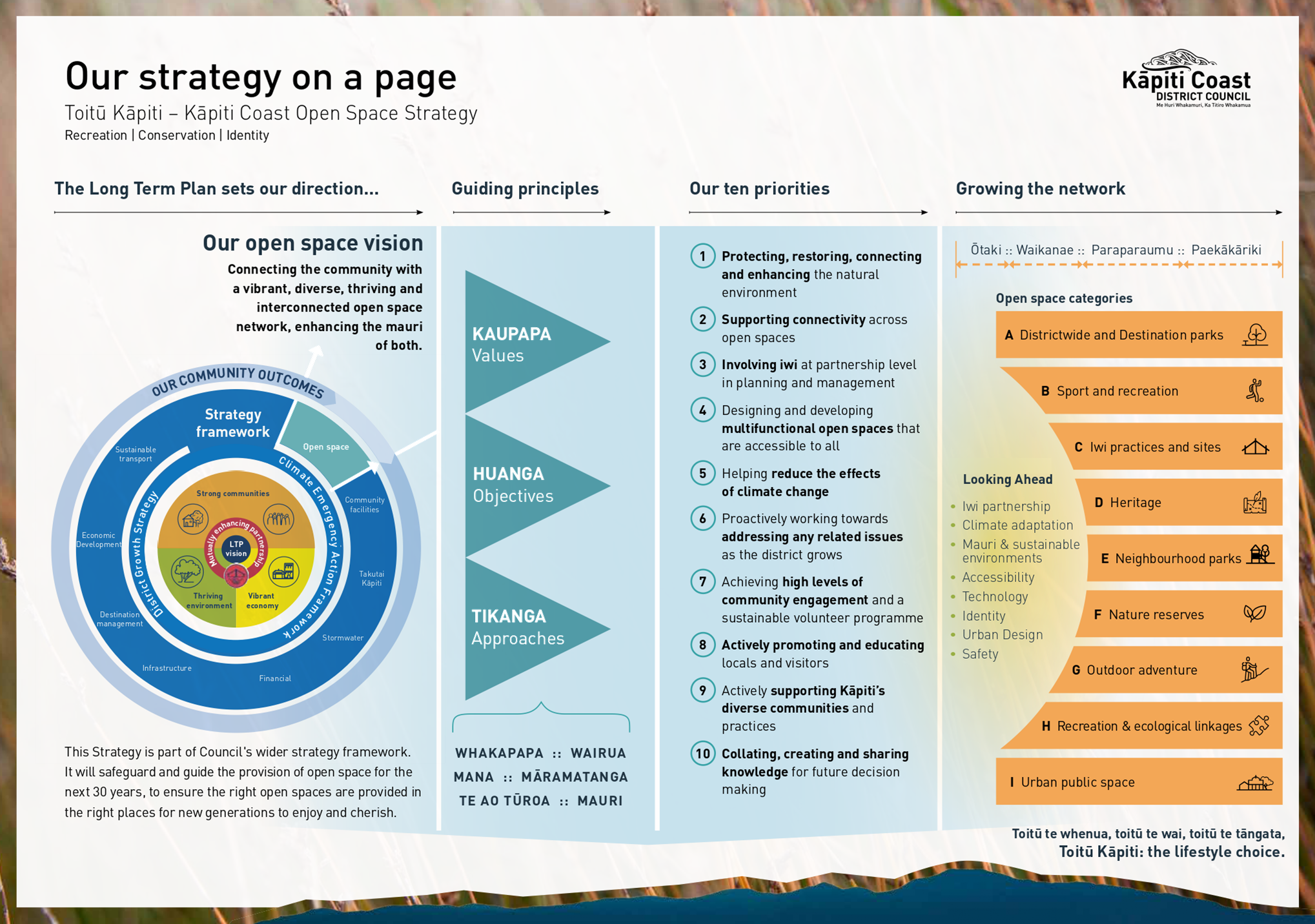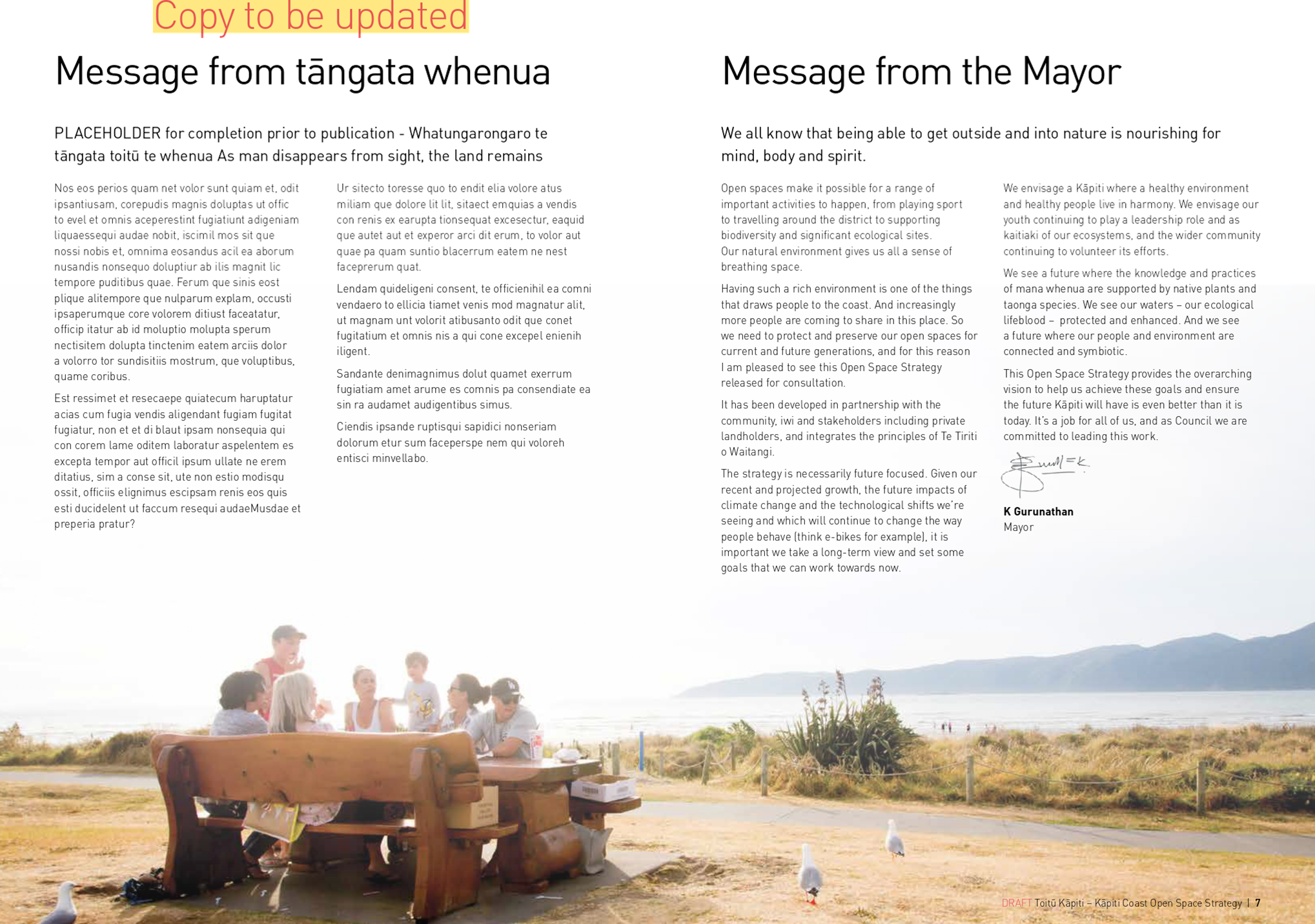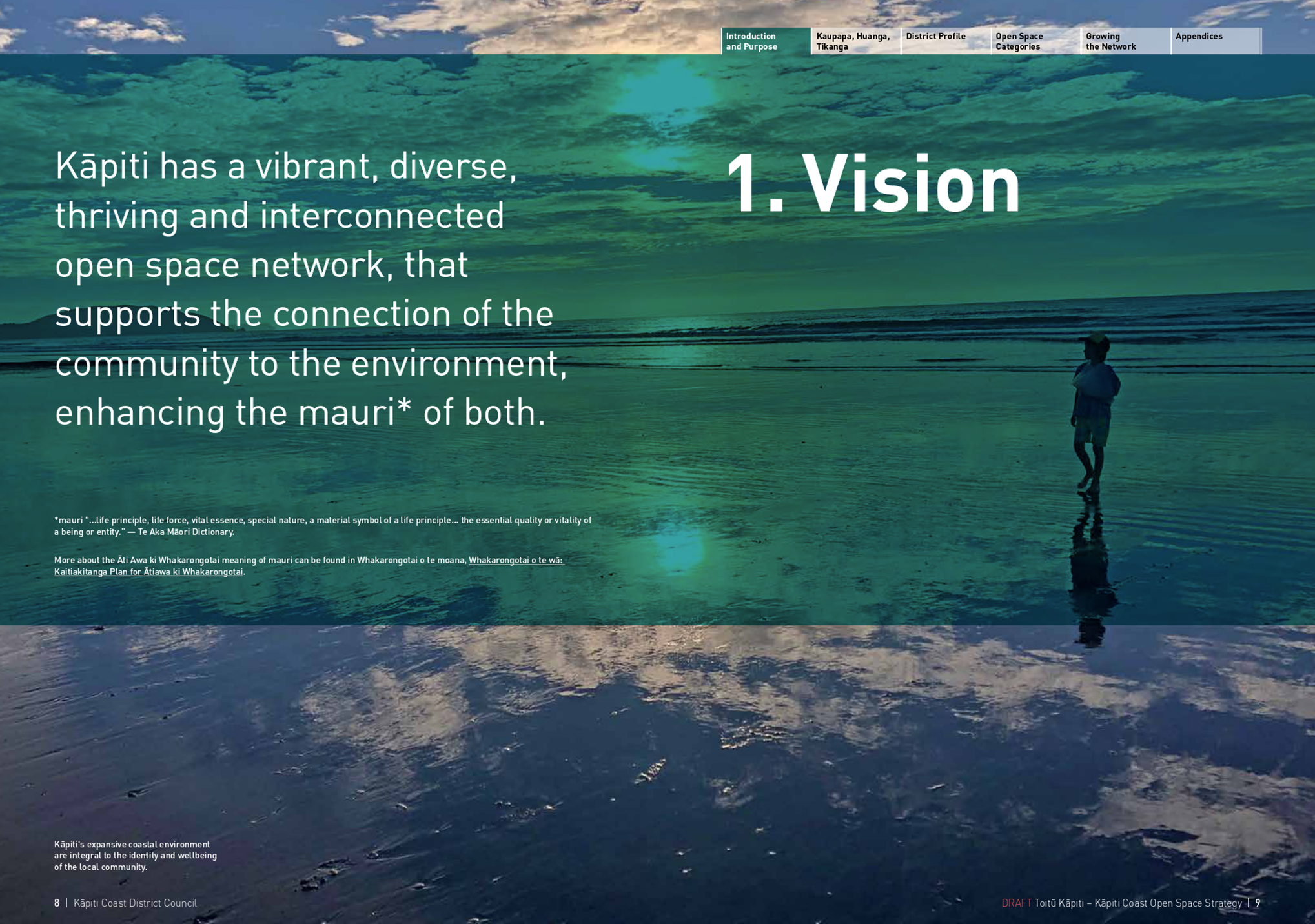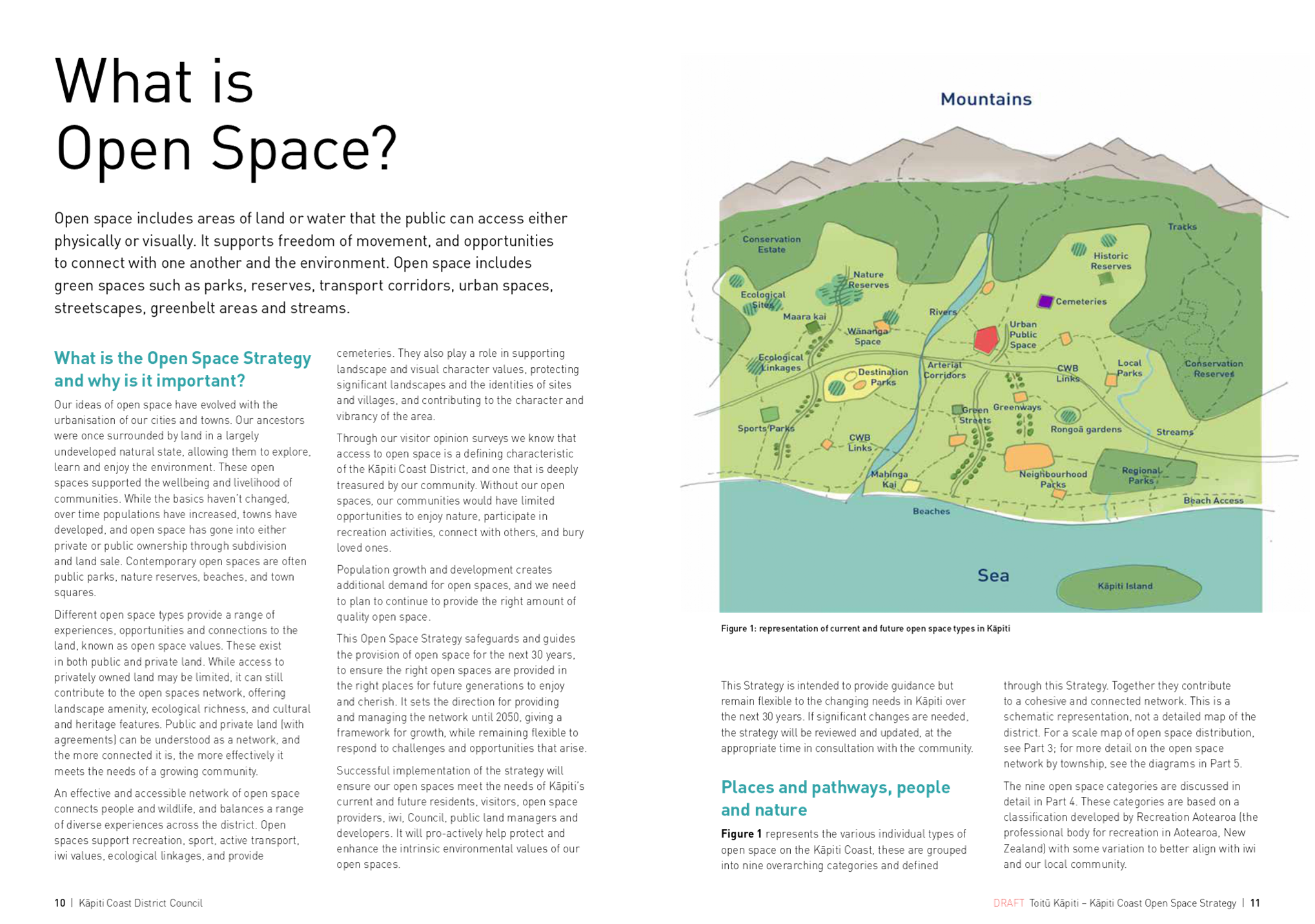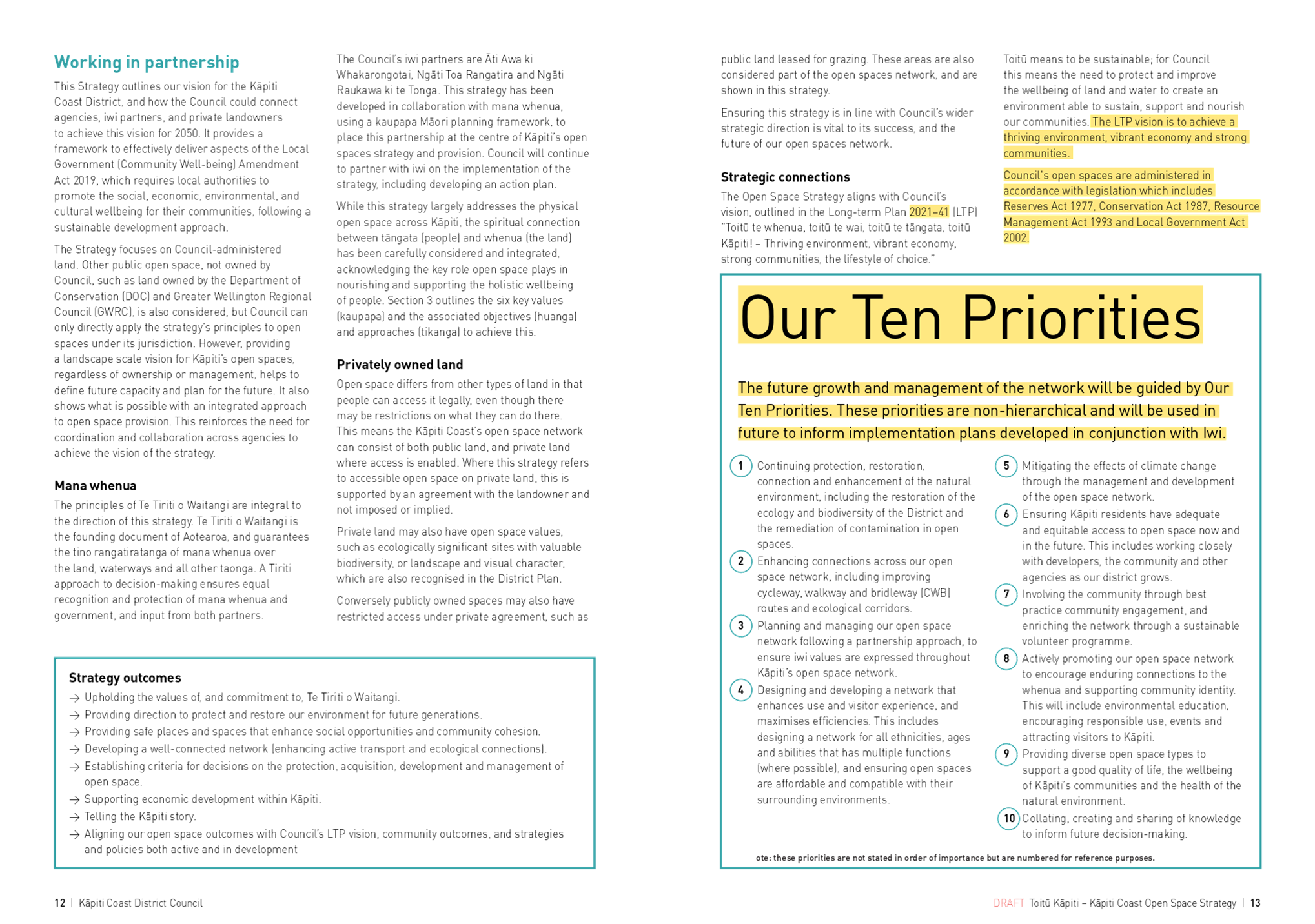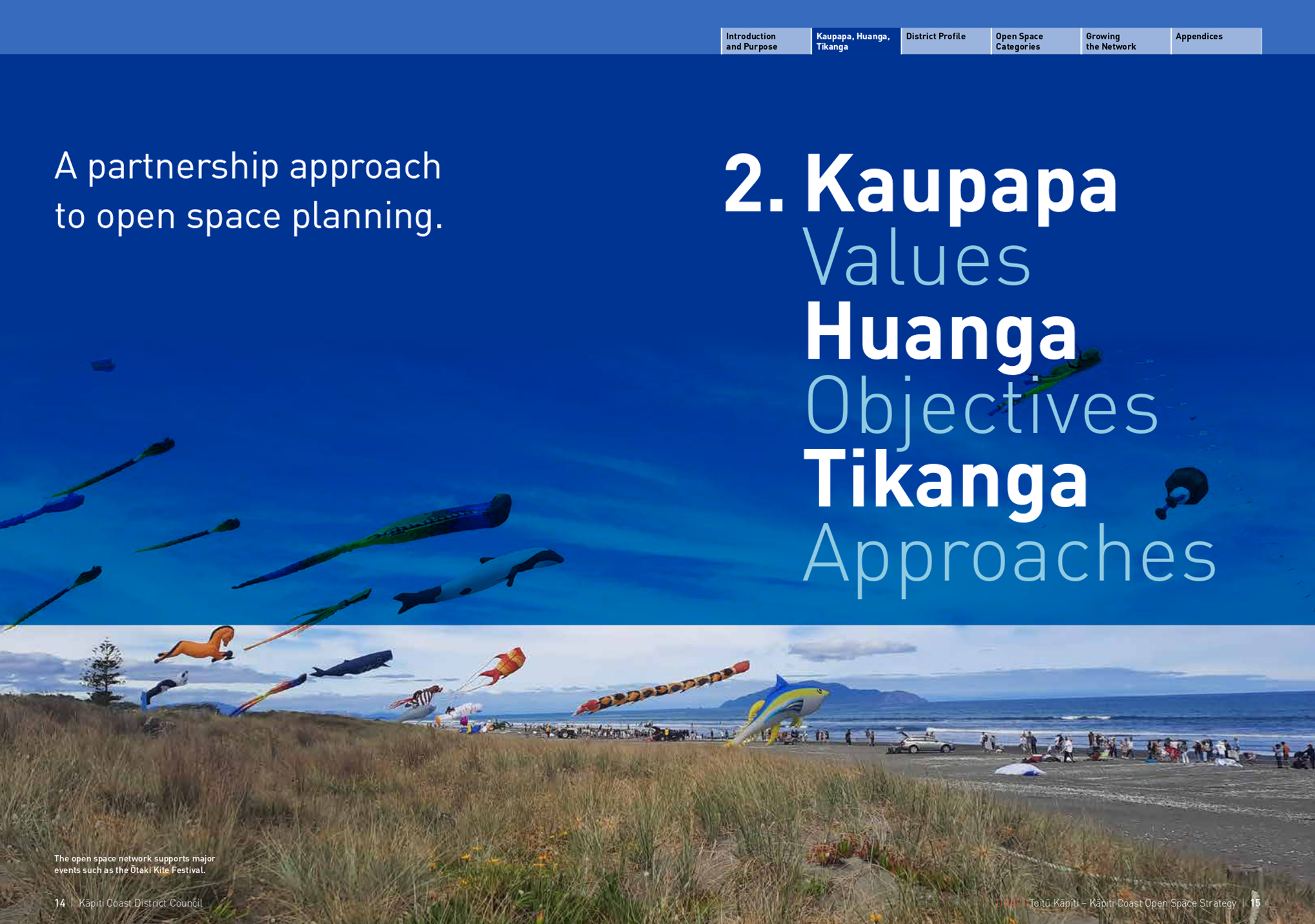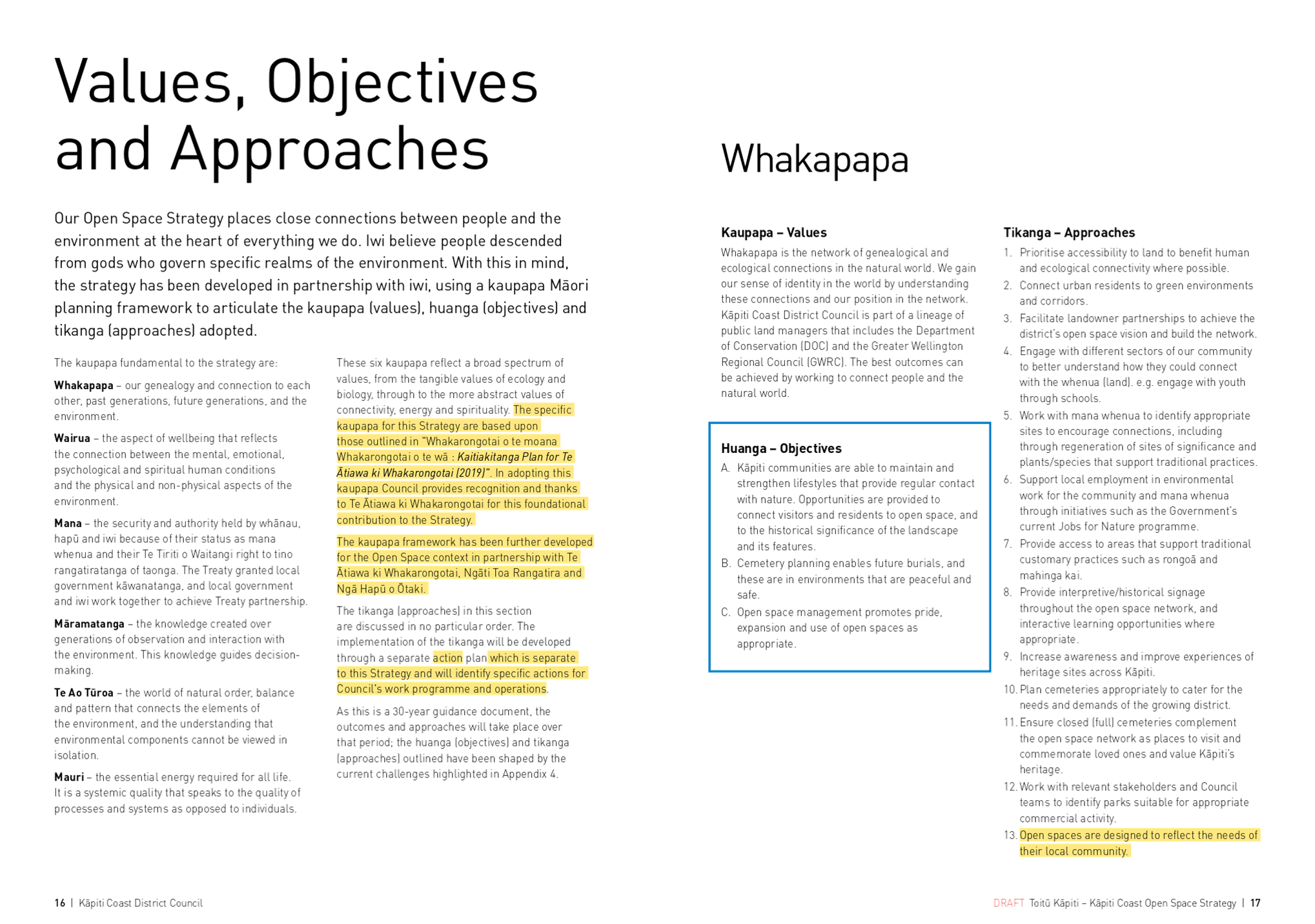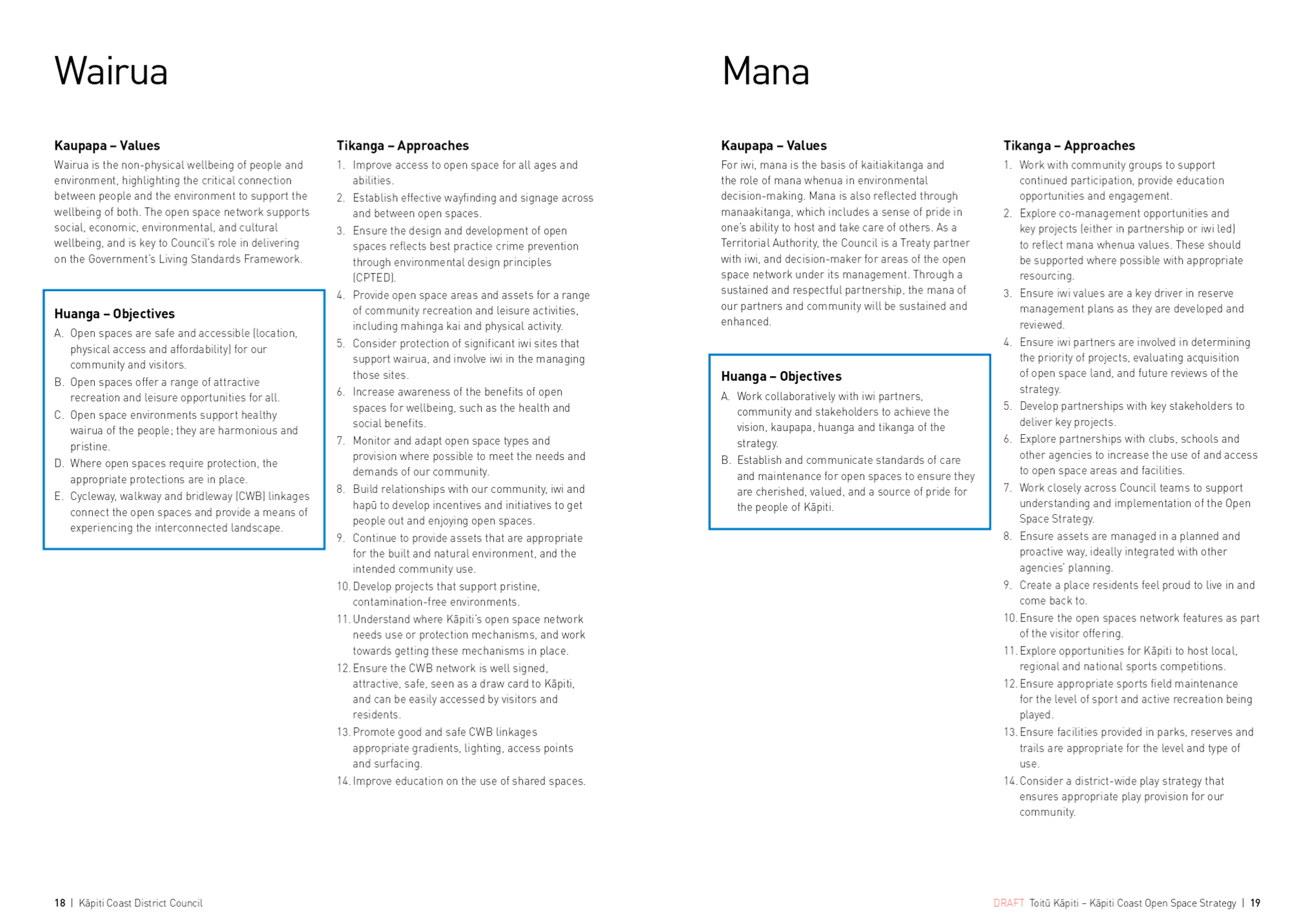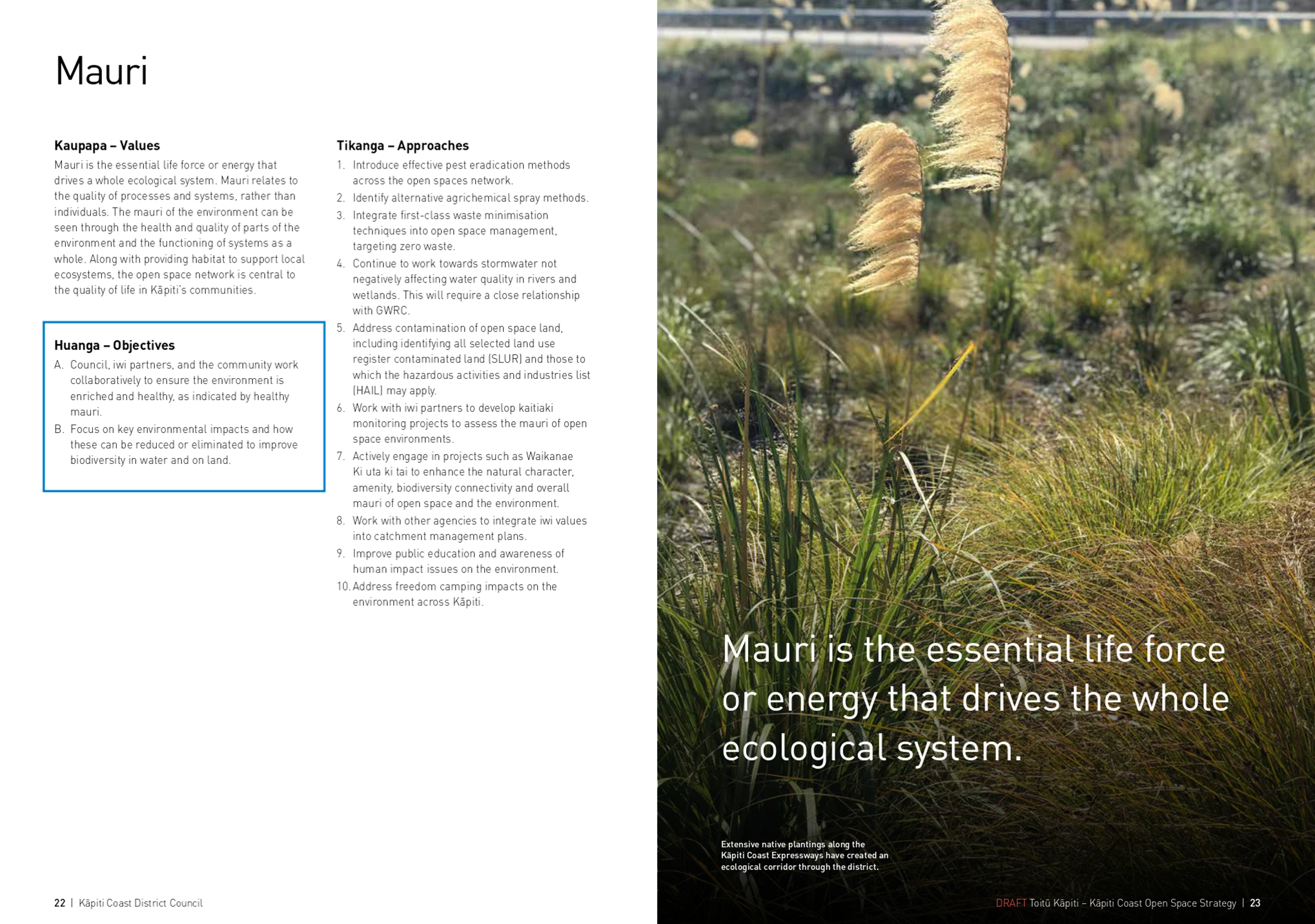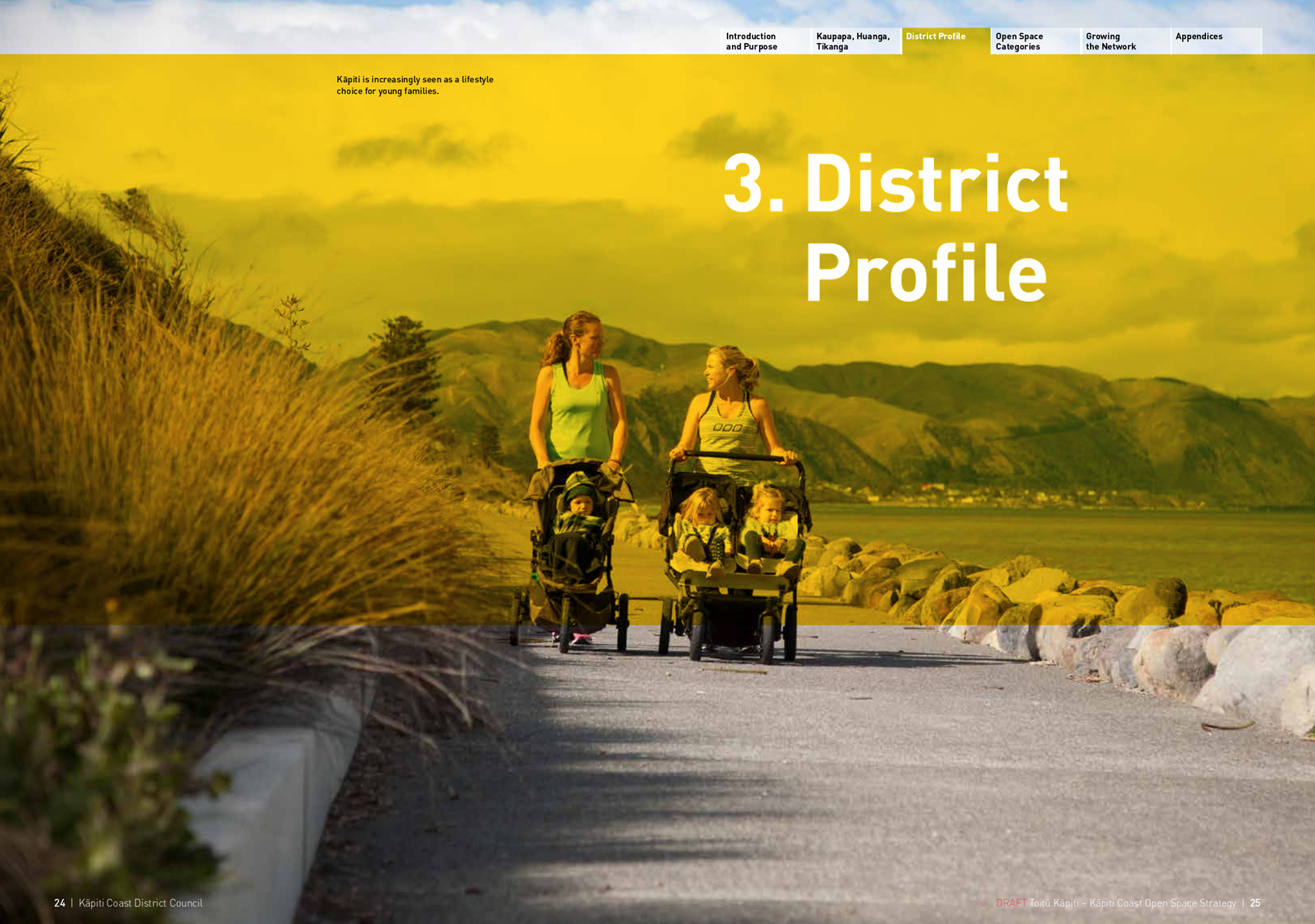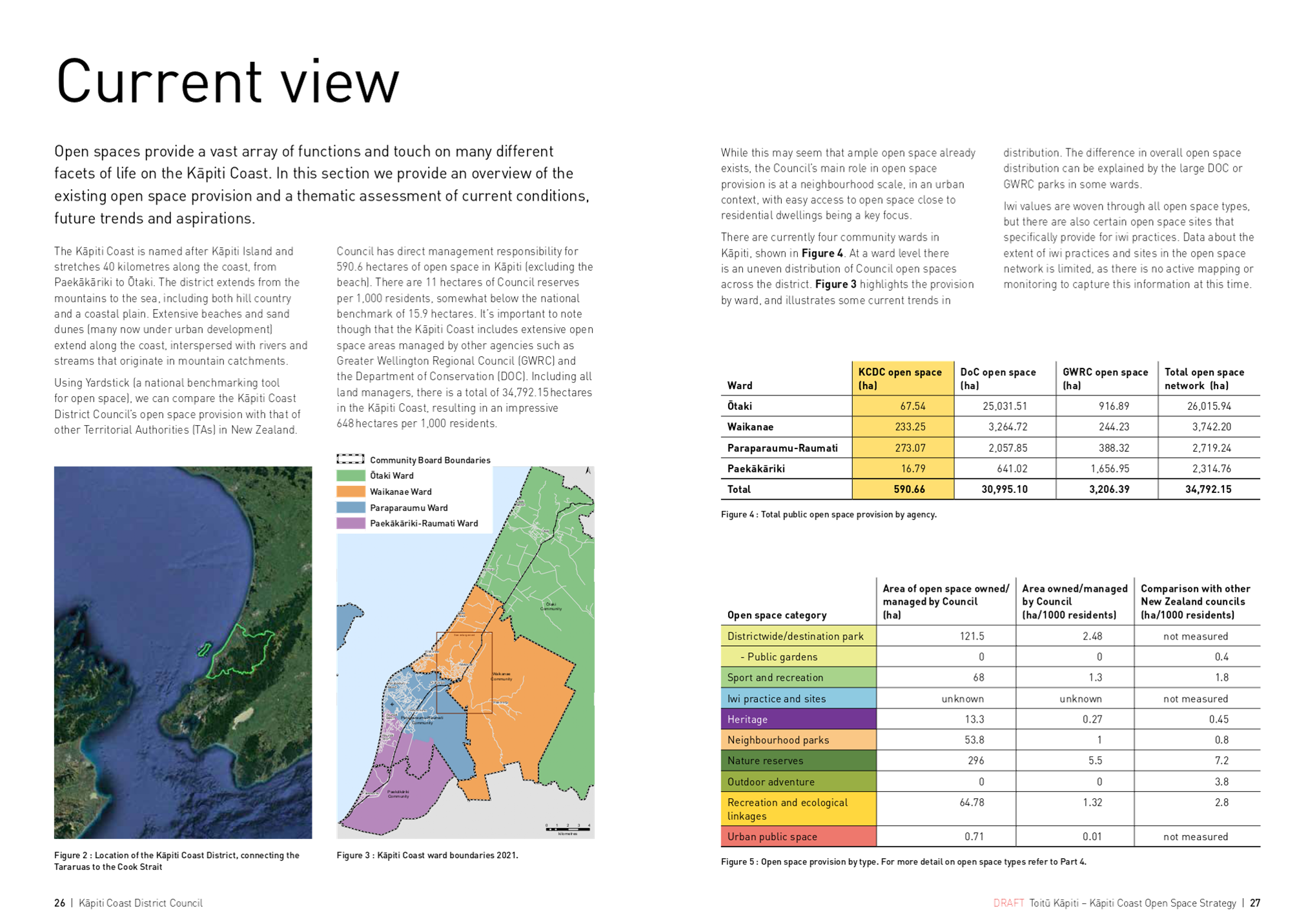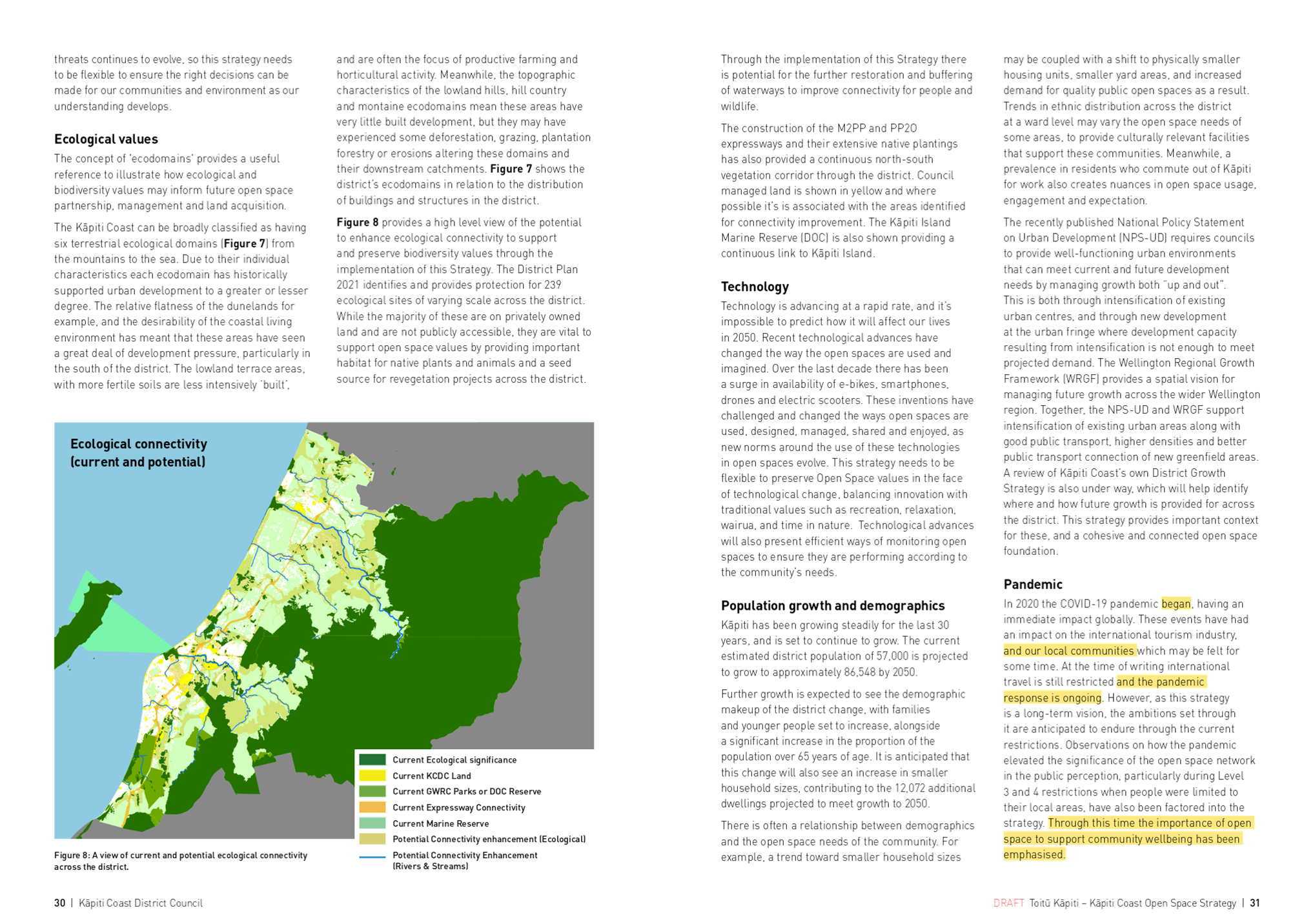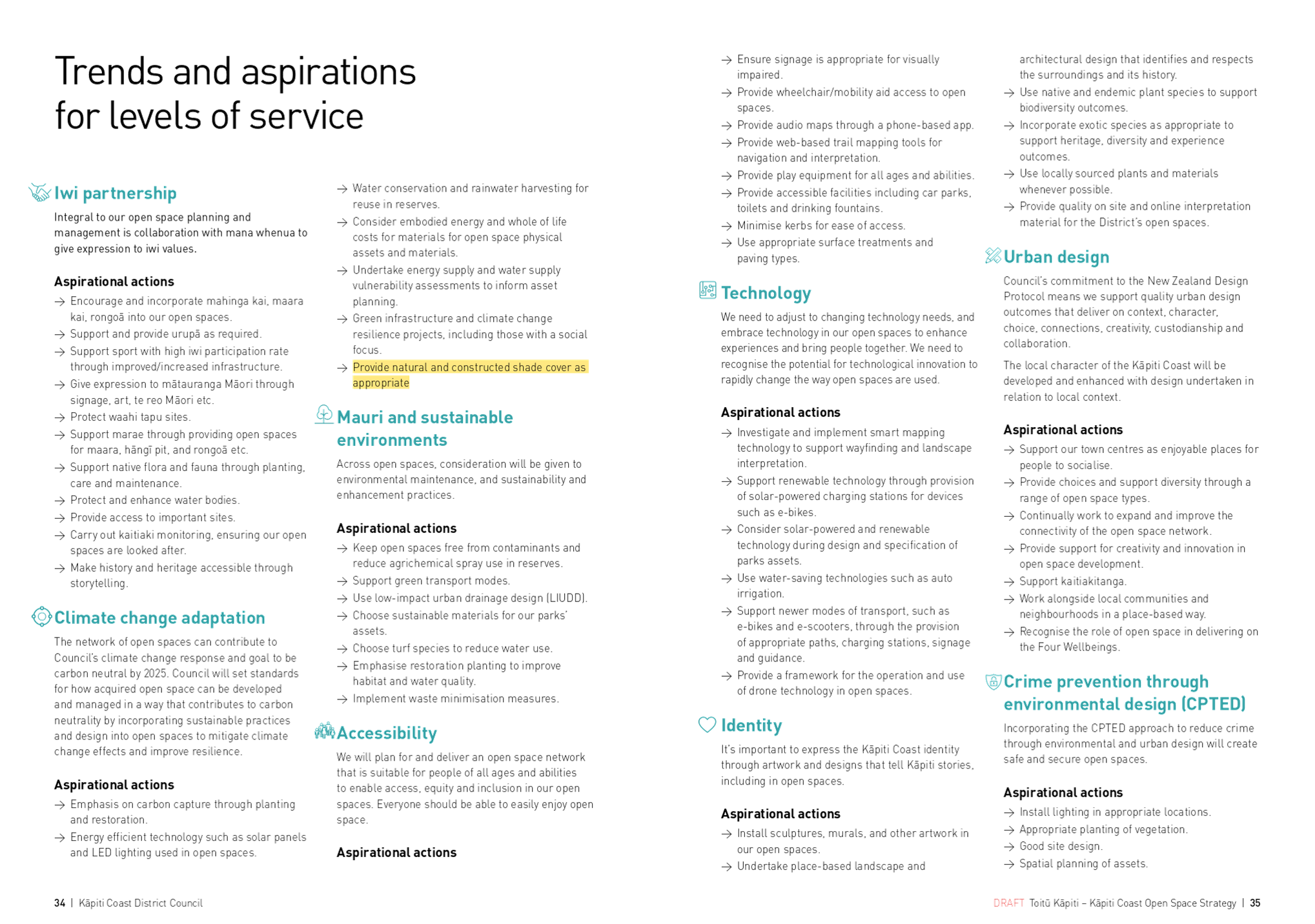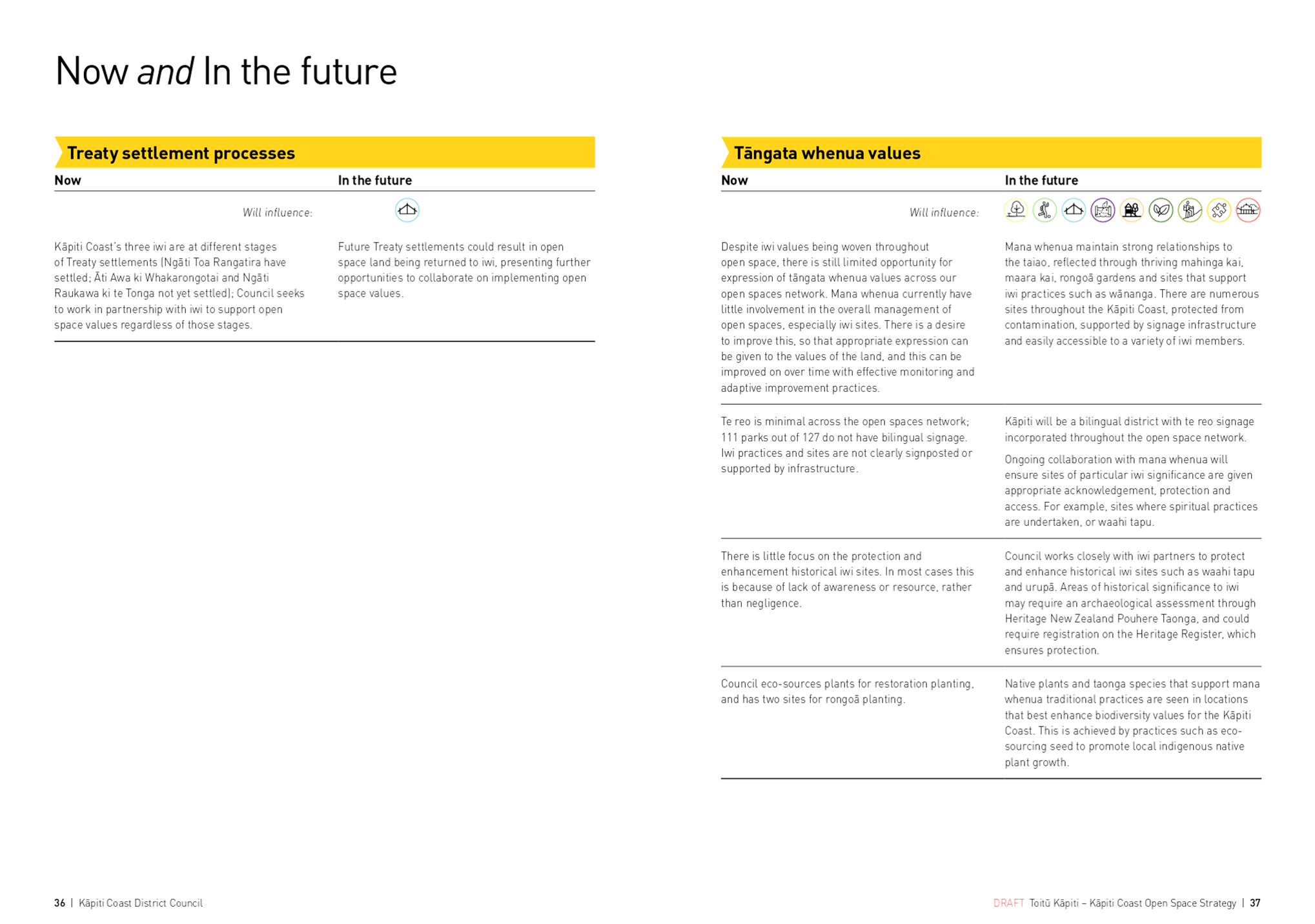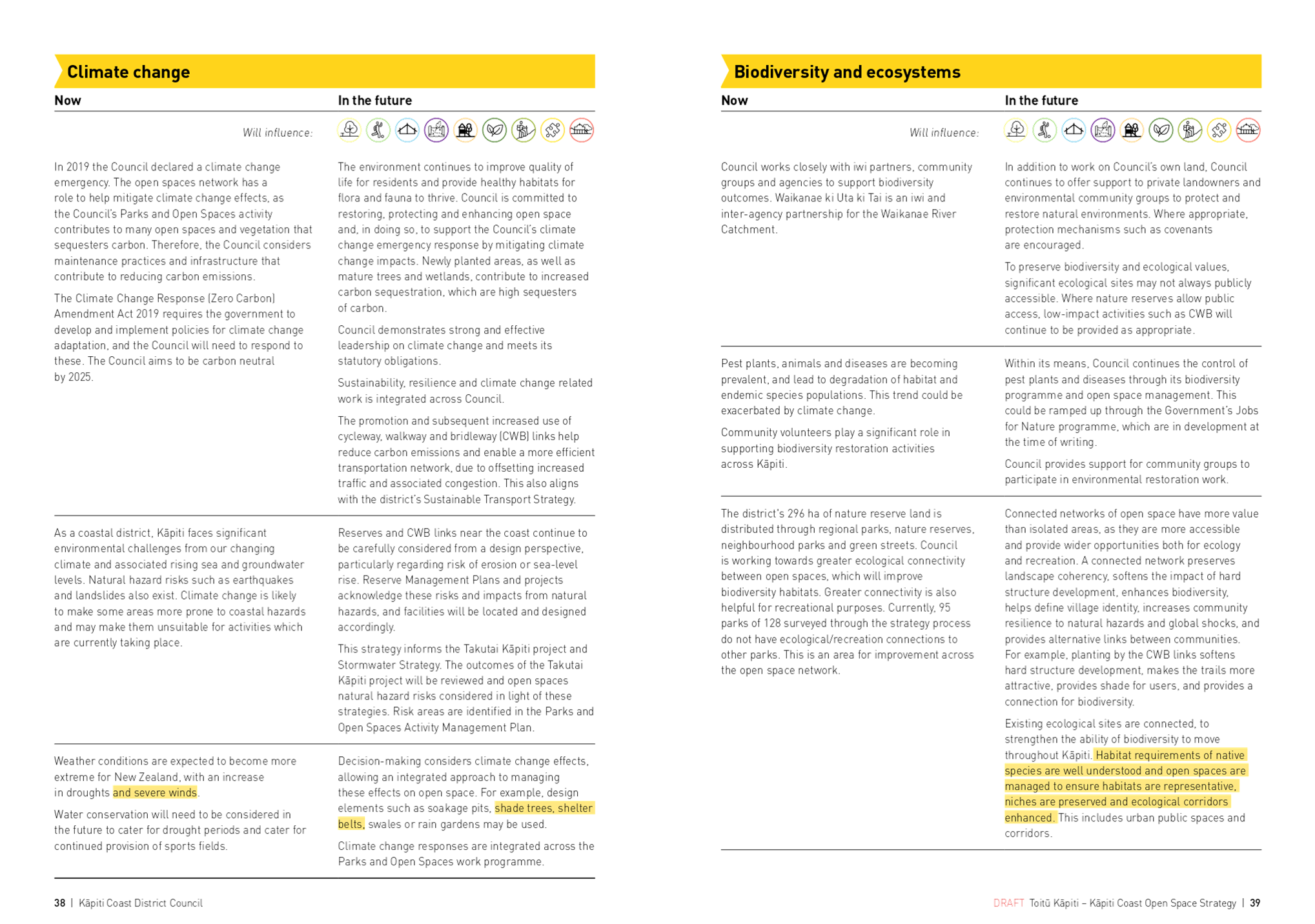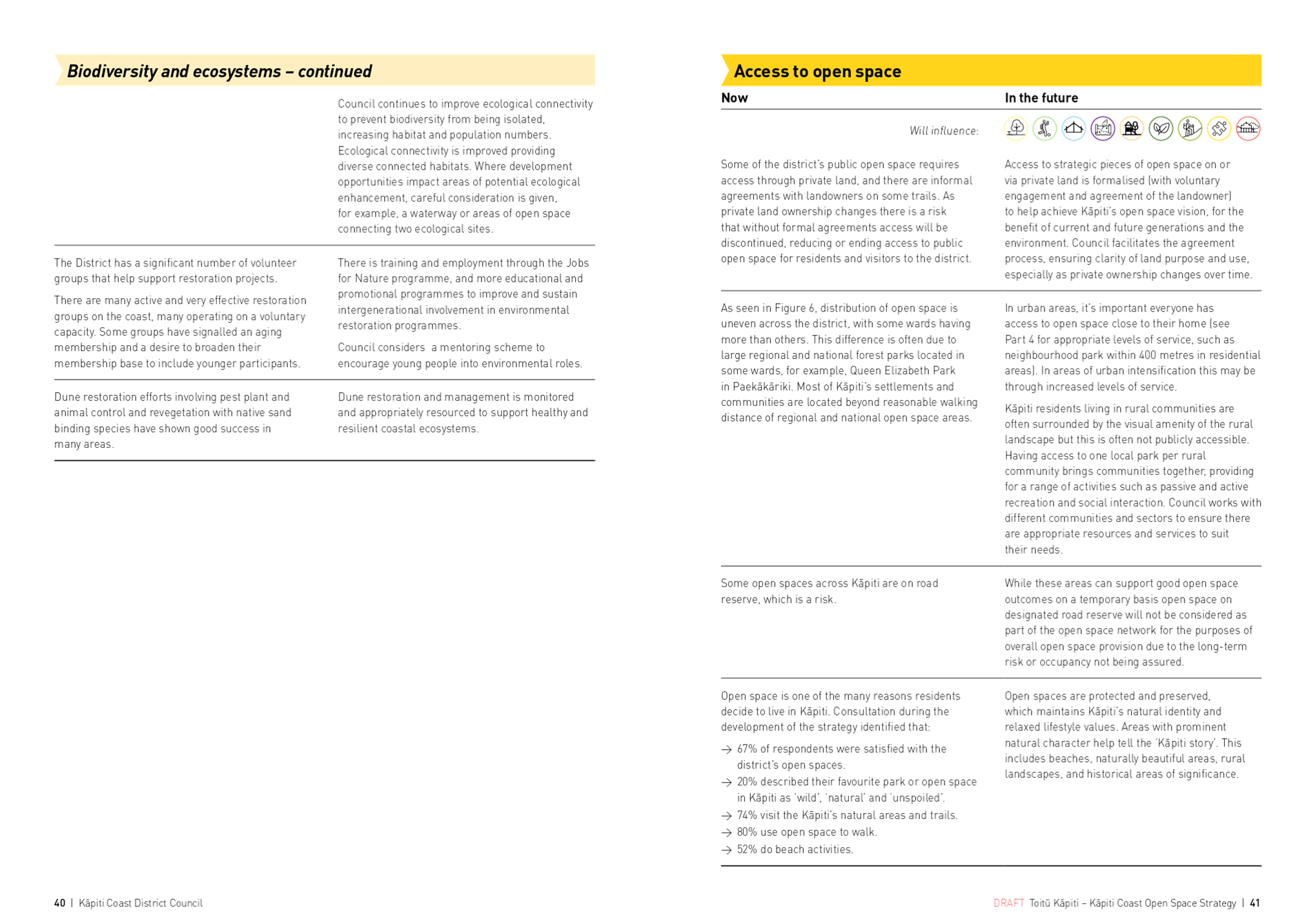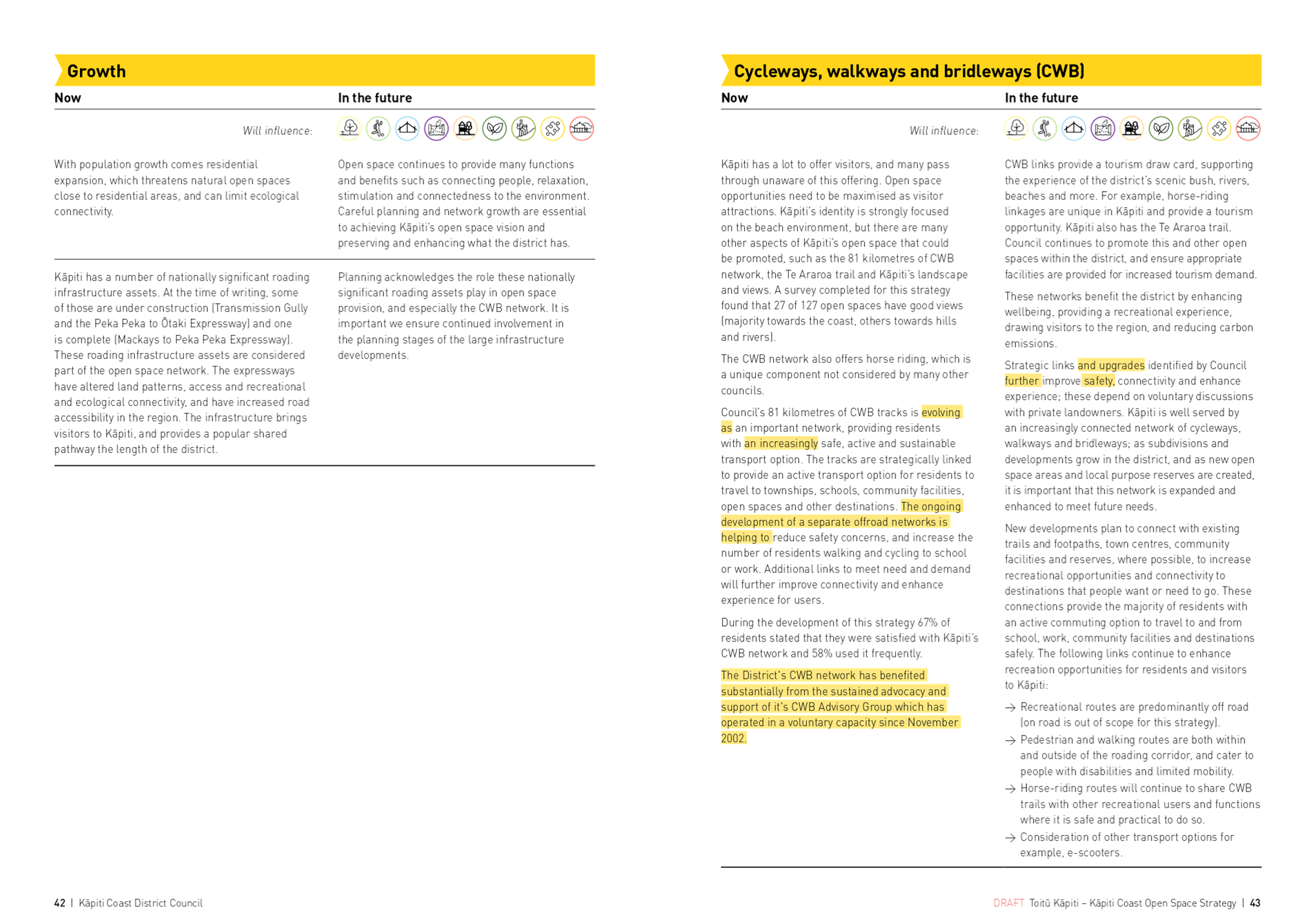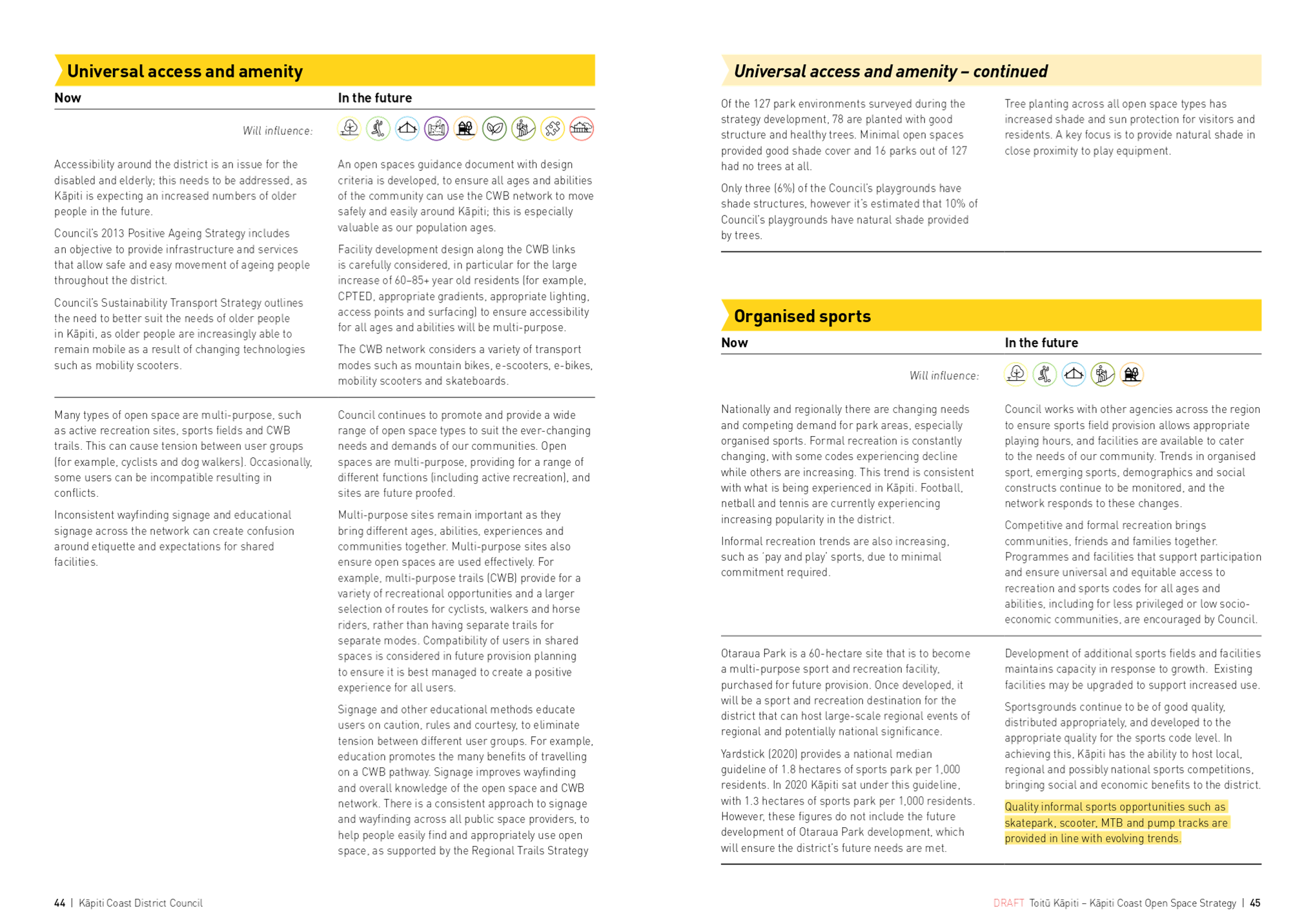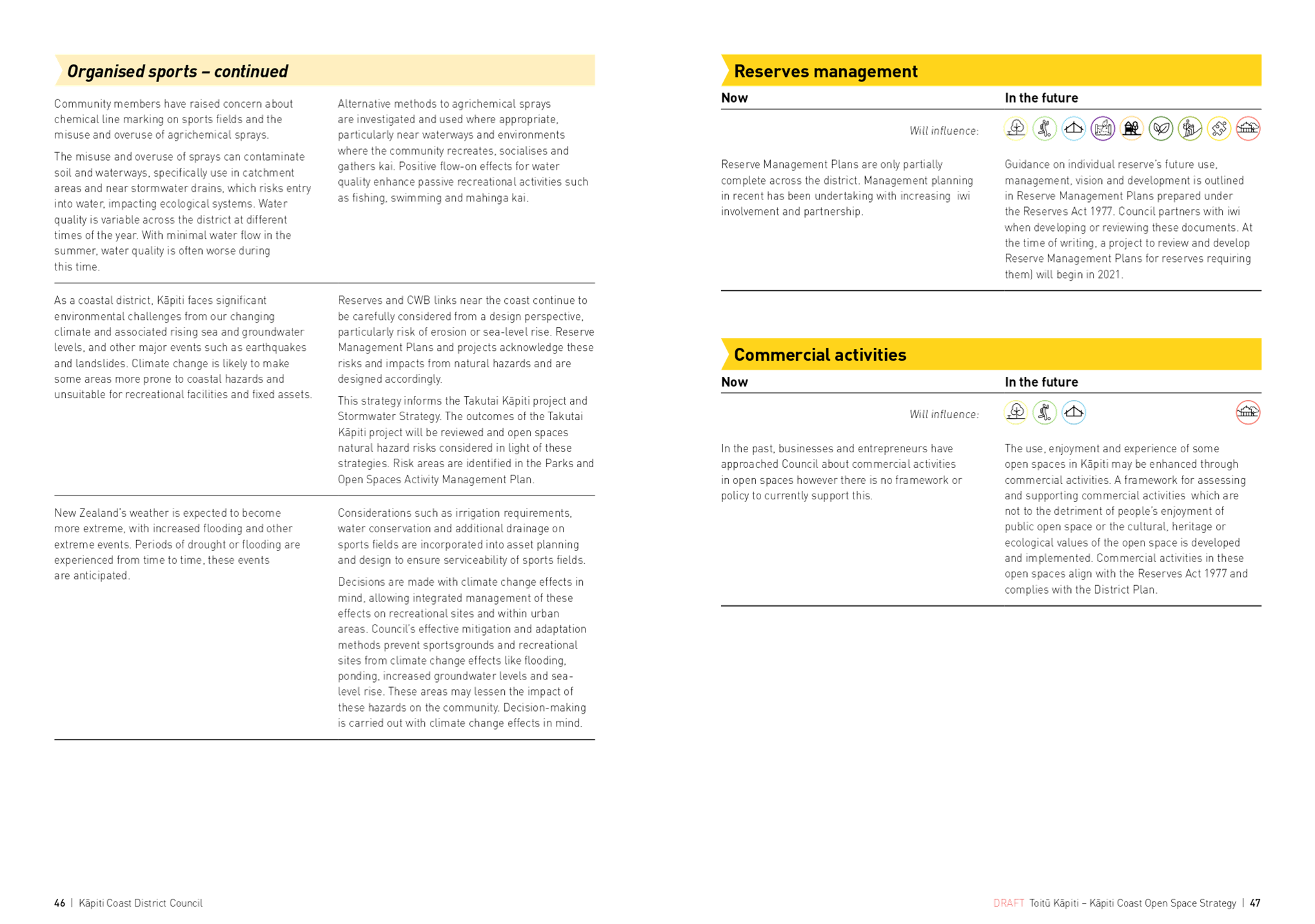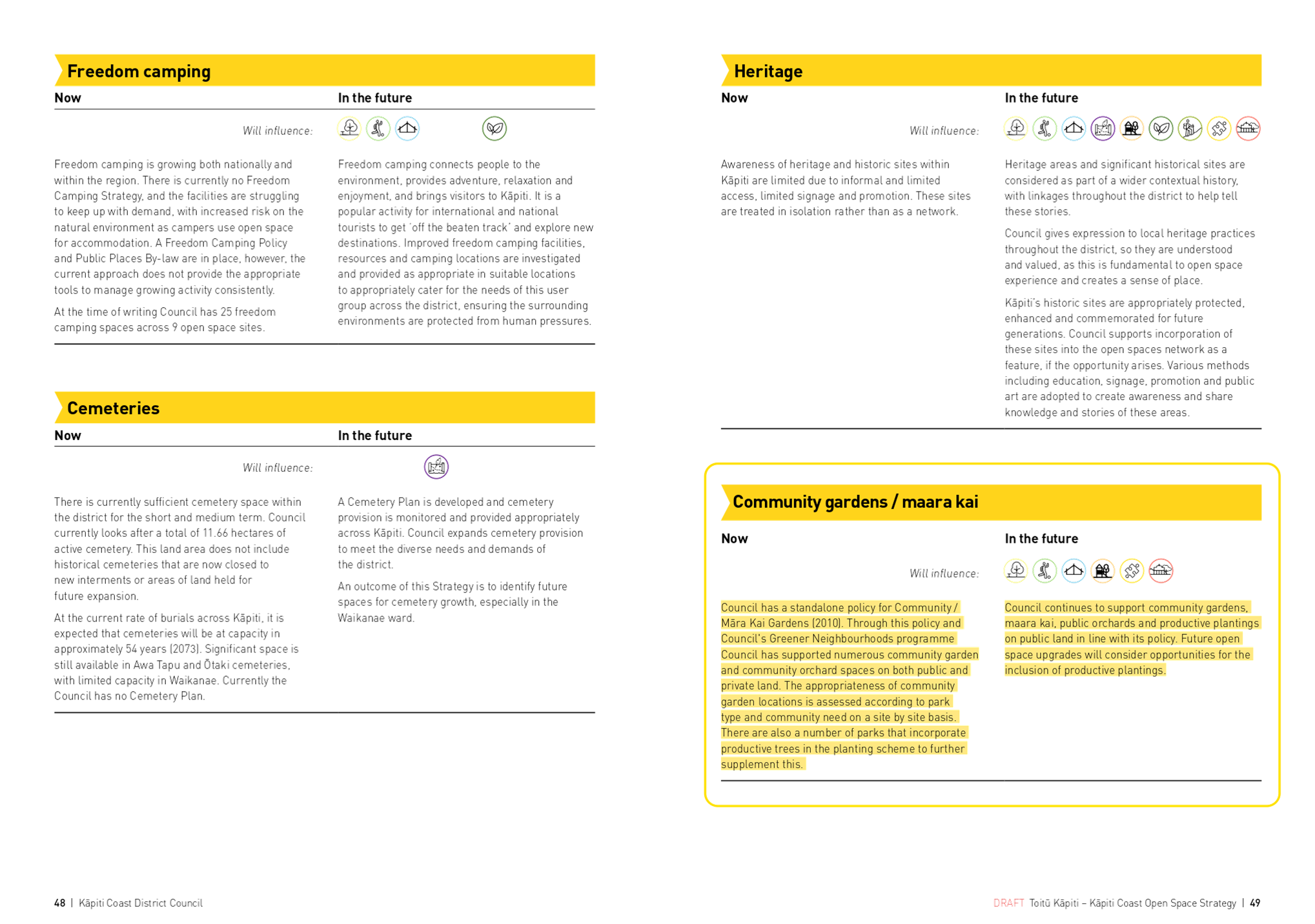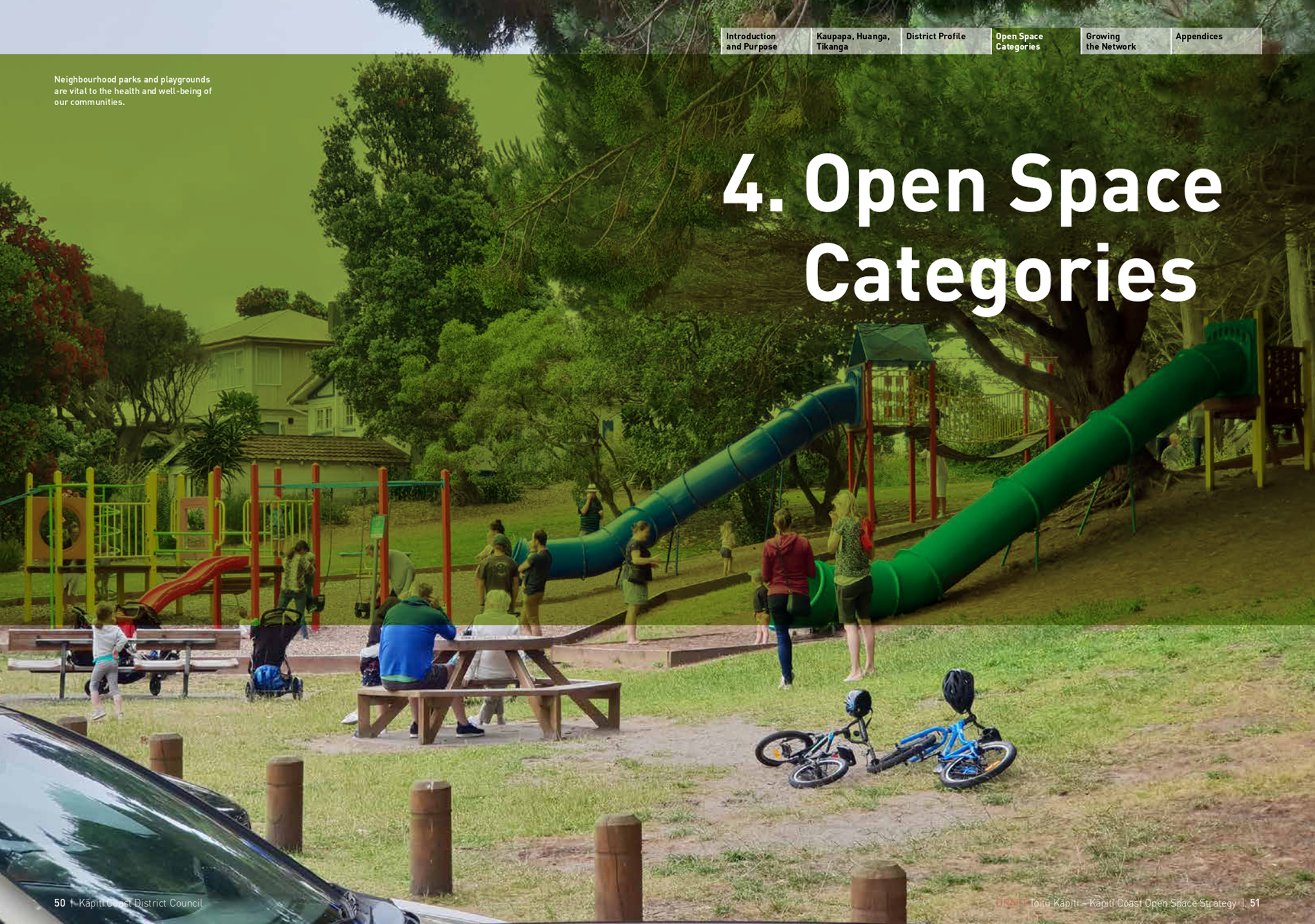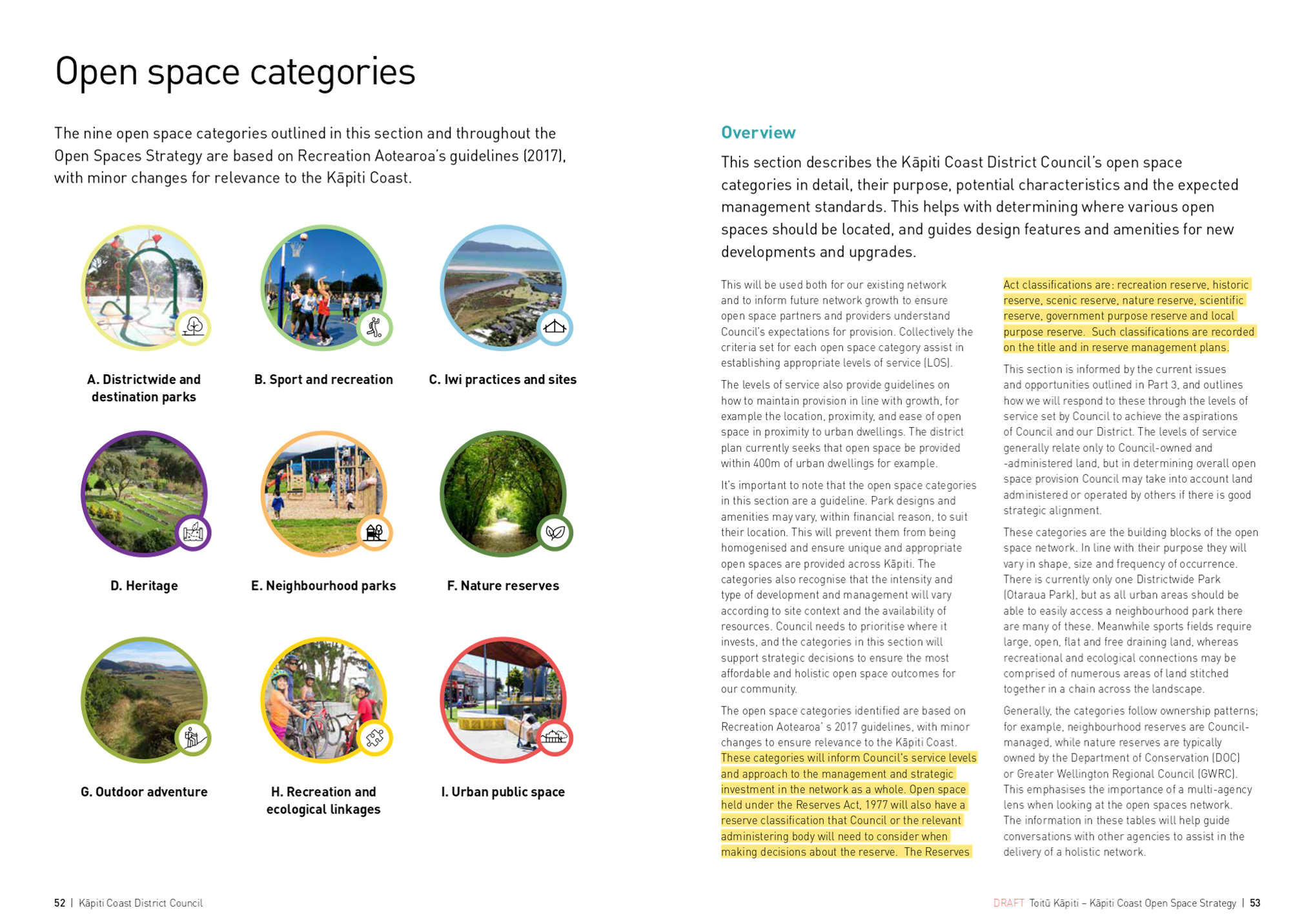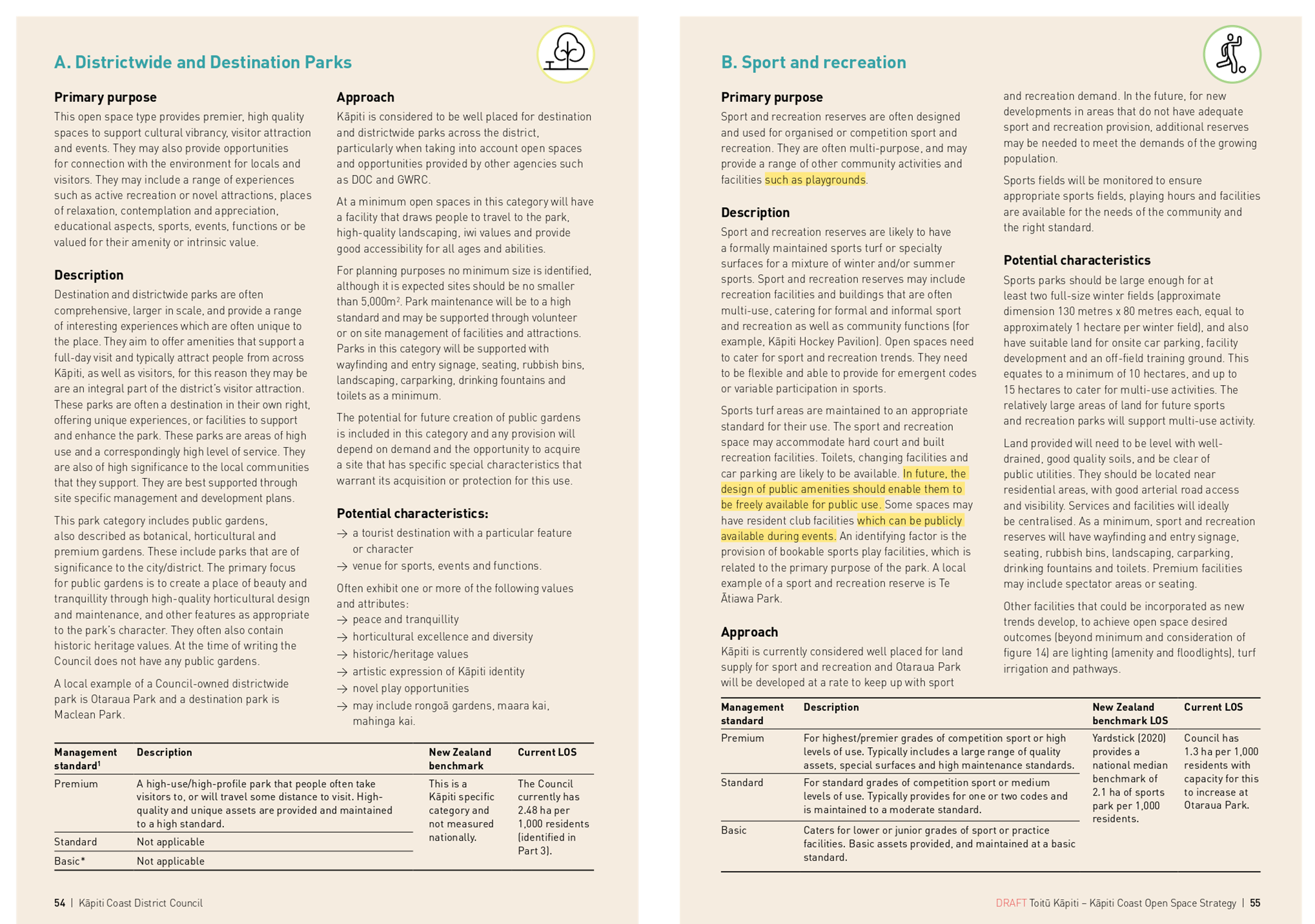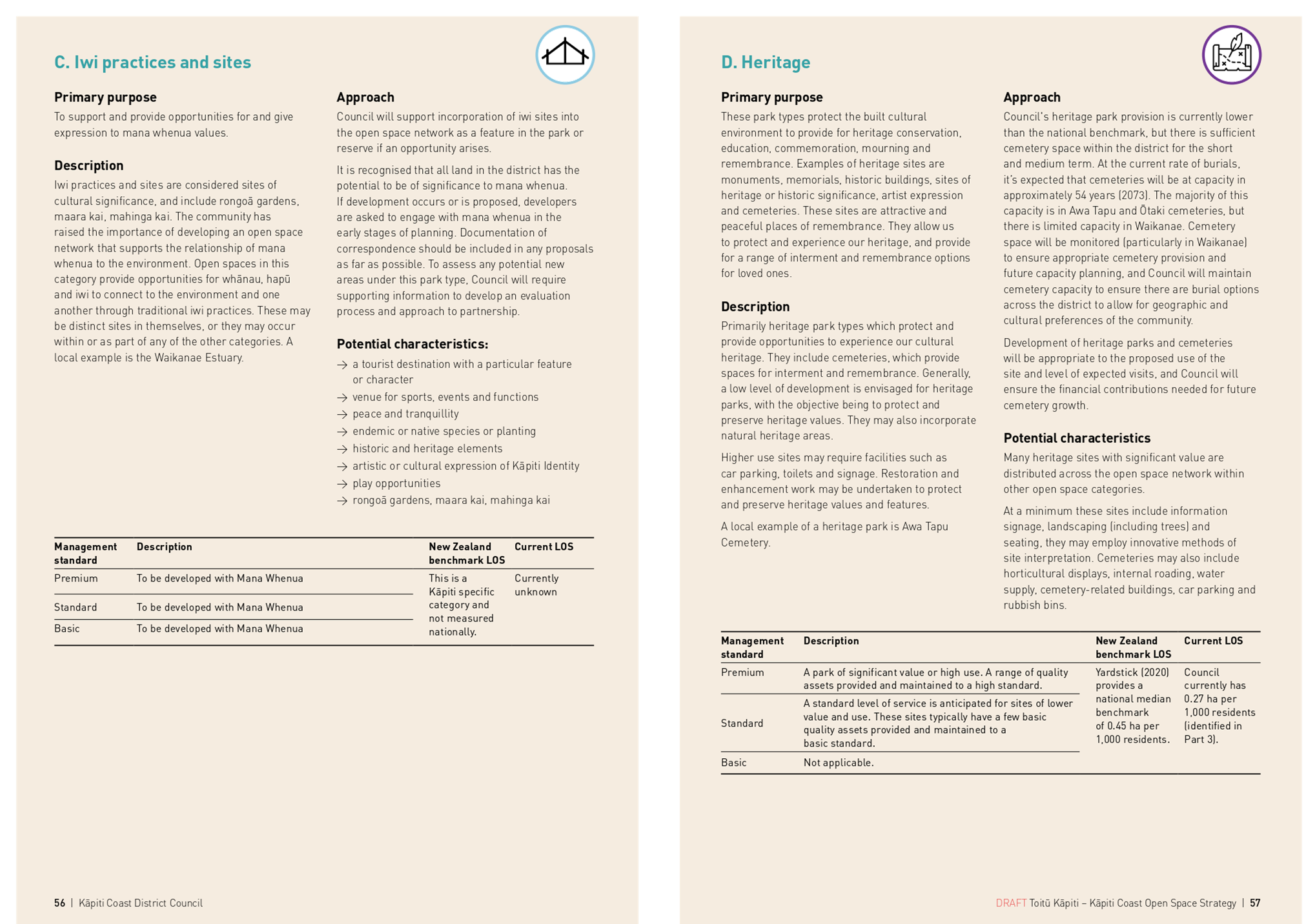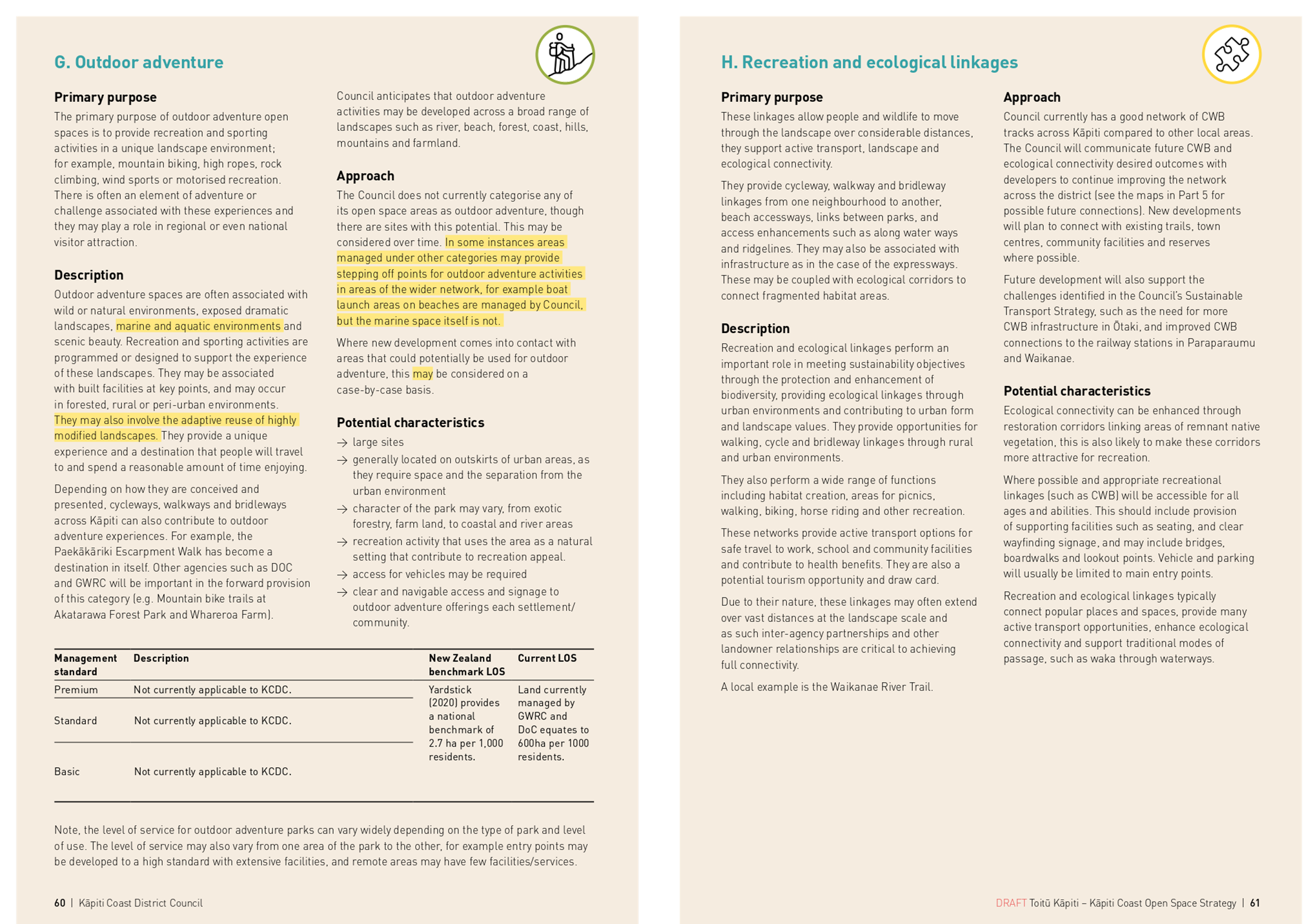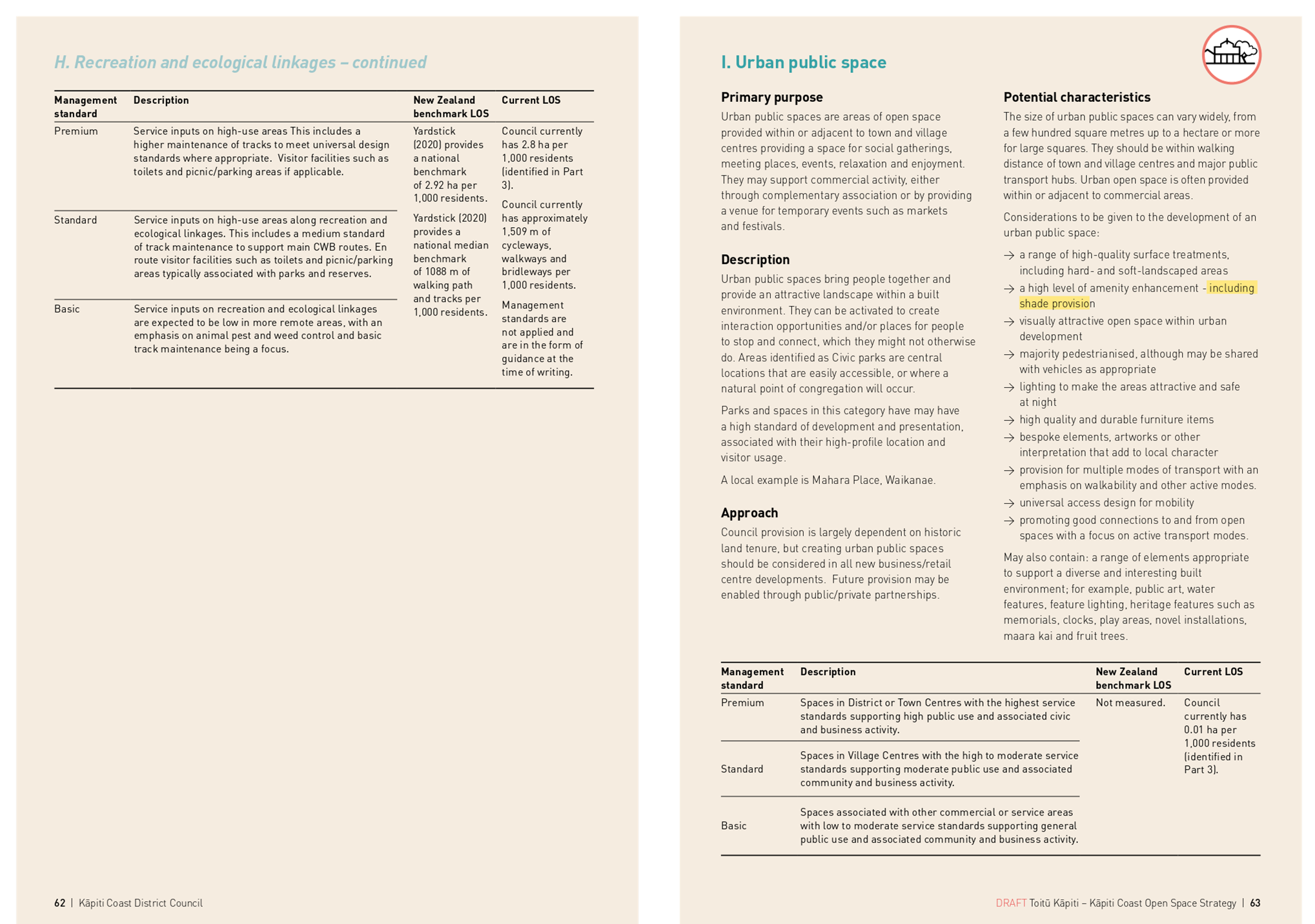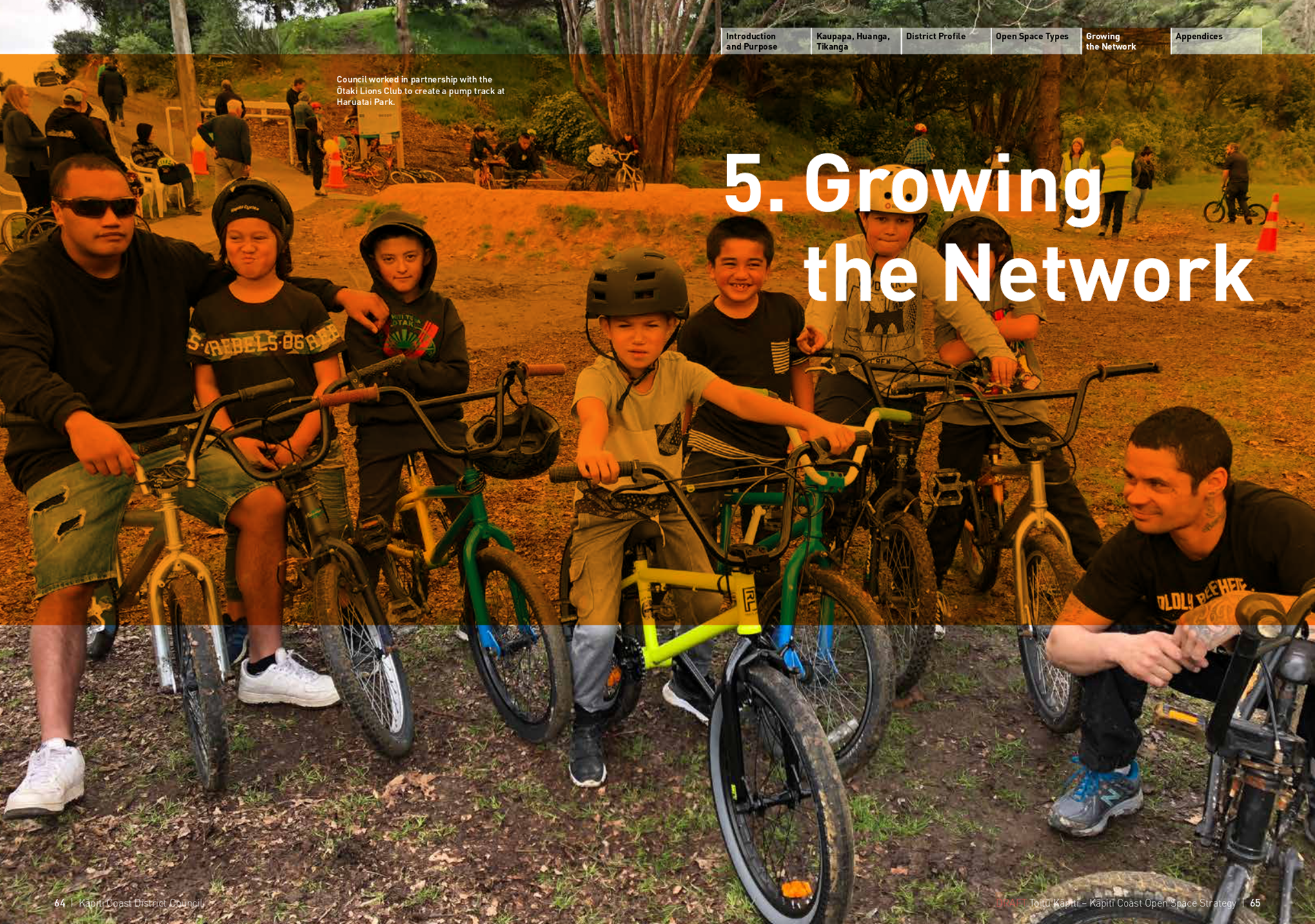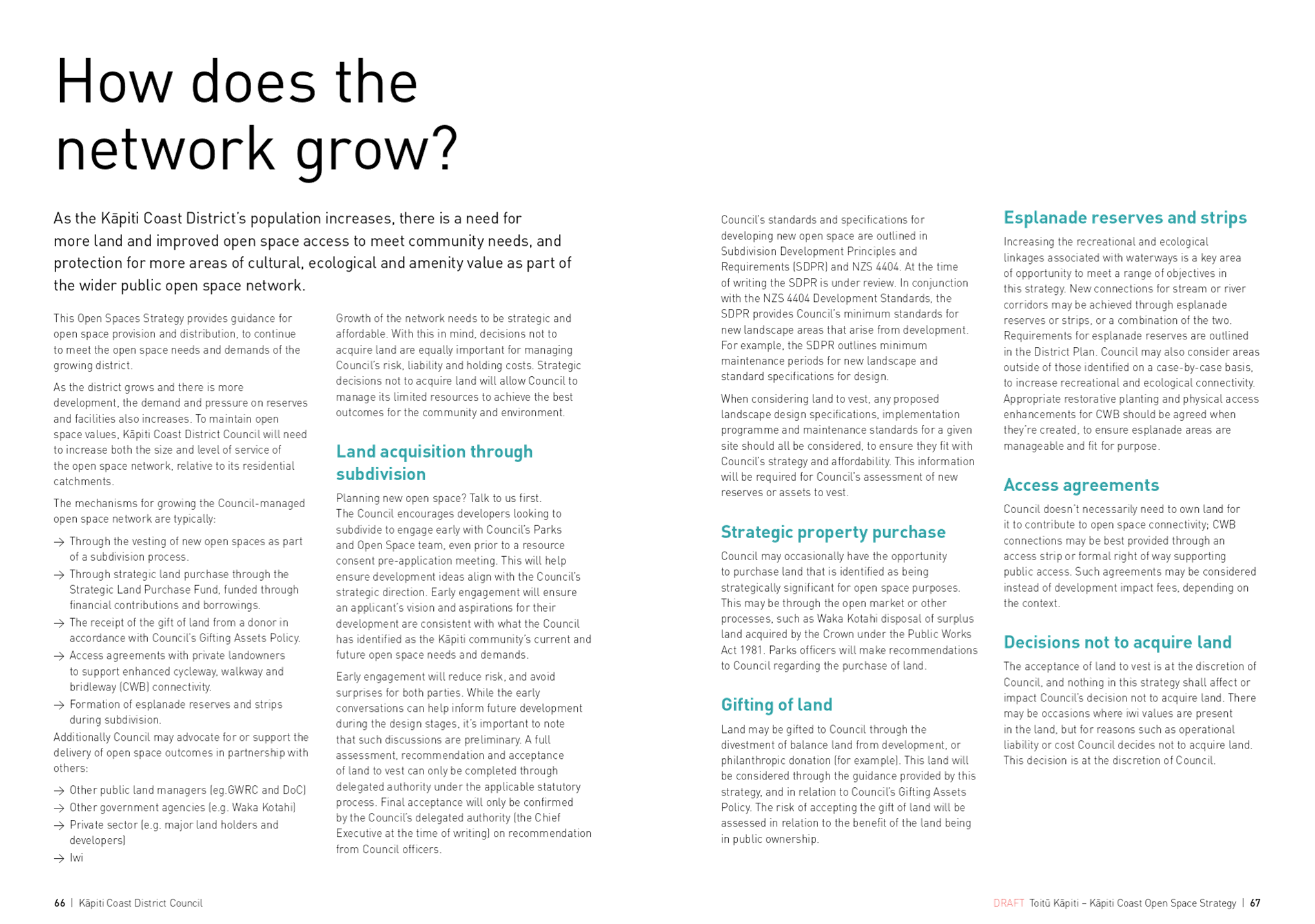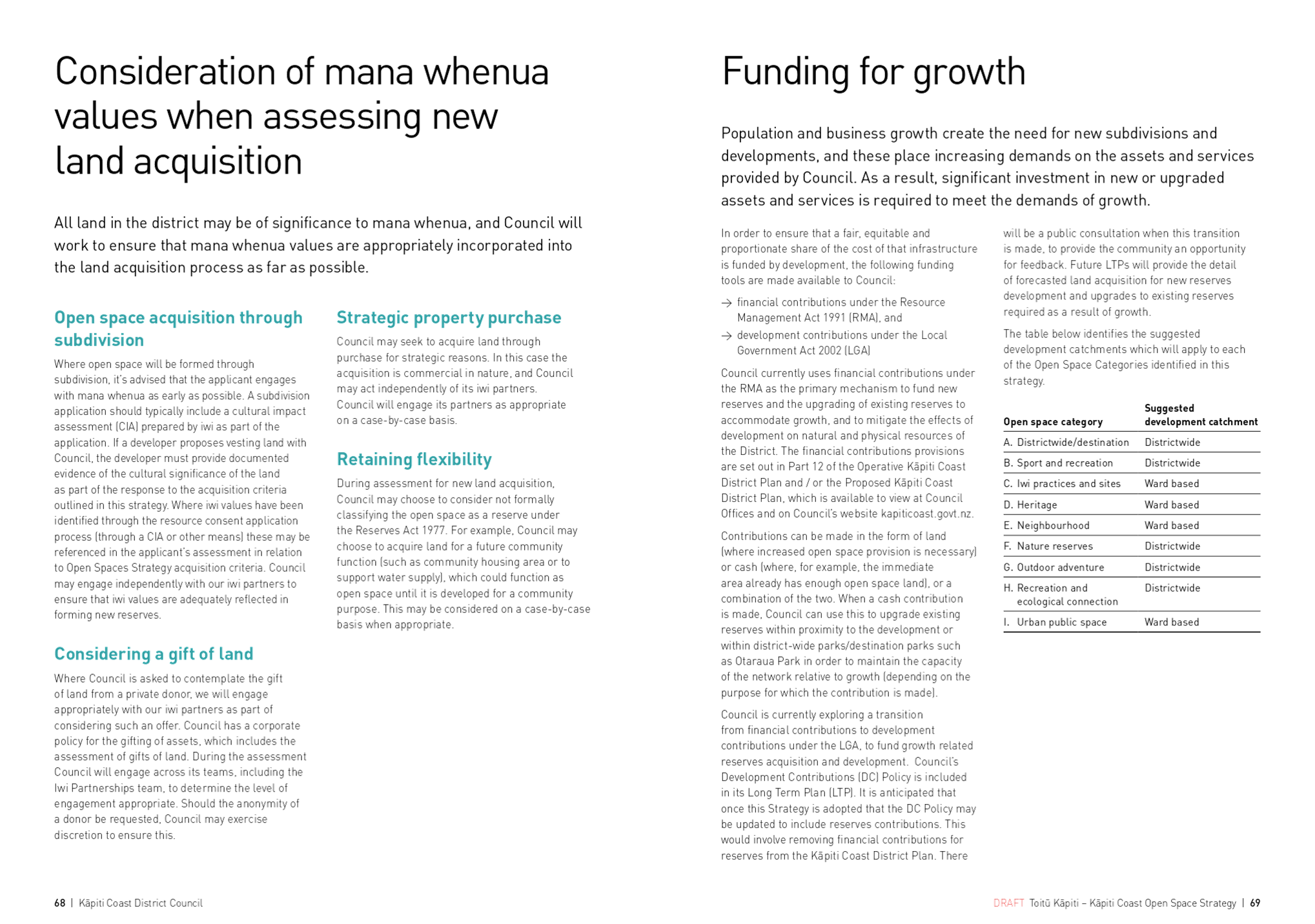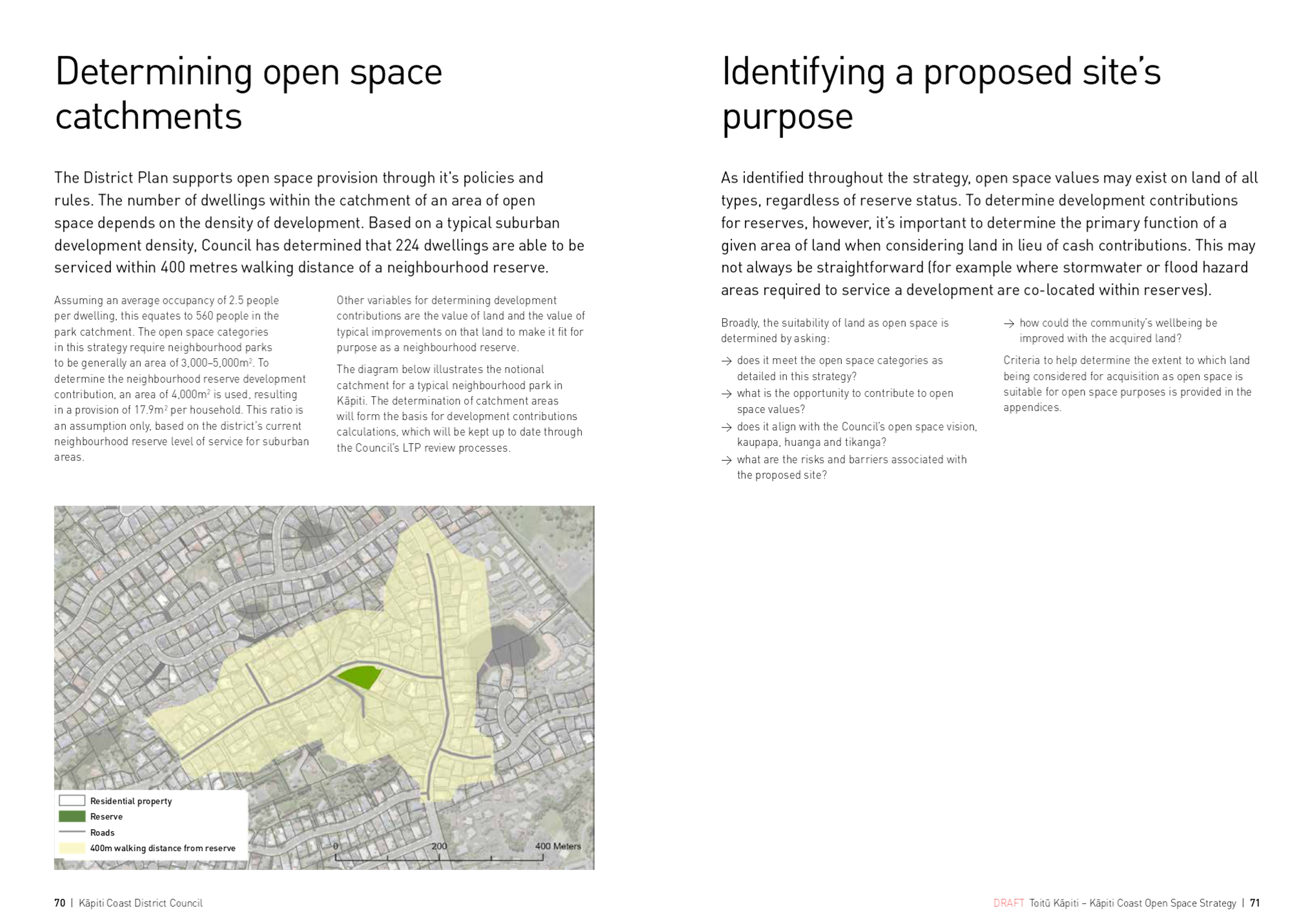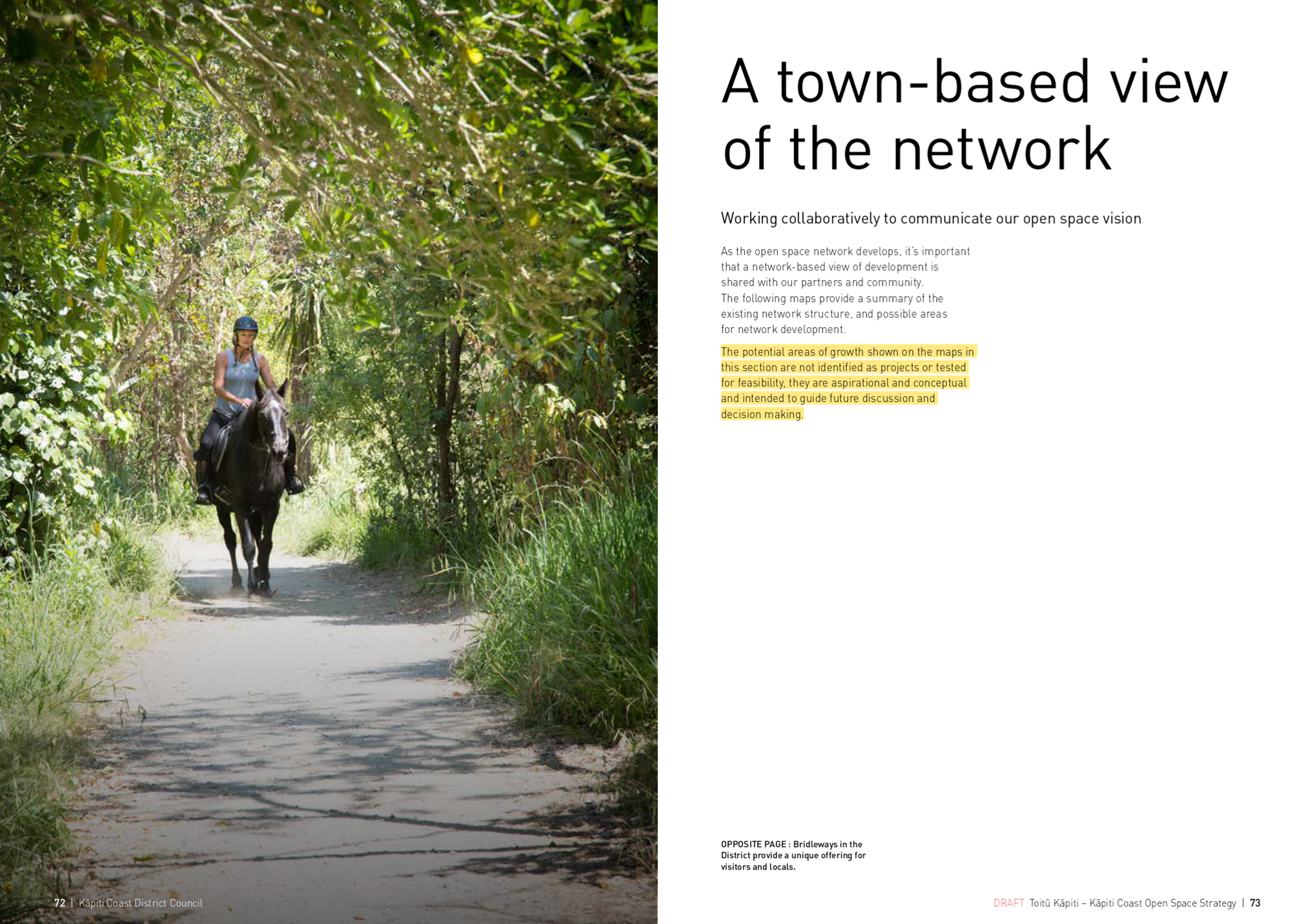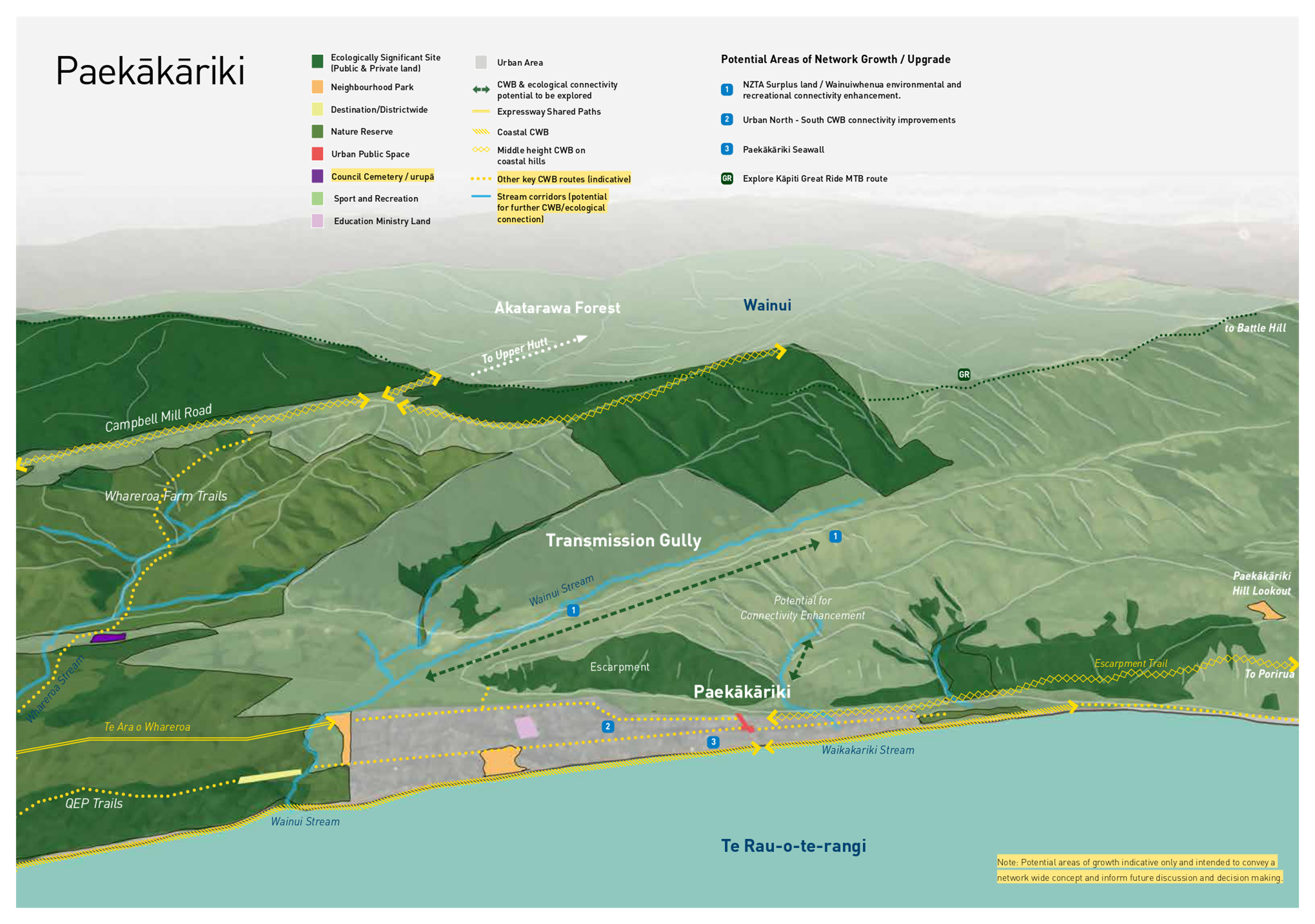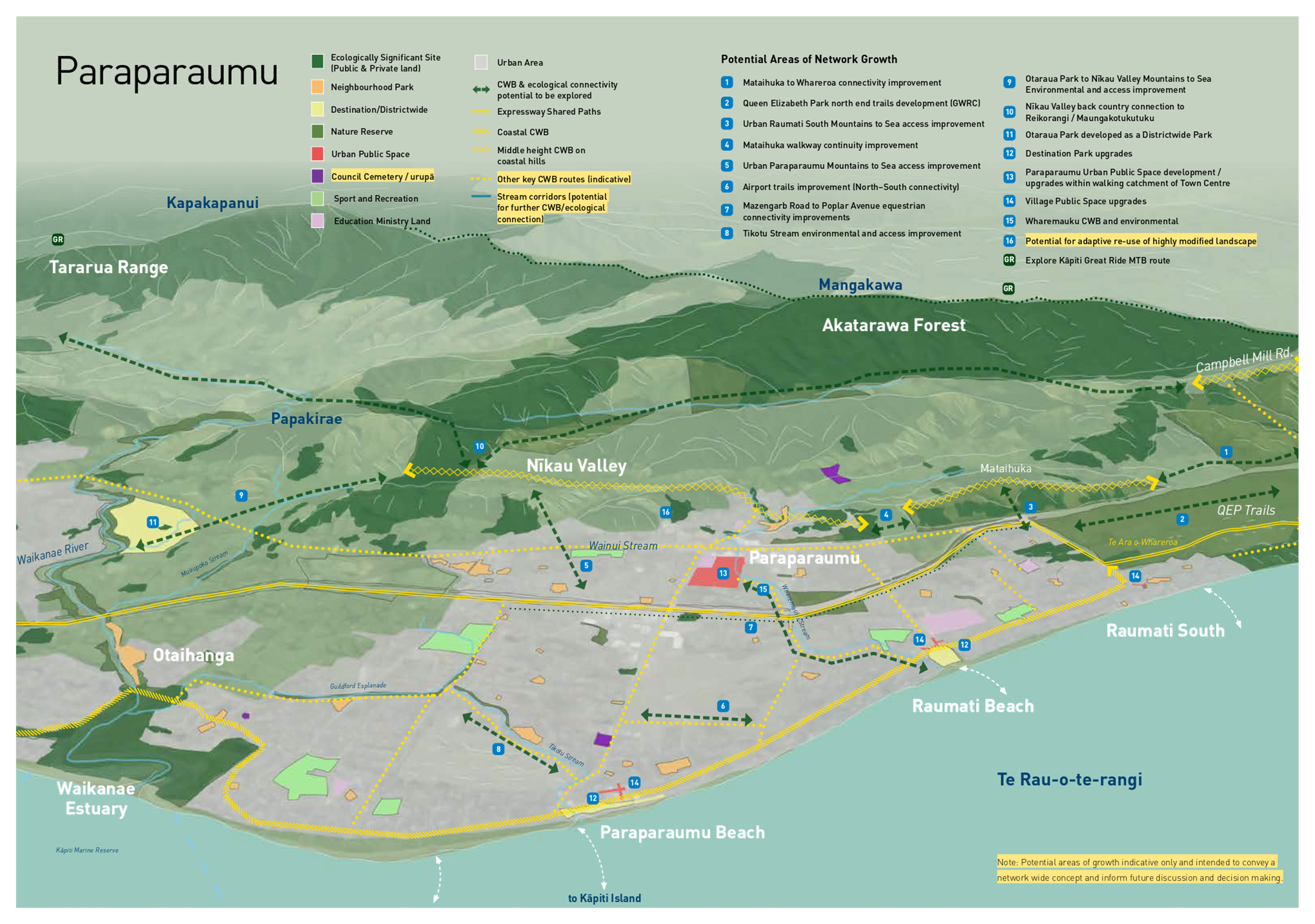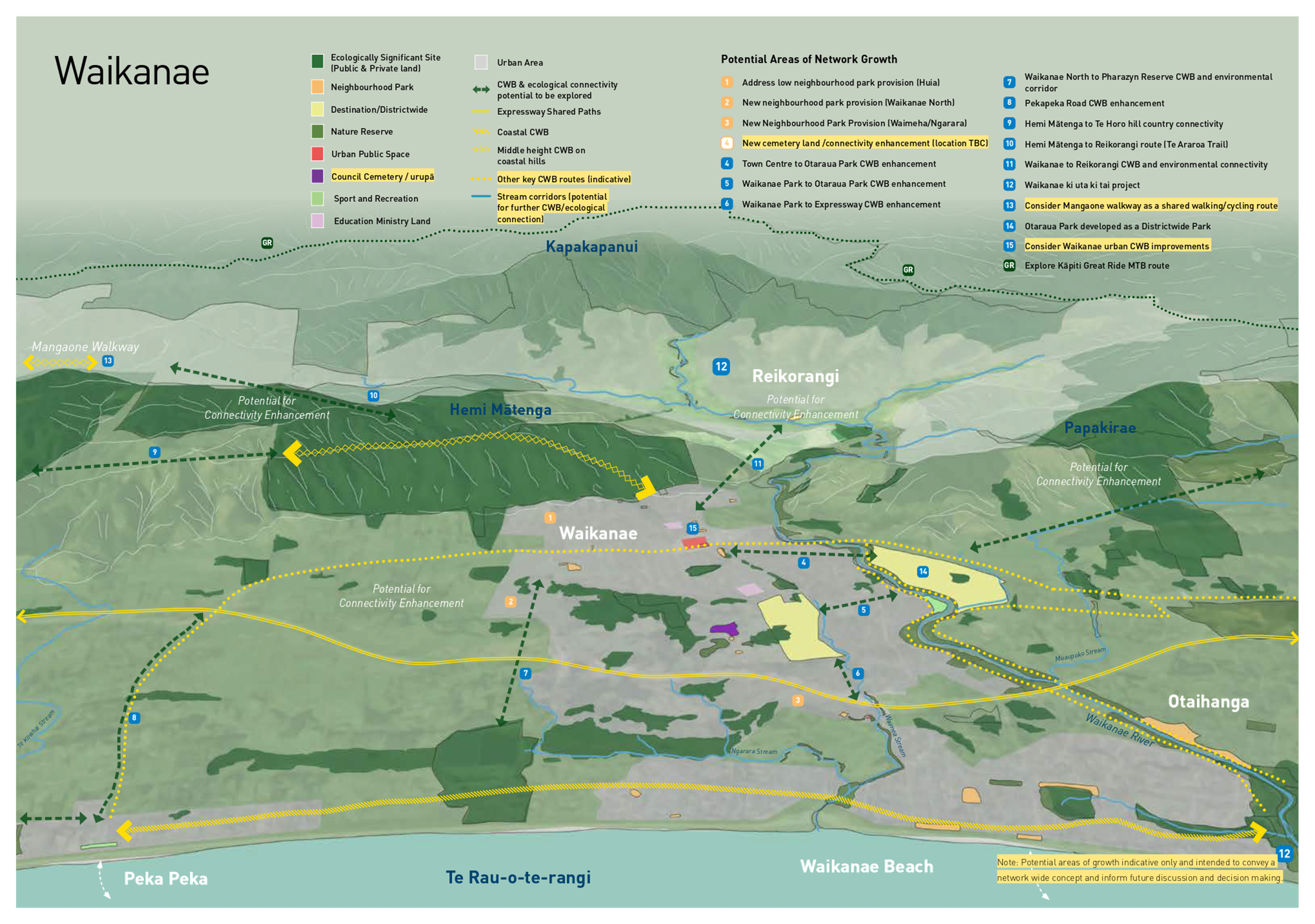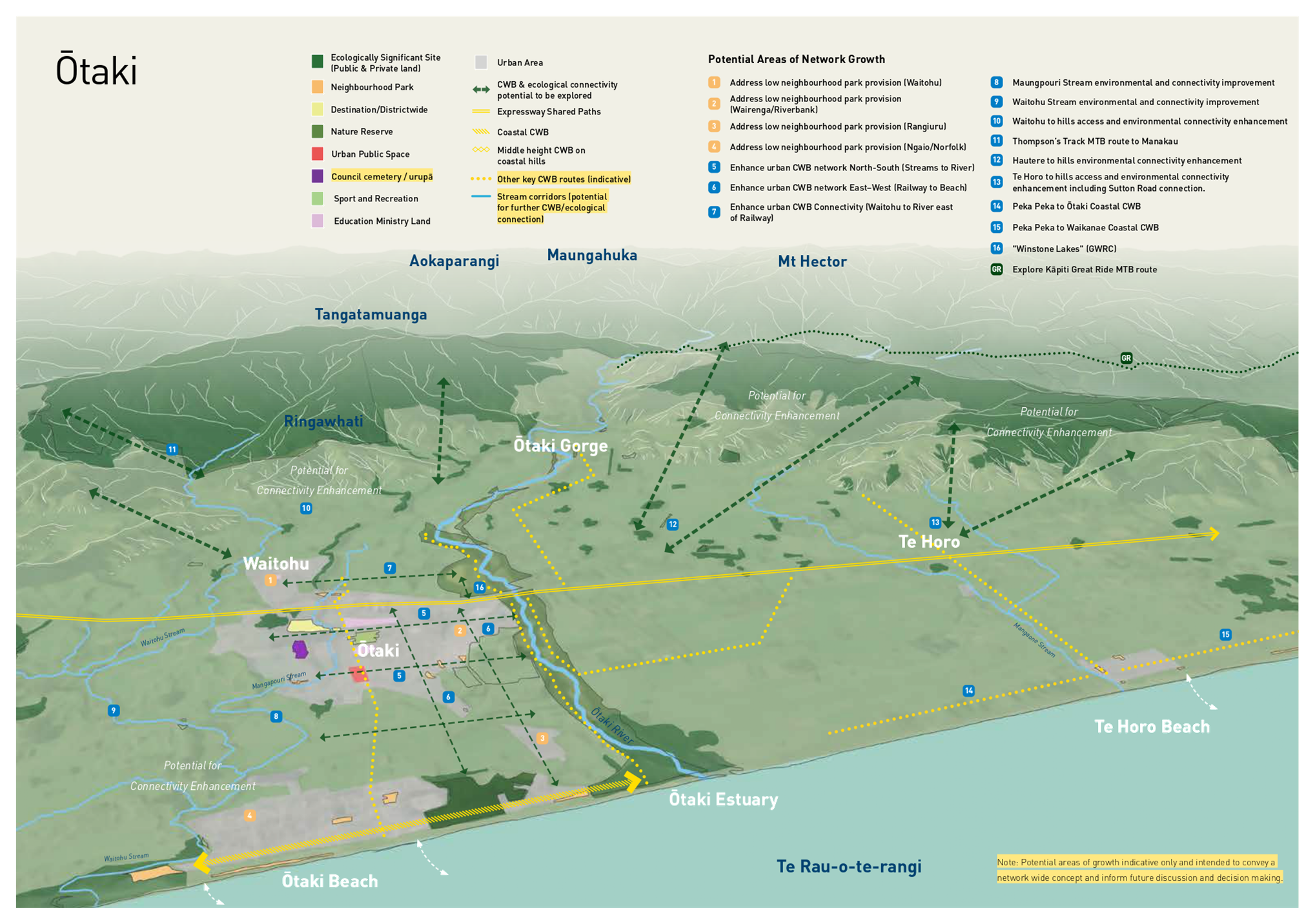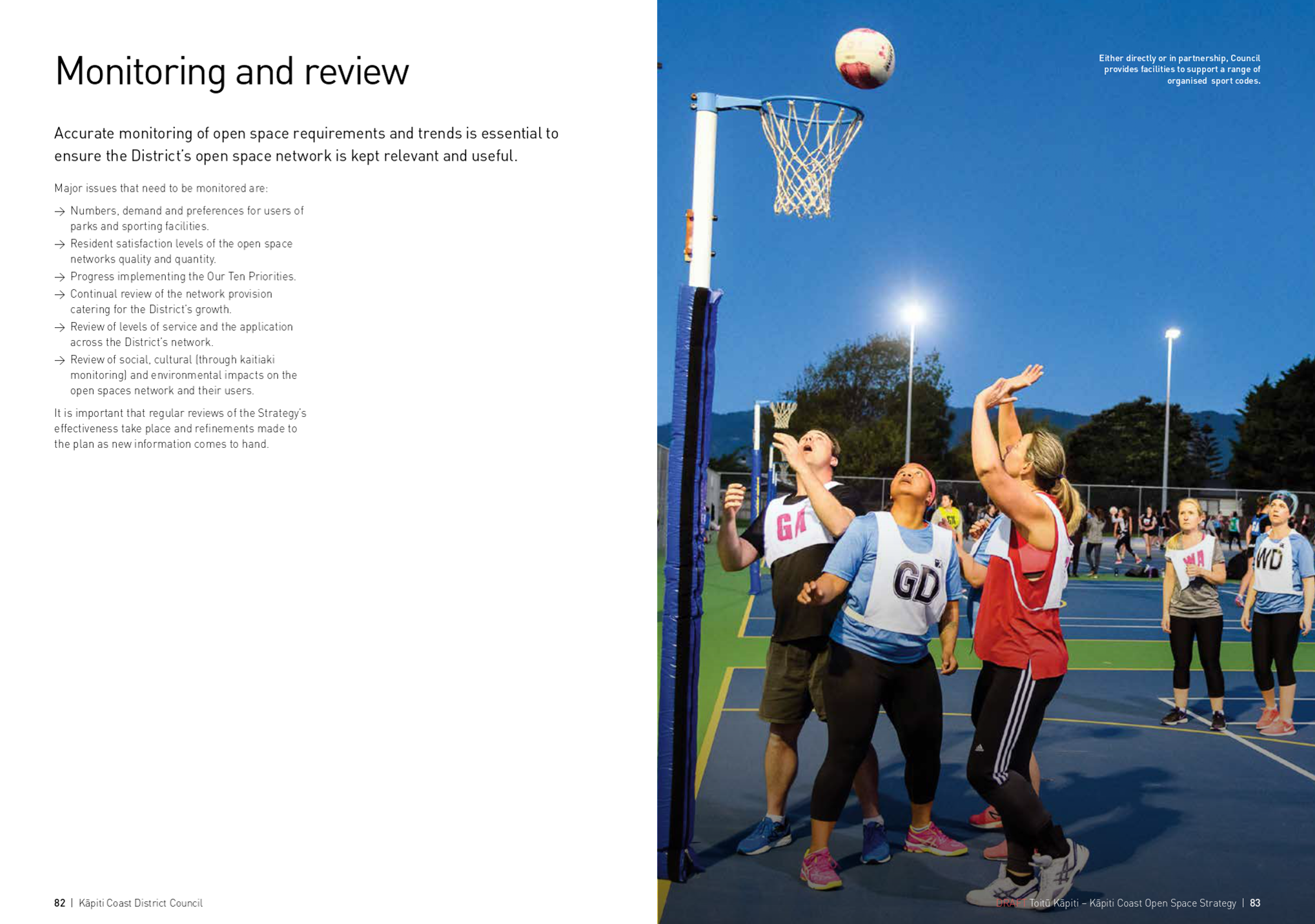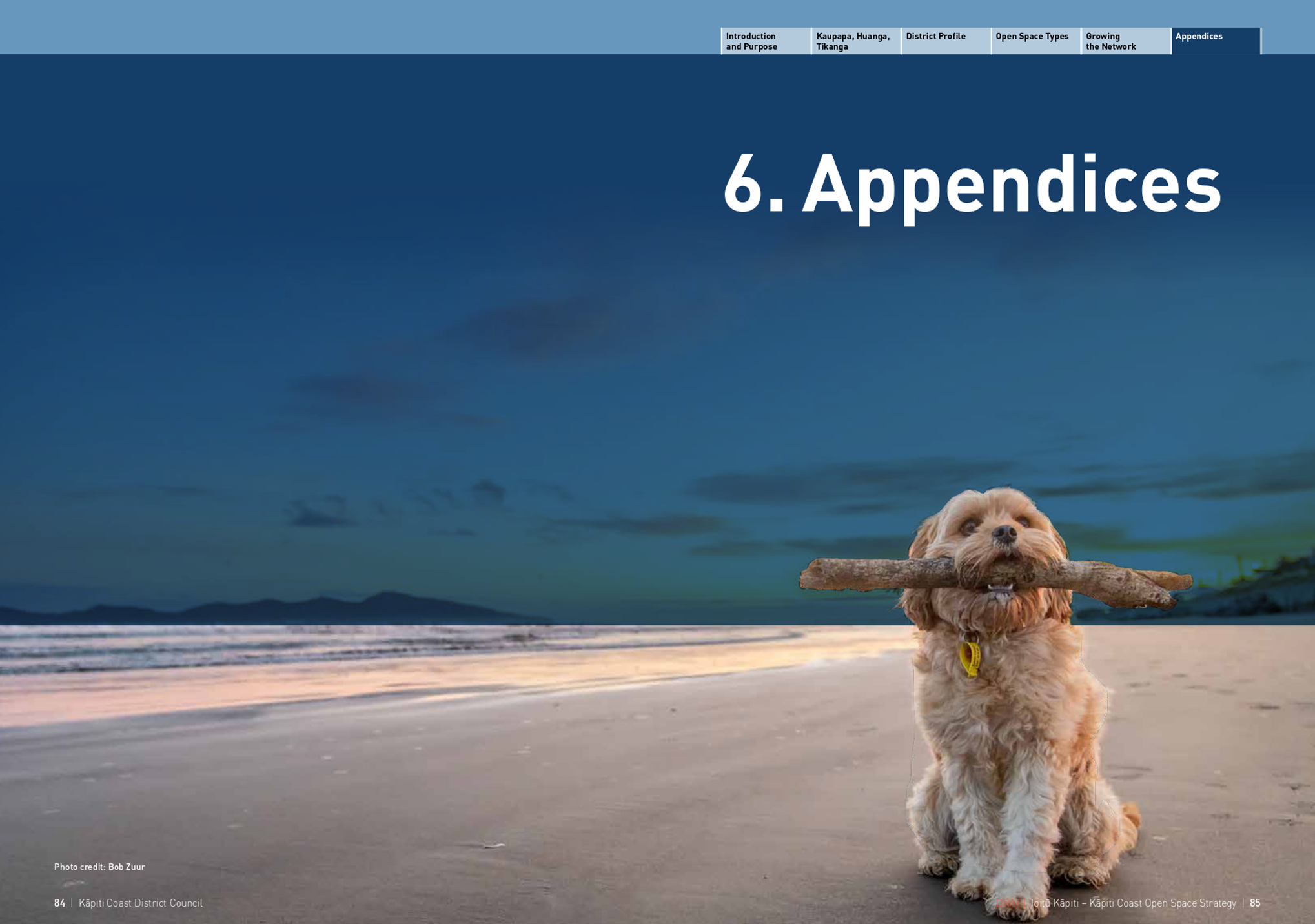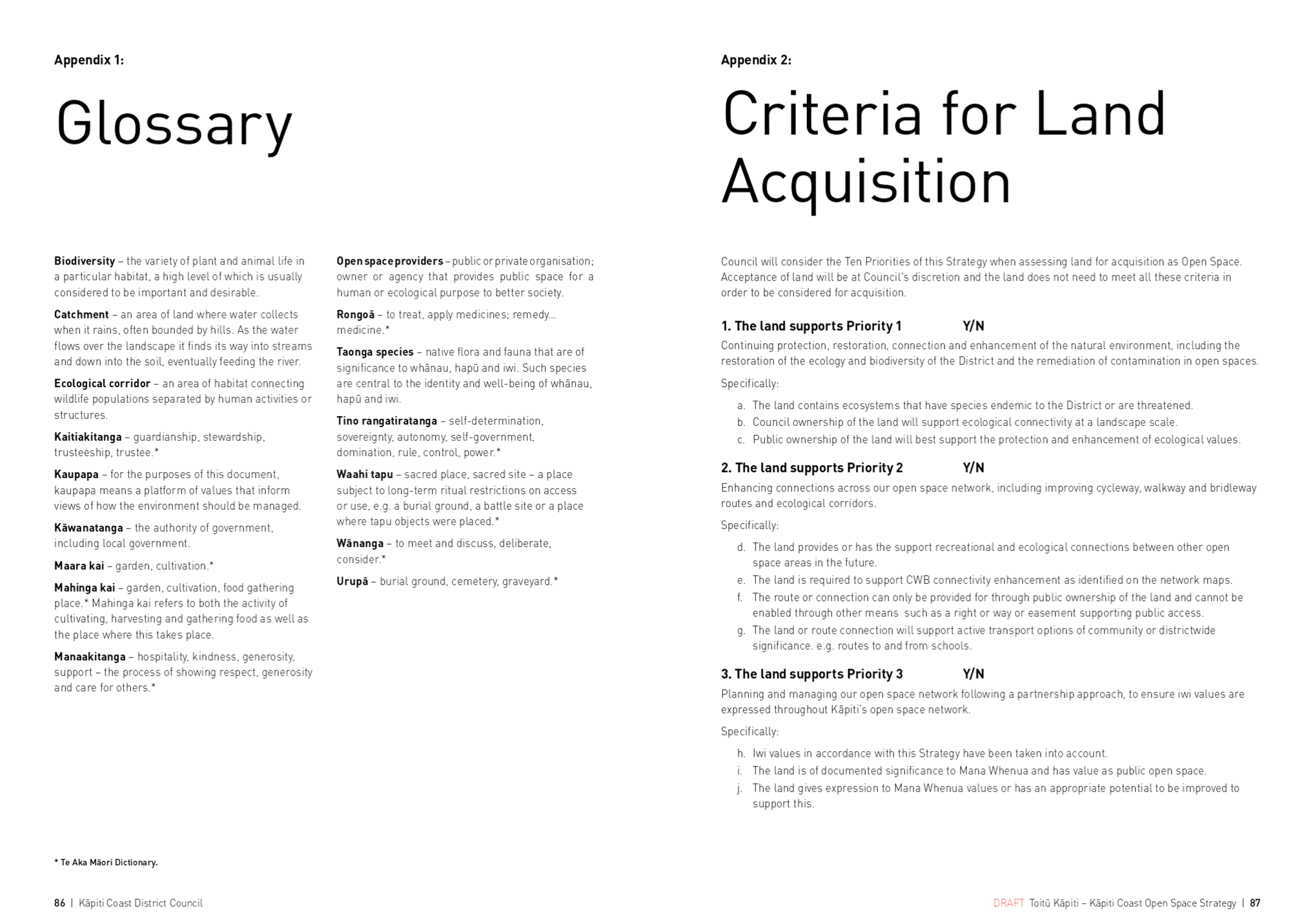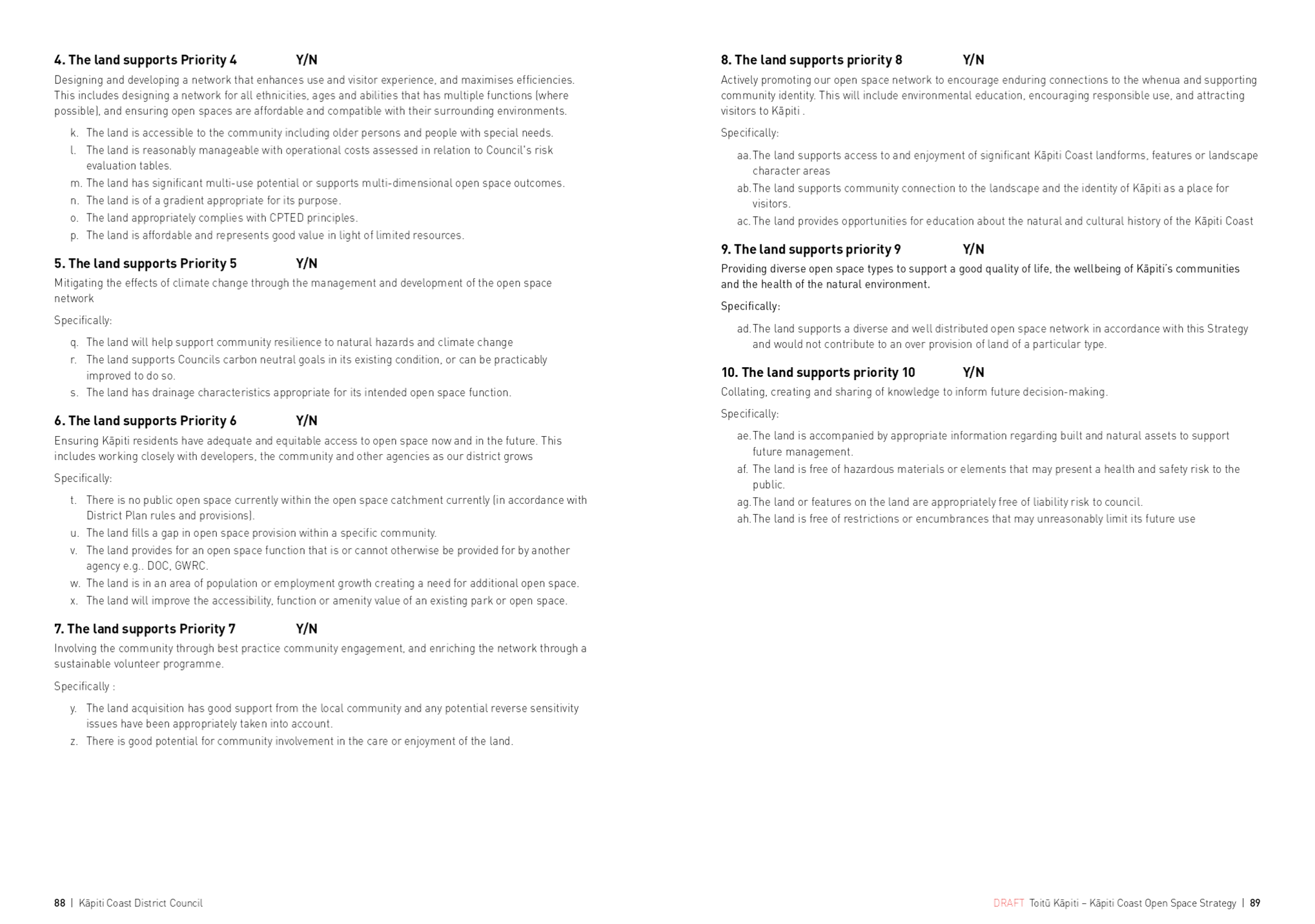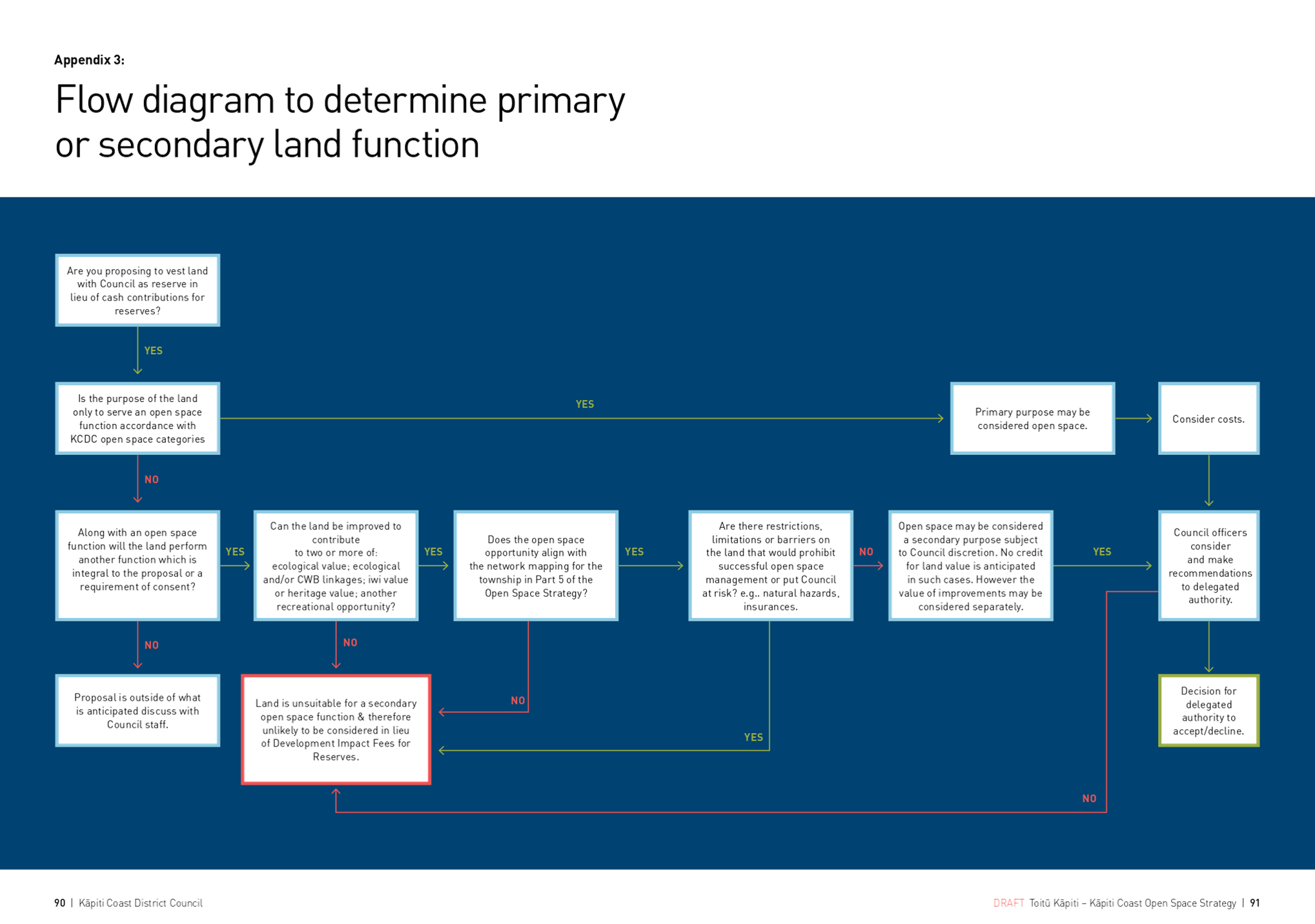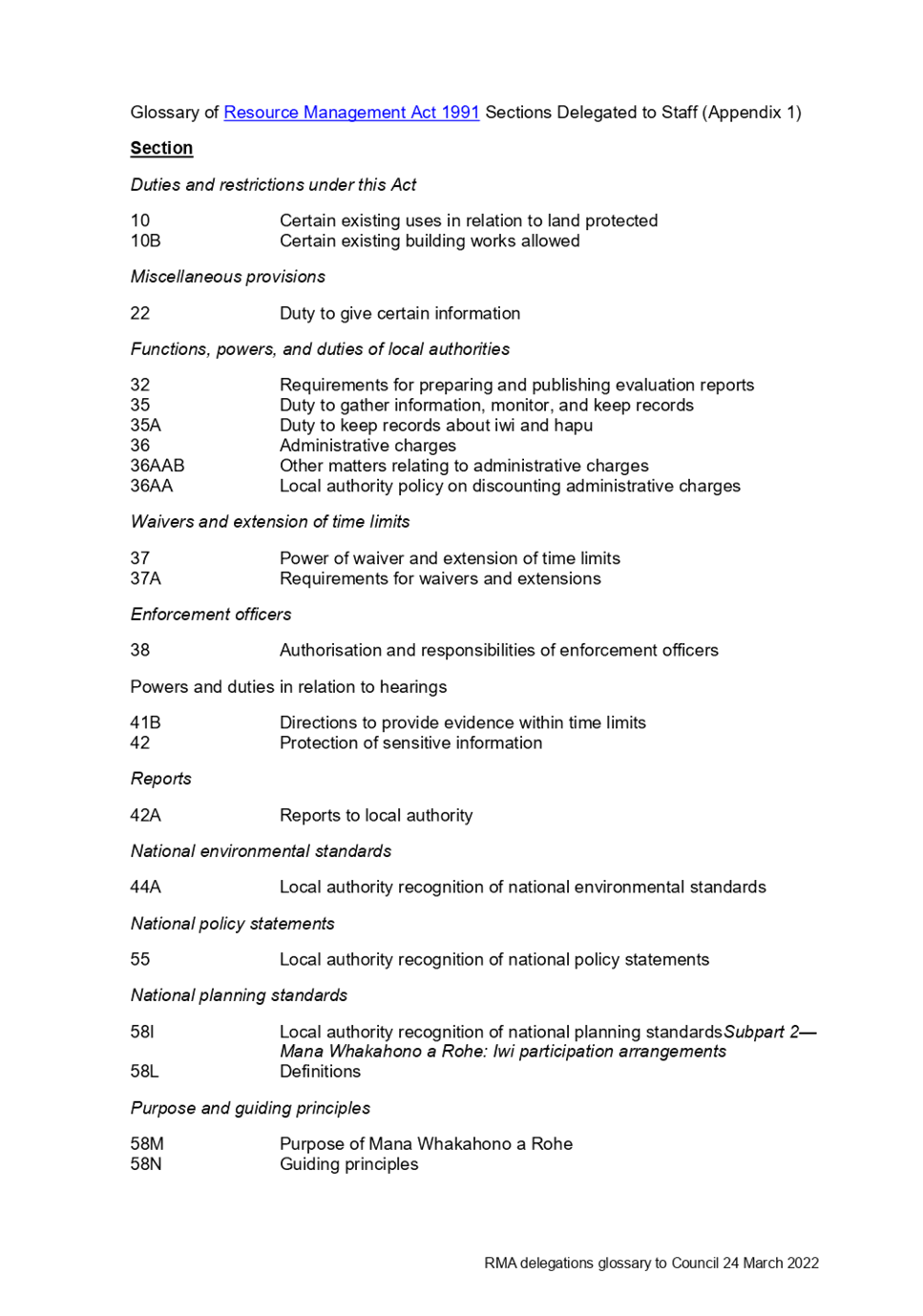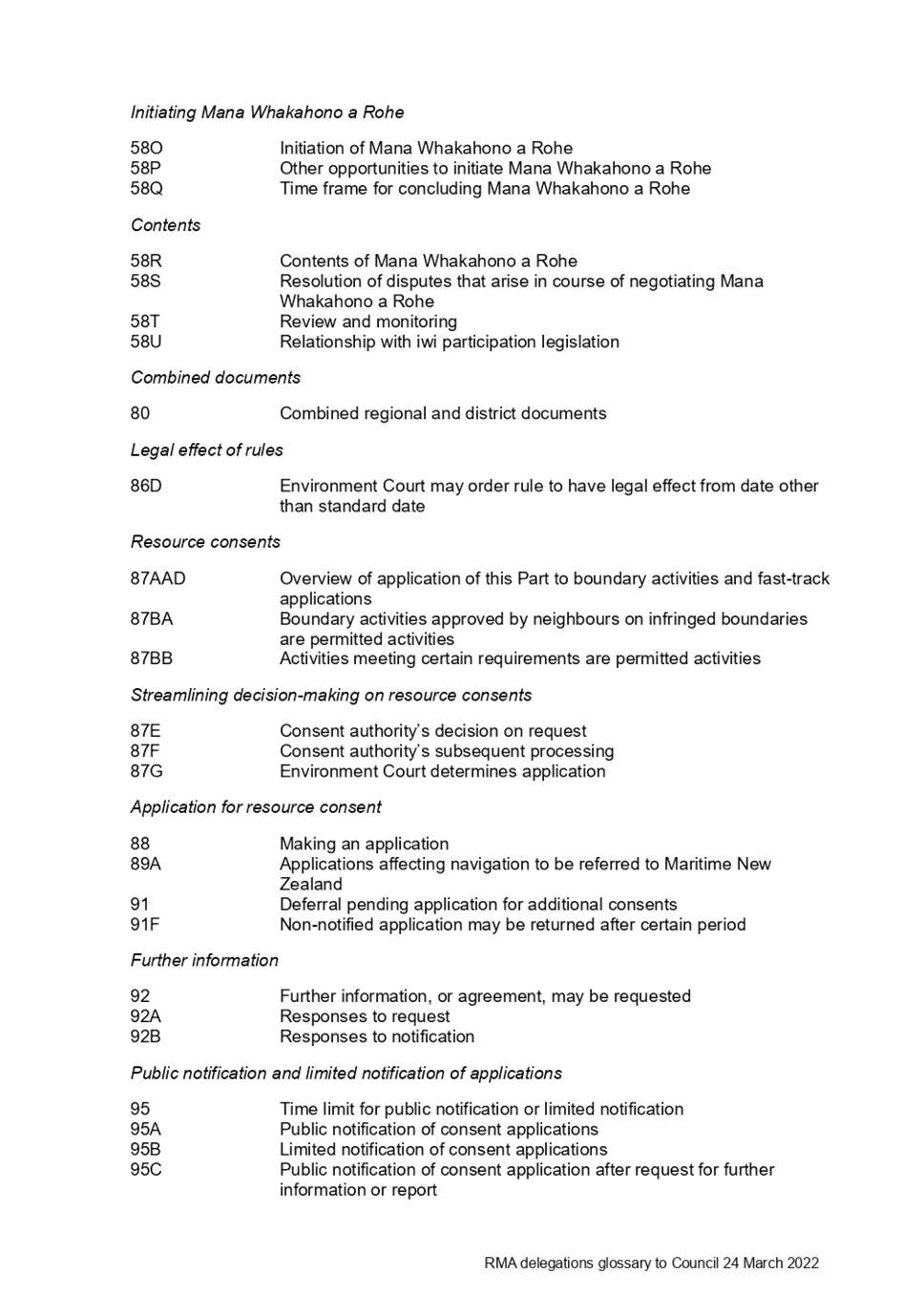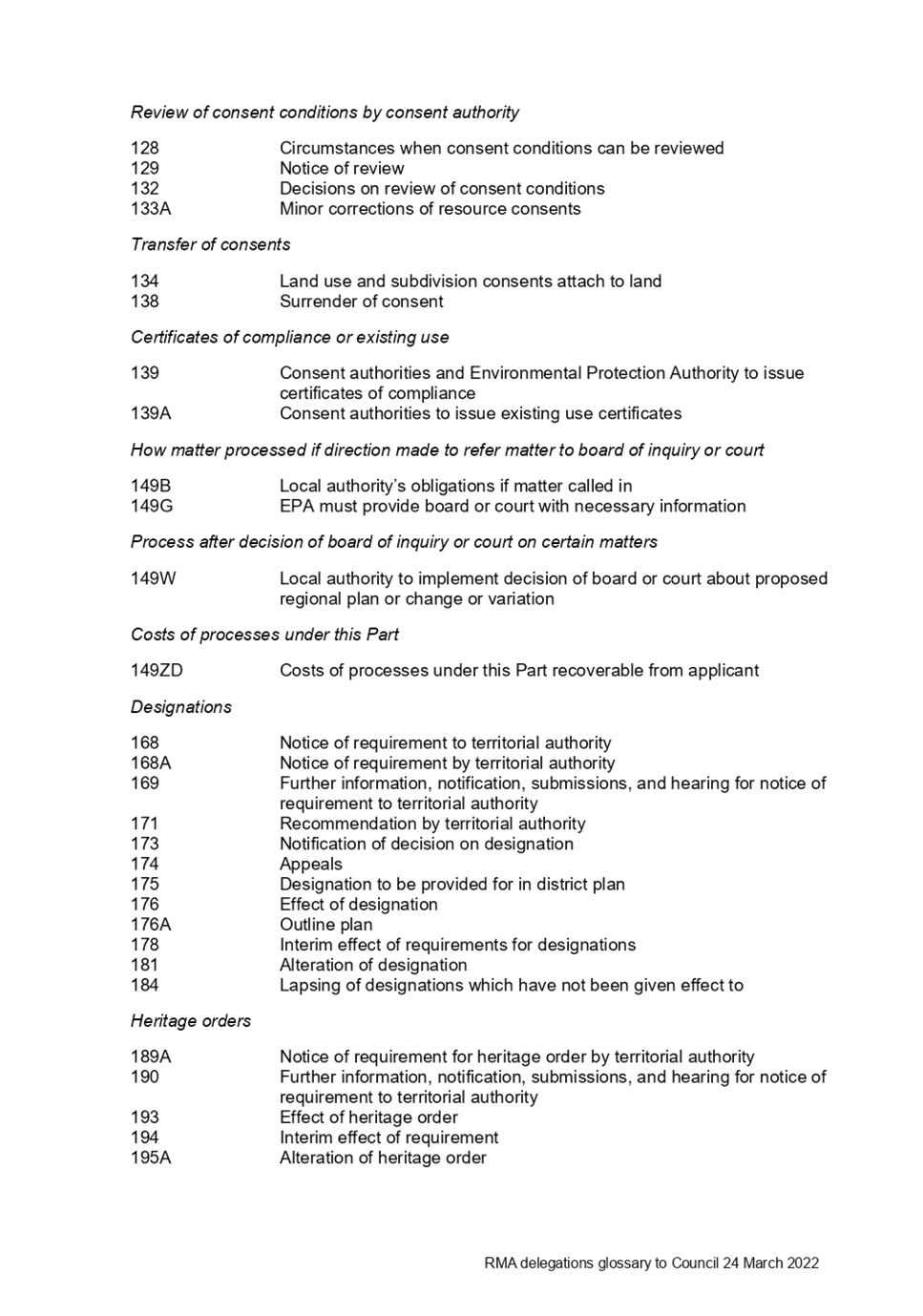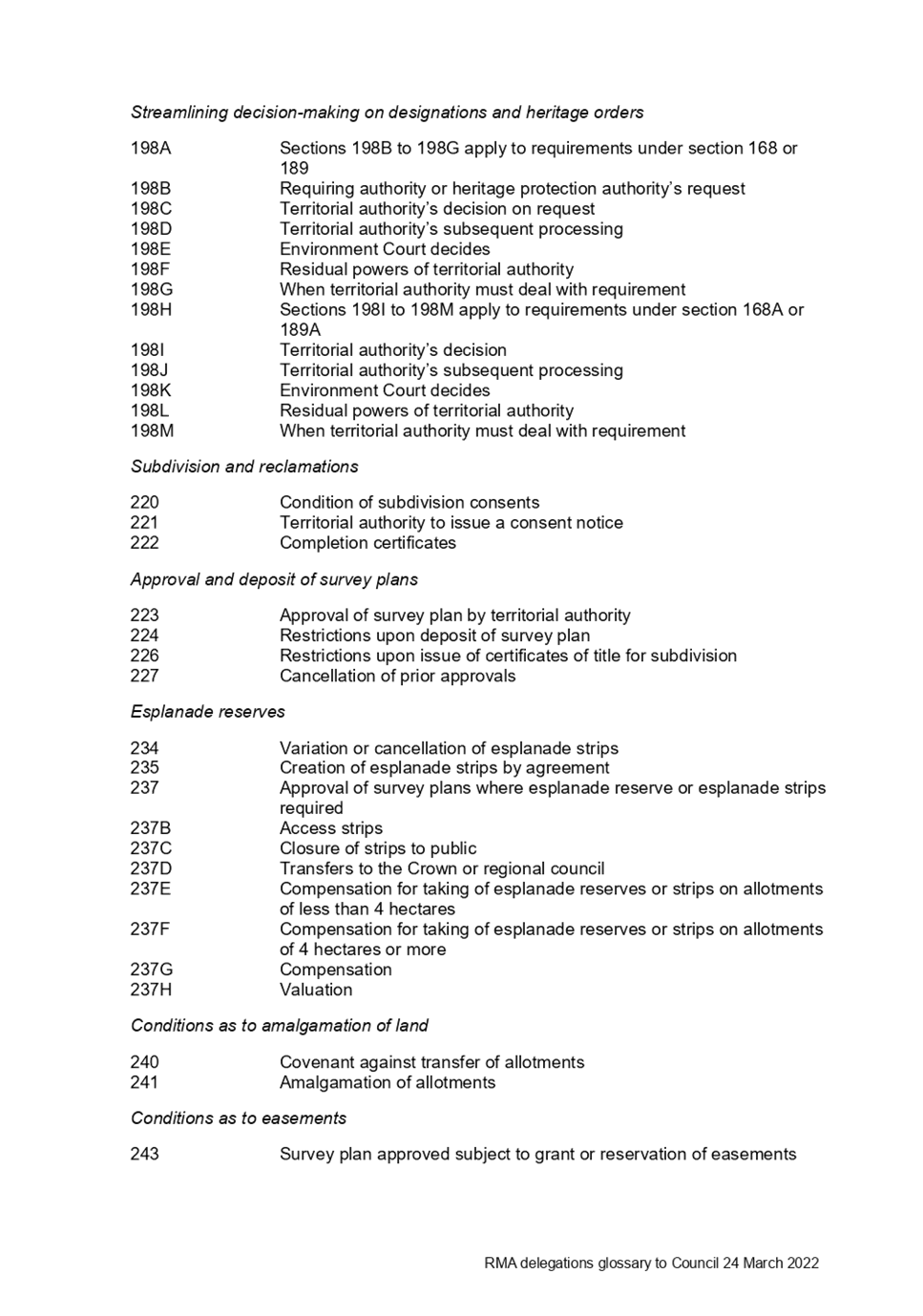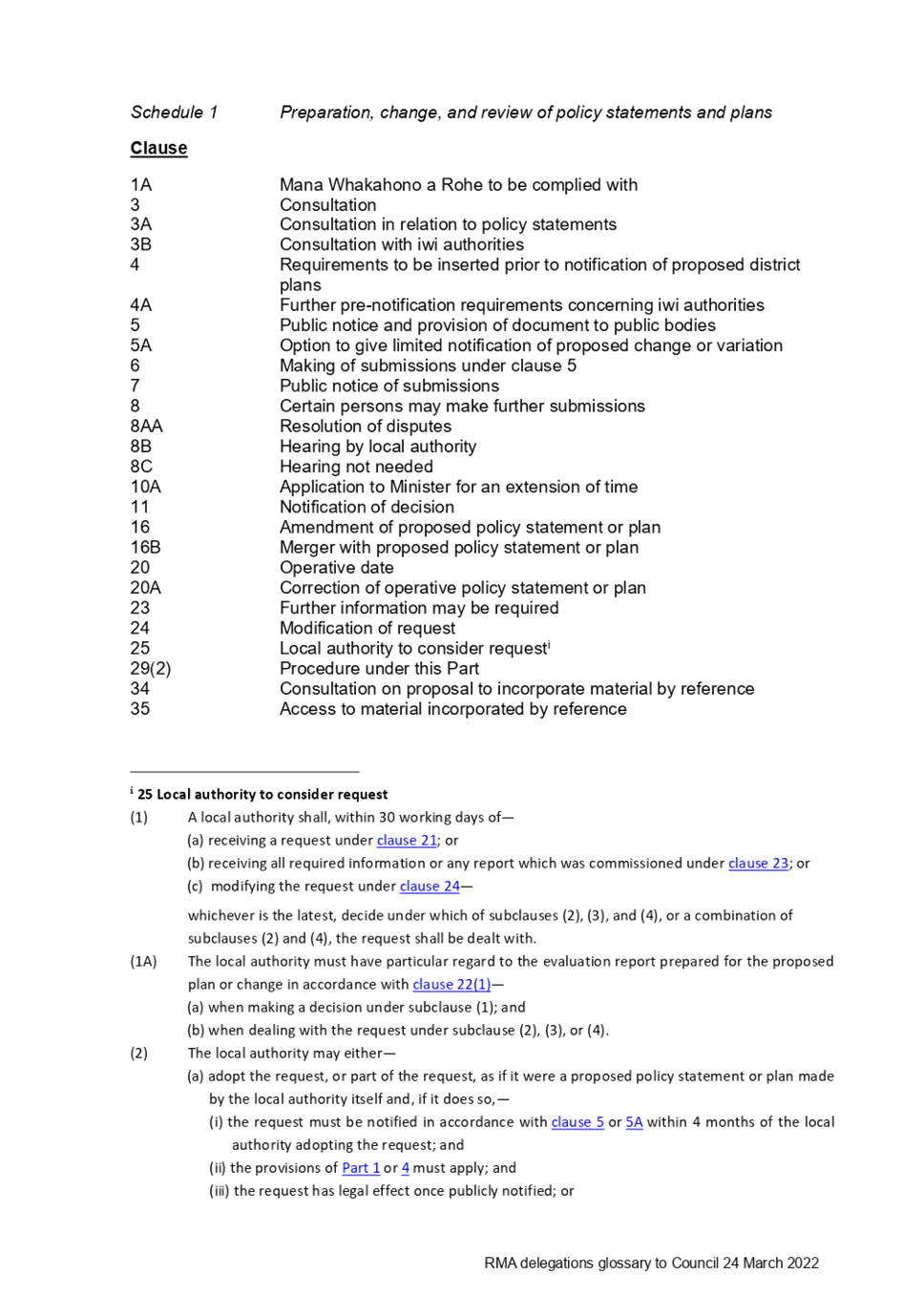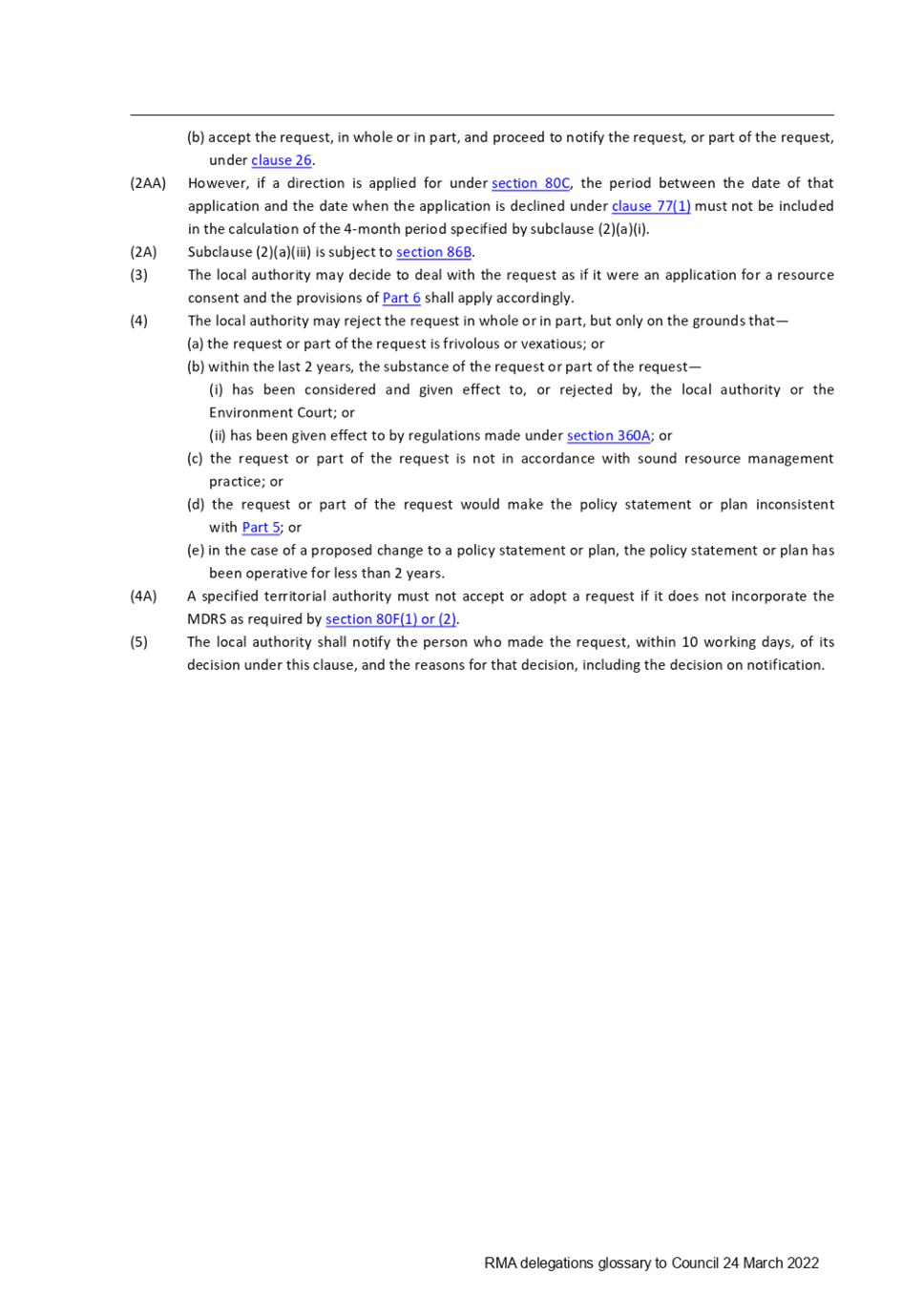|

|
|
AGENDA
Council Meeting
|
|
I hereby give notice that a Meeting of the Kapiti
Coast District Council will be held on:
|
|
Date:
|
Thursday, 24 March 2022
|
|
Time:
|
9.30am
|
|
Location:
|
Online
via Zoom
|
|
Wayne Maxwell
Chief Executive
|
|
Council
Meeting Agenda
|
24 March 2022
|
Kapiti Coast District Council
Notice is hereby given
that a meeting of the Kapiti Coast District Council will be held in the Online via Zoom, on Thursday 24 March 2022, 9.30am.
Council Members
|
Mayor
K Gurunathan
|
Chair
|
|
Deputy
Mayor Janet Holborow
|
Deputy
|
|
Cr
Angela Buswell
|
Member
|
|
Cr
James Cootes
|
Member
|
|
Cr
Jackie Elliott
|
Member
|
|
Cr
Gwynn Compton
|
Member
|
|
Cr
Jocelyn Prvanov
|
Member
|
|
Cr
Martin Halliday
|
Member
|
|
Cr
Sophie Handford
|
Member
|
|
Cr
Robert McCann
|
Member
|
|
Cr
Bernie Randall
|
Member
|
2 Council
Blessing
“As we deliberate on the
issues before us, we trust that we will reflect positively on the
communities we serve. Let us all seek to be effective and just, so that with
courage, vision and energy, we provide positive leadership in a spirit of
harmony and compassion.”
I a mātou e whiriwhiri ana
i ngā take kei mua i ō mātou aroaro, e pono ana mātou ka
kaha tonu ki te whakapau mahara huapai mō ngā hapori e mahi nei
mātou. Me kaha hoki mātou katoa kia whaihua, kia tōtika
tā mātou mahi, ā, mā te māia, te tiro whakamua me te
hihiri ka taea te arahi i roto i te kotahitanga me te aroha.
3 Apologies
4 Declarations
of Interest Relating to Items on the Agenda
Notification from Elected
Members of:
4.1 – any interests that
may create a conflict with their role as an elected member relating to the
items of business for this meeting, and
4.2 – any interests in
items in which they have a direct or indirect pecuniary interest as provided
for in the Local Authorities (Members’ Interests) Act 1968
5 Presentation
of Petition
Nil
6 Hearings
Nil
7 Public
Speaking Time for Items Relating to the Agenda
8 Members’
Business
(a)
Public Speaking Time Responses
(b)
Leave of Absence
(c)
Matters of an Urgent Nature (advice to be provided to the Chair prior to
the commencement of the meeting)
9 Mayor's
Report
Nil
10 Reports
10.1 Draft
Intensification Plan Change
Kaituhi |
Author: Jason
Holland, District Planning Manager
Kaiwhakamana
| Authoriser: Natasha Tod, Group Manager Strategy, Growth and
Recovery
Te pūtake |
Purpose
1 The
purpose of this paper is to inform the Council of the scope of draft Proposed
Plan Change 2 (PC2) to the Operative Kāpiti Coast District Plan, and to
recommend that draft PC2 proceeds to public consultation.
He
whakarāpopoto | Executive summary
2 The
Resource Management (Enabling Housing Supply and Other Matters) Amendment Act
2021 passed into law under urgency in December requires that the Council
publicly notify an “intensification planning instrument” no later
than 20 August 2022.
3 The
Amendment Act requires that Council incorporate Medium Density Residential
Standards (MDRS) into relevant residential zones within the District Plan.
Amongst other things, the MDRS will enable the construction and use of up to 3,
three-storey dwellings per site within the General Residential Zone, subject to
specified standards.
4 At
the same time, the Council must amend the District Plan to give effect to
policy 3 of the National Policy on Urban Development 2020 (NPS-UD). Policy 3
requires the District Plan to enable further intensification in areas of the
urban environment that are in or near a centre zone, or are serviced by rapid
transit services.
5 Proposed
Plan Change 2 (PC2) is the Council’s “intensification planning
instrument”. The scope of the draft plan change is defined and limited by
statute, and at this stage includes:
5.1 Incorporating
the MDRS into the General Residential Zone (including re-zoning some areas as
General Residential Zone);
5.2 Giving
effect to policy 3 of the NPS-UD;
5.3 Providing
for “qualifying matters”;
5.4 Enabling
papakāinga within the district; and
5.5 An option to amend
financial contributions provisions.
6 A
draft of PC2 has been prepared for the purposes of informing the public of the
scope of the proposed plan change, and seeking feedback. The draft will also be
provided to iwi and certain Ministers of the Crown as required by Schedule 1 of
the Resource Management Act 1991 (RMA). To achieve this, this paper recommends
that draft PC2 proceeds to public consultation. This public consultation
is in advance of, and in addition to, the formal public notification which will
occur mid-year.
Te tuku haepapa
| Delegation
7 Council
has delegation to consider this matter.
Taunakitanga | RECOMMENDATIONS
A. That
draft Proposed Plan Change 2 proceed to public consultation at the beginning of
April 2022.
Tūāpapa | Background
8 Since the District Plan became operative on 30 June 2021
work has commenced on a series of changes and improvements. In the Long
Term Plan 2021 – 2041 (LTP) Council committed to a rolling review
programme of changes to the District Plan. Plan Change 2 is focussed on
urban development and making sure we are meeting our obligations under the
National Policy Statement on Urban Development and Resource Management
(Enabling Housing Supply and Other Matters) Amendment Act 2021.
9 The
Council is a Tier 1 territorial authority under the RMA. As such, the Council
is required to prepare and notify an Intensification Planning Instrument no
later than 20 August 2022. This requirement was recently inserted into the RMA
by the Resource Management (Enabling Housing Supply and Other Matters)
Amendment Act 2021, the purpose of which is to “rapidly accelerate the
supply of housing where the demand for housing is high” and
“address some of the issues with housing choice and affordability that
Aotearoa New Zealand currently faces”.[1]
PC2 is the Council’s Intensification Planning Instrument.
10 While
PC2 is driven by statute, it is important to recognise that housing supply is a
key resource management issue for the District. The District’s population
is projected to grow by at least 30,000 people over the next 30 years.[2] At the same time,
the Council’s Housing and Business Development Capacity Assessment (HBA)
has identified a short-fall in feasible, realisable, plan-enabled development
capacity for housing in the district. This shortfall has increased as demand
for housing in the District has grown, and the shortfall is currently estimated
to be approximately 8,400 dwellings over 30 years.[3] As part of addressing this, the
Council has recently adopted Te tupu pai, Growing well, our 30-year
growth strategy for the District that outlines the ways Council plans to
provide for growth in a coordinated and sustainable manner, including through
the intensification of existing urban areas. PC2 is part of the implementation
of Te tupu pai, and will address the existing short-fall in development
capacity by enabling an increase in plan-enabled housing supply in existing
urban areas across the District, as well as a small number of new residential
areas.
11 Housing
supply is also a particular issue for iwi in the District. Iwi and hapū,
which include Ngāti Toa Rangatira, Ngāti Raukawa (Ngā Hapū
ō Ōtaki) and Te Āti Awa ki Whakarongotai, have expressed
aspirations that their members are enabled to live closer to or within their
ancestral homes, and that iwi, hapū and whānau are enabled to develop
housing that meets their needs, and reflects their own history, identity,
culture and connections to the land. To assist iwi, hapū and whānau
to meet these aspirations, PC2 proposes to enable papakāinga in a range of
zones across the District.
12 The
scope of PC2 is focussed on enabling intensification in existing urban areas, a
limited number of new residential areas, and enabling papakāinga. This
plan change does not provide for larger greenfield or brownfield areas that may
involve a range of land-uses and require more complex design and planning
approaches (such as structure planning). The Council plans to undertake a
separate future urban development plan change to enable this kind of
development in parts of the District where large-scale urban development may be
appropriate. The LTP indicates this plan change is to be publicly notified in
2024.
He
kōrerorero | Discussion
13 The
proposed scope of draft PC2 includes:
1) Incorporating
the Medium Density Residential Standards into the General Residential Zone
(including by re-zoning some areas as General Residential Zone);
2) Giving
effect to Policy 3 of the NPS-UD;
3) Provisions
to enable papakāinga development;
4) Providing
for “qualifying matters”;[4]
and
5) An option to amend
financial contributions provisions.
14 Outside
of PC2, Council is reviewing its “Subdivision and Development Principles
and Requirements” (SDPR) document.[5]
There is also a potential opportunity to incorporate updated references to the
SDPR, if the timing of this review aligns with PC2.
15 The
following sections provide an outline of the draft scope of PC2 and discuss the
potential impacts of draft PC2 on the district.
Statutory scope
16 The
scope of the PC2 is defined by s80E of the RMA. Under this provision, the plan
change must:
· Incorporate the
MDRS; and
· Give effect to
policies 3 and 4 of the NPS-UD.
17 In
addition to this, the plan change may also include:
· Provisions to
enable papakāinga in the district;
· Amendments to
financial contributions provisions; and
· Provisions that
support or are consequential on incorporating the MDRS or giving effect to
policy 3 of the NPS-UD.
18 Except
for these matters, the plan change cannot be used for any other purpose.
Urban environments
19 Both
the MDRS and the NPS-UD apply to urban environments. The RMA defines an urban
environment as:[6]
any area of land (regardless of
size, and irrespective of territorial authority boundaries) that –
(a) is, or is intended by the
specified territorial authority to be, predominantly urban in character; and
(b) is, or is intended by the specified territorial
authority to be, part of a housing and labour market of at least 10,000 people.
20 Appendix
A includes an analysis of areas in the district that meet this definition.
In summary, the following areas meet the definition of an urban environment:
1) the
areas of land that are contained within the following zones in the Operative
District Plan:
a. Residential
Zones;
b. Metropolitan
Centre Zone;
c. Town
Centre Zone;
d. Local
Centre Zone;
e. Mixed
Use Zone;
f. General
Industrial Zone;
g. Airport
Zone;
h. Hospital
Zone; and
2) the areas of land
proposed to be included in the General Residential Zone as part of PC2.
Incorporating the MDRS into
the District Plan
21 PC2 will
amend the District Plan to incorporate the MDRS. This means the District Plan
will provide for the construction and use of up to 3, three-storey residential
units as a permitted activity within “relevant residential zones”,
which for the Kāpiti Coast District Plan means the General Residential
Zone. These residential units are to be subject to compliance with a set of
density standards that are prescribed in Schedule 3A of the RMA (refer to Appendix
B).
22 As
part of incorporating the MDRS into the District Plan, the RMA also requires
that the District Plan:
· include a set of
mandatory objectives and policies to support the application of the MDRS; and
· amend
subdivision rules to remove minimum allotment sizes in areas where the MDRS
applies, and to provide for subdivision as a “controlled activity”.
23 The maps
in contained within Appendix C show the extent of the General
Residential Zone where the MDRS will be applied.
Rezoning areas as General
Residential Zone
24 As part
of incorporating the MDRS into the District Plan, the RMA authorises Council to
re-zone areas as General Residential Zone (so long as these, too, incorporate
the MDRS).[7]
25 Draft
PC2 proposes a number of smaller areas be rezoned as General Residential Zone.
These are areas identified as appropriate on the basis that:
1) they
are located next to an urban area that is connected to services;
2) they
have a relatively low degree of constraints (and any existing constraints can
be managed through existing district plan rules);
3) they
are not sufficiently large or complex enough to require a “structure
planned” approach;
4) they would provide a
notable contribution to plan-enabled housing supply, or where this is not the
case, re-zoning is appropriate to regularise the area into the surrounding
zoning pattern.
26 Maps in Appendix
C show the location of these areas. Appendix D provides a detailed
schedule of these proposed areas. An initial high level estimate suggests
approximately 1,300 dwellings could be enabled by rezoning these areas.
Giving effect to Policy 3 of
the NPS-UD
27 PC2
will amend the District Plan to give effect to Policy 3 of the NPS-UD. Policy 3
requires the District Plan enable intensification within and around existing
centres and existing or planned rapid transit stops. In order to give effect to
this policy, there are a range of related objectives and policies contained
within the NPS that also need to be provided for within the District Plan. The
parts of Policy 3 relevant to the Kāpiti Coast District are:
Policy 3: In
relation to tier 1 urban environments, … district plans enable:
(a) …
(b) in metropolitan centre
zones, building heights and density of urban form to reflect demand for housing
and business use in those locations, and in all cases building heights of at
least 6 storeys; and
(c) building
heights of at least 6 storeys within a walkable catchment of the following:
(i) existing
and planned rapid transit stops:
(ii) …
(iii) the
edge of metropolitan centre zones; and
(d) within and adjacent to neighbourhood centre zones,
local centre zones, and town centre zones (or equivalent), building heights and
density of urban form commensurate with the level of commercial activities and
community services.
28 The
approach taken by draft PC2 to giving effect to Policy 3 is based on the
existing hierarchy of centres zones contained within the District Plan.[8] The centres zones
provide for commercial activities (such as shops, offices and other places of
employment) and community services (such as healthcare services, libraries and
other community facilities) in areas located throughout the district, and the
hierarchy of centres zones recognises that larger centres, such as the
Metropolitan and Town Centre Zones, are intended to serve broader parts of the
community, whereas the Local Centre Zone is primarily intended to serve local
neighbourhoods. The level of intensification proposed by PC2 is based on, and
reinforces, the relative position of each centre zone within the centres
hierarchy.
29 The
table contained in Appendix E identifies the proposed level of
intensification for each area in the district that is subject to policy 3 of
the NPS-UD, and the maps contained in Appendix C provide a spatial
representation of this.
Providing for qualifying
matters
30 The RMA
provides scope for the requirements of the MDRS or Policy 3 of the NPS-UD to be
modified to be less enabling of development in order to accommodate a
qualifying matter.[9]
Qualifying matters can be described in terms of being “existing
qualifying matters”[10]
(matters that are already provided for in the District Plan) and “new
qualifying matters” (matters that are not provided for in the District
Plan). PC2 recognises a range of “existing qualifying matters”, but
also provides for “new qualifying matters”.
31 PC2
proposes to recognise a range of existing qualifying matters relevant to the
district, including:
1) through
recognising a range of existing district-wide rules associated with natural
hazards, outstanding natural features and landscapes, indigenous biodiversity,
historic heritage, sites and areas of significance to Māori and nationally
significant infrastructure as existing qualifying matters;
2) through
maintaining existing development rules and standards within business land
suitable for low density uses (the General Industrial Zone and the Mixed Use
Precinct of the Airport Zone), where this land would otherwise be subject to
Policy 3 of the NPS-UD;
3) maintaining existing
rules that prevent or do not provide for development within Open Space Zones,
where land that is zoned for open space would otherwise be subject to Policy 3
of the NPS-UD.
32 PC2
also proposes to provide for a number of new qualifying matters relevant to the
district. These include:
1) providing
for a “Coastal Qualifying Matter Precinct” in the part of the
district that has been identified as potentially susceptible to coastal erosion
hazard. The purpose of the precinct is to maintain the level of development
currently provided for by the Operative District Plan in these areas, until the
management of coastal hazards is addressed through a future coastal environment
plan change. While PC2 does not apply the level of development required by the
MDRS or the NPS-UD to these areas, PC2 does not propose any new restriction on development
in these areas either. In essence, the development provisions of the Operative
District Plan remain unchanged in this area;
2) providing for wāhi
tapu sites that have been identified by iwi, but are currently unrecognised by
the District Plan, to be added to the schedule of sites and areas of
significance to Māori. This includes Kārewarewa urupa at Waikanae
Beach.[11]
Design guides
33 The
District Plan contains design guides for medium density residential
development. However, these are over 10 years old, and the level of development
promoted by these guides is generally lower in density than the MDRS. In
addition, while medium density residential development is occurring in the
District to some degree, there are not many local examples of higher density
development (as the District Plan simply does not promote this).
34 As
a result, PC2 proposes replacing the existing medium density residential design
guide with two new design guides – a Residential Design Guide and a
Centres Design Guide. The purpose of the design guides will be to:
1) Promote
high quality design for higher density development, that considers both on-site
amenity as well as providing for a positive relationship between the
development and the surrounding neighbourhood/environment;
2) Assist
developers in preparing the design and resource consent applications for higher
density developments; and
3) Provide Council consent
officers with a basis for assessing resource consent applications for
developments that breach permitted activity standards.
35 The
proposed design guides will be consulted on as part of the consultation on
draft PC2.
Enabling papakāinga
36 Iwi,
hapū and whānau have expressed aspirations to develop papakāinga
within the District. These aspirations include:
· That more iwi
members can live and work closer to or within their ancestral homes, and
participate in iwi, hapū and marae life;
· That the district
plan provides for papakāinga broadly across the district, including in
both urban and rural zones;
· That
papakāinga development is not limited to land held under Te Ture Whenua
Māori Act 1993.
37 The
District Plan contains some papakāinga provisions, however these are
typically limited to land held under Te Ture Whenua Māori Act 1993 in
rural zones. Iwi have indicated that these existing provisions do not
sufficiently provide for their aspirations.
38 Papakāinga
can be defined as:
housing and ancillary activities, including social,
cultural, educational, recreational, and commercial activities, for tangata
whenua on their ancestral land[12]
39 PC2
proposes the following changes to the District Plan to enable papakāinga:[13]
1) A
new district-wide Papakāinga chapter that provides objectives and policies
for enabling the use and development papakāinga by and for tangata whenua
within the district;
2) New
or amended rules within the General Residential, Town Centre, General Rural,
Rural Production, Rural Lifestyle and Future Urban Zones that enable
papakāinga on land held under Te Ture Whenua Māori Act 1993, or on
general title land where it can be demonstrated that there is an ancestral
connection to the land;
3) Consequential
amendments to related provisions as part of enabling papakāinga.
40 The
proposed papakāinga provisions contained within draft PC2 have been
drafted with significant input from iwi. However, the timeframes for developing
this plan change have been tight, and the draft provisions are yet to be
settled. Development of the provisions with the input of iwi is ongoing, and it
is likely that the draft provisions will change as the Council continues to
work with iwi.
Amending financial
contributions provisions
41 The
District Plan provides for financial contributions to be taken for:
1) reserves;
and
2) infrastructure that is
not otherwise covered by the Development Contributions Policy.
42 Separately,
the Council has a Development Contributions Policy that provides for development
contributions to be taken for:
1) roading;
2) stormwater;
3) water;
4) wastewater;
and
5) community facilities.
43 Outside
of PC2, the Council is looking at options to amend the Development
Contributions Policy to provide for the taking of development contributions for
reserves and open spaces. Draft PC2 includes an option to signal
Council’s intent to move reserves into the Development Contributions
Policy at a future date yet to be determined.
44 Draft
PC2 also includes suggested amendments to the financial contributions
provisions that provide for the taking of financial contributions for upgrades
or new infrastructure that is not covered in the Development Contributions
Policy. The changes would provide more direction on how and when these
contributions might be taken and also include a new policy for offsetting and
compensation conditions that involve works or services or land.
Potential impacts –
plan-enabled housing development capacity
45 The
potential impact of PC2 on plan-enabled housing development capacity within
existing urban areas is likely to be significant.
46 Analysis
undertaken as part of the Council’s current work to update its HBA has
identified a demand for approximately 16,200 additional dwellings by 2051.[14]
47 Initial
high-level estimates undertaken by the Council[15]
suggest that under PC2, the District Plan would enable:
47.1 Approximately
177,400 dwellings under a “redevelopment” scenario (that is, if
every site in the district were redeveloped to its maximum capacity under the
proposed plan provisions); or
47.2 Approximately 51,600 dwellings
under an “infill development” scenario (that is, where existing
dwellings are retained, and the remainder of the site is redeveloped to a its
maximum capacity under the proposed plan provisions).
48 These
numbers are not the “feasible and realisable” dwelling figures,
which will be calculated for the next HBA. However, based on this high-level
assessment of the level of development enabled by PC2, only 10% of
“redevelopment” capacity, or 31% of “infill” capacity
would need to be feasible and realisable in order to meet the District’s
long-term demand for dwellings.[16]
On this basis, it is likely that PC2 will contribute significantly to enabling
the District’s demand for dwellings to be met out to 2051.
Potential impacts –
character of the urban environment
49 The
level of development enabled by PC2 is likely to lead to a change in character
in the district’s urban environments over time. This is consistent with
the overall thrust of the NPS-UD, which is to enable more people to live in
urban environments, and that in order to achieve this, urban environments must
be allowed to develop and change over time.
50 Change
in character is likely to be driven by the changes in built form that will
occur over time as areas increase in density. Specifically:
50.1 The
General Residential Zone, which has a built character predominantly defined by
single or 2 storey detached dwellings could see change in character through the
development of terraced or multi-unit dwellings up to 3-storeys;
50.2 Parts
of the General Residential Zone near to centres and rapid transit stops could
see a change in character through the development of terraced and multi-unit developments
(which would typically not be more than 3-storeys) and apartment developments
up to 6-storeys;
50.3 The
Town and Local Centres Zones, which have a built character predominantly
defined by single, 2- and 3-storey development, could see a change in character
through the development of commercial or mixed use (commercial and residential)
buildings up to 4-storeys in the Local Centre Zone and 6-storeys in the Town
Centre Zone;
50.4 The Metropolitan Centre Zone
at Paraparaumu, which has a built character predominantly defined by commercial
buildings up to 3-storeys, could see a change in character through the
development of buildings taller than 6-storeys. The change in character in this
zone could also be influenced through mixed use (commercial and residential)
development that enables more people to live within the Metropolitan Centre
Zone.
51 “Character”
is a form of amenity value[17]
under the RMA. Recognising that increases in density are likely to involve a
change in the character, Objective 4 of the NPS-UD provides that:
urban environments, including their amenity values,
develop and change over time in response to the diverse and changing needs of
people, communities and future generations.
52 This
means that the change in the character of the urban environment that is likely
to occur as a result of development enabled by PC2 is both anticipated by the
NPS-UD, and consistent with the requirement that the Council give effect to it.
Put simply, in order to provide for intensification, the NPS-UD recognises that
the character of the urban environment will change over time. Therefore, in
order to give effect to the NPS-UD, the District Plan must provide for urban
environments to change in character over time.
53 Some
parts of the district are recognised as having “special character”
in the District Plan. These areas include:
53.1 The
Beach Residential Precinct at Paekākāriki, Raumati, Waikanae Beach
and Ōtaki Beach. These areas are identified as having a “low-key
beach character and expressive topography enhanced by mature vegetation”.[18]
53.2 The Waikanae Garden
Precinct (located to the west of the Waikanae Town Centre Zone). This area
is “characterised by low residential density and high amenity values
associated with existing established trees and remnant indigenous
vegetation”.[19]
54 These
precincts include policies and rules that are intended to maintain or preserve
the existing character of these areas by restricting development in order to
retain a low-density of built form. This is considered to be inconsistent with
the requirement that the Council incorporate the MDRS and give effect to policy
3 of the NPS-UD because:
1) policies
and rules that seek to maintain or preserve existing character are inconsistent
with Objective 4 of the NPS-UD;
2) policies
and rules that seek to restrict development in order to retain low-densities
are inconsistent with Objective 3 of the NPS-UD, Policy 3 of the NPS-UD (in
some locations) and the MDRS (in locations); and
3) maintaining existing
amenity values is not prescribed as a qualifying matter.
55 However,
these precincts have been recognised as including characteristics that
contribute to local amenity values. Therefore, while PC2 is required to apply
the MDRS and policy 3 of the NPS-UD to these areas,[20] PC2 proposes to include
evidence-based[21]
policies within the District Plan that recognise the contribution that these
characteristics make to local amenity values in these areas. The draft
policies:[22]
· In the Waikanae
Garden Precinct, recognise the contribution of established vegetation to the
amenity values of the precinct;
· In
the Beach Residential Precincts, recognise the contribution of the existing
landform to the amenity values of the precinct.
56 This
approach enables intensification in these areas consistent with the
requirements of the MDRS and the NPS-UD. However, where a proposed development
is denser than these requirements, this approach requires that these
developments would have regard to the local characteristics identified in the
policies. These policies would be carefully worded to ensure that they
don’t have the effect of limiting the densities otherwise required by the
MDRS and the NPS-UD.
Potential impacts –
infrastructure
57 The demands
of population growth provided for through this plan change are likely to have
an impact on the capacity of existing infrastructure, as well as the demand for
new infrastructure, across the District over time. The impact of population
growth on the demand for infrastructure is a matter will need to be quantified
as part of the next review of the Council’s HBA, and would need to be
considered as part of Council’s on-going infrastructure planning
processes, including the Council’s Infrastructure Strategy and Long-Term
Plan.
58 Notwithstanding
this, developments must continue to comply with the Council’s Subdivision
and Development Principles and Requirements (SDPR), and will continue to be
subject to the Council’s Development Contributions Policy.
59 Some
parts of the General Residential Zone that are the subject to the MDRS are not
connected to Council wastewater infrastructure. In general, waste water
treatment and disposal is managed through septic tanks or similar systems on
individual properties. This occurs in the General Residential Zone at:
· Paekākāriki;
· Peka Peka; and
· Te
Horo Beach.
60 The
absence of infrastructure is not specified as a qualifying matter. Until such
time as these areas are connected to reticulated infrastructure, it is likely
that other rules in both the District Plan and the Regional Plan will place
practical constraints on the level of development that would likely be realised
in these areas. Regional Council rules that regulate the design and provision
of on-site wastewater treatment and disposal systems are an example of this.
He
take | Issues
61 Issues
associated with draft PC2 are outlined in the sections above. These issues will
be explored in more detail at future stages of the preparation of this plan
change, including in the section 32 evaluation report that will be presented to
Council later this year.
62 No
issues are specifically associated with the recommendation that Council proceed
with public consultation on the draft PC2.
Ngā
kōwhiringa | Options
63 Options
available to address the issues associated with PC2 have been considered during
the preparation of draft PC2, to the extent possible within the limits set by
national direction. Options will be explored further following receipt of
feedback on the draft plan change, and in the section 32 evaluation which will
accompany the proposed version of PC2 to be presented to Council later this
year.
64 An
alternative option to carrying out broad consultation on draft PC2 is available
to Council. Under this option, Council would meet the minimum consultation
requirements in Schedule 1 of the Resource Management Act,[23] but would not go further than
this. This option would exclude consultation with the general public,
landowners who would be directly affected by the proposed inclusion of new wāhi
tapu sites through PC2, and landowners who would be directly affected by
proposed rezoning of land through PC2. This option is not recommended for draft
PC2 as it would limit the likely range of feedback provided to Council on key
elements of a significant plan change. It would also miss an opportunity to
raise awareness of this plan change ahead of formal public notification of
Proposed PC2 later this year.
Tangata whenua
65 The
development of draft PC2 recognises the Council’s partnership with local
iwi and hapū represented by Te Rūnanga o Toa Rangātira, Ngā
Hapū o Ōtaki and Āti Awa ki Whakarongotai Charitable Trust. As
noted, the provision of housing for tangata whenua, and the ability for tangata
whenua to live closer to or on their ancestral homes are among the range of
issues that iwi have raised with Council that are sought to be address, in part
and to the extent possible, by proposed PC2.
66 As
part of the development of draft PC2, the Council:
1) has
had particular regard to iwi feedback on Te tupu pai (the District
Growth Strategy) in preparing draft PC2;
2) provided
iwi with information on the scope of draft PC2 at the earliest opportunity, and
sought feedback on this scope;
3) is
working in partnership with iwi on the drafting of the provisions to enable
papakāinga. Iwi have provided significant input into the drafting of these
provisions. It is noted that the provisions contained in draft PC2 reflect a
“moment in time”, and work with iwi to further develop and refine
these provisions is ongoing;
4) is working in
partnership with iwi to identify and provide for wāhi tapu sites that are
not yet recognised in the District Plan, in areas that might be affected by the
MDRS or Policy 3 of the NPS-UD.
67 The
Council has also made financial and other resources available to iwi in order
to assist enabling meaningful participation in the preparation of the draft
plan change.
68 It is
acknowledged that Ngā Hapū o Ōtaki have expressed particular
concern with the level of development required by the MDRS and Policy 3 of the
NPS-UD at Ōtaki, and the impact that this would have on the existing
character of Ōtaki. As noted in the previous sections, the MDRS and the
NPS-UD requires that the district plan enables intensification in Ōtaki,
and as part of this, enables urban environments (including amenity values such
as character) to change over time. The Council is, however, working with
Ngā Hapū o Ōtaki to identify sites of significance within the
Ōtaki urban environment that can be provided for through the District Plan
as a qualifying matter.
Panonitanga āhuarangi | Climate change
69 Climate
change is a particular matter that has been considered in the preparation of
draft PC2, in particular because Objective 8 of the NPS-UD requires that:
urban environments:
(a) support reductions in
greenhouse gas emissions; and
(b) are resilient to the current and future effects of
climate change.
70 In
addition to this, iwi have also identified that the relationship between urban
development and climate change is a matter of concern.
71 Draft
PC2 recognises the issue of climate change by:
1) enabling
a greater degree of development within existing urban environments,
particularly those that are well serviced by public and active modes of
transport, or have access to commercial activities and community facilities;
2) providing
for existing District Plan provisions that manage development in relation to
natural hazards (such as flooding) that are impacted by climate change, as a
qualifying matter; and
3) providing for a
“Coastal Qualifying Matter Precinct” in the part of the district
that has been identified as potentially susceptible to coastal erosion hazard.
72 In
relation to (3) above, the evidence used to establish the “Coastal
Qualifying Matter Precinct” is the report by Jacobs (February 2022) Kāpiti
Coast Coastal Hazards Susceptibility and Vulnerability Assessment Volume 2:
Results.
Ahumoni me ngā rawa | Financial
and resourcing
73 Resourcing
for an urban development plan change to be publicly notified in 2022 was
provided for in Council’s Long Term Plan.
Ture me ngā Tūraru | Legal
and risk
74 Draft
PC2 has been prepared in accordance with the requirements of the Resource
Management (Enabling Housing Supply and Other Matters) Amendment Act 2021. PC2
is an Intensification Planning Instrument (IPI) under the Act. This is a novel
planning instrument that has not been used before, and can only be used once.
As a result, there is no precedent to suggest how an IPI should be prepared. In
addition to this, because the Act was passed at the end of December 2021, the
Council has only had a short amount of time to understand the complex set of
requirements imposed by the Amendment Act, and how these relate to the existing
structure of the District Plan.
75 Because
of these factors, the primary legal risk associated with the preparation of PC2
has been determining the correct interpretation of the provisions of the Act
that define the statutory scope of the plan change (specifically, what must be
included, what may be included, and what cannot be included). To mitigate this
risk, the Council has sought legal advice on the interpretation of these
provisions and has prepared draft PC2 in accordance with this advice.
Ngā pānga ki ngā kaupapa here | Policy impact
76 As
noted in the previous sections, draft PC2 is likely to have an impact on the
following Council strategies, policies or plans:
1) The
Long-Term Plan and the Infrastructure Strategy (with respect to planning for
infrastructure over the short, medium and long terms);
2) The Development
Contributions Policy (in that the amendments to financial contributions
provisions within the District Plan will take effect once the Development
Contributions Policy has been amended).
Te whakawhiti
kōrero me te tūhono | Communications & engagement
Te mahere tūhono | Engagement
planning
77 There
are phases for engagement of PC2. These phases are largely driven by the
requirements of Schedule 1 of the RMA, however there are some differences, and
these are noted below.
78 The
first phase of engagement is on a draft version of PC2. This engagement will
occur for a 1 month period during April 2022. The general public will be
encouraged to provide feedback through the Council’s website supported by
advertising on Council’s social media channels. This phase would also
include direct communications with the following people:
1) owners
of land where PC2 proposes more restrictive development provisions. At this
stage, this only includes the owners of land where a new wāhi tapu site is
proposed;
2) owners
of land proposed to be re-zoned as General Residential Zone;
3) designation holders (for
example, Waka Kotahi, Transpower, Kiwirail and the Ministry of Education).
79 Schedule
1 of the RMA affords Council discretion whether or not to consult as broadly as
this at this draft stage of the plan-making process. For the reasons noted
previously (see “Options”), staff recommend broader consultation is
undertaken.
80 Also
during this draft phase Council will seek feedback directly from Schedule 1
mandatory consultees. They include:
1) the
Minister for the Environment;
2) other
Ministers who may be affected (such as the Minister for Housing and Urban
Development);
3) local
authorities who may be affected (such as Horowhenua District Council, Porirua
District Council and the Greater Wellington Regional Council); and
4) iwi authorities of the
District.
81 Recognising
the Council’s partnership with the district’s iwi and hapū,
engagement on the draft plan change began in December 2021, and will continue
to occur until the notification of the proposed plan change in July 2022. This
process has involved, and will continue to involve, direct engagement between
iwi/hapū members and the Council’s district planning team.
82 The
second phase of engagement is the formal process for seeking public submissions
on the proposed plan change under Schedule 1 of the RMA. This includes:
1) Public
notification of the plan change in July 2022. In accordance with the RMA the
Council will be required to send a copy of the public notice to every ratepayer
in the district, and include a copy of the public notice in the local
newspaper.
2) Provision
for a minimum 20 working day period within which the public can make
submissions on the proposed plan change;
3) Following
the preparation of a summary of decisions requested document by Council,
provision for a further 10 working day period within which those who made
submissions may make further submissions on decisions requested by other
submitters;
4) Following submissions
and further submissions, and any pre-hearing dispute resolution processes, an
Independent Hearings Panel appointed by the Council (in consultation with iwi
authorities) will hear submissions on the plan change.
83 The
timeframes for this second phase of engagement are subject to change based on
any directions made to the Council by the Minister for the Environment.
84 Staff
anticipate seeking further direction from Council around early July to enable
public notification of Proposed Plan Change 2.
Whakatairanga
| Publicity
85 Given
current COVID limitations we propose to focus efforts on Council social media
and online channels. A range of material including FAQs and key messages for
Councillors are currently in preparation.
Ngā āpitihanga | Attachments
1. Appendix
A Urban Environments ⇩ 
2. Appendix
B MDRS ⇩ 
3. Appendix
C Scope Maps ⇩ 
4. Appendix
D New Residential Zones ⇩ 
5. Appendix
E Policy 3 ⇩ 
|
Council
Meeting Agenda
|
24 March 2022
|



|
Council Meeting Agenda
|
24 March 2022
|









|
Council Meeting Agenda
|
24 March 2022
|






|
Council Meeting Agenda
|
24 March 2022
|











|
Council Meeting Agenda
|
24 March 2022
|


10.2 Update
on Local Alcohol Policy
Kaituhi |
Author: Catherine
Knight, Policy Advisor
Kaiwhakamana
| Authoriser: Natasha Tod, Group Manager Strategy, Growth and
Recovery
Te pūtake |
Purpose
1 This
paper provides an update on work to develop a potential local alcohol policy
and community engagement undertaken to date.
He
whakarāpopoto | Executive summary
2 Not
applicable.
Te tuku haepapa
| Delegation
3 Council
has the authority to consider the matters set out in this paper.
Taunakitanga | RECOMMENDATIONS
A. Council
notes progress to develop a potential local alcohol policy and the impacts that
COVID-19 has had on the ability to further progress work on the policy at this
time.
Tūāpapa | Background
4 A
local alcohol policy is a policy tool provided for under the Sale and Supply of
Alcohol Act 2012 (the Act). It is a non-mandatory tool but allows for councils,
where evidence of alcohol related harm in community exists, to set limits on
numbers of licenced premises within an area and/or district, specify opening or
closing hours that are more restrictive than those set out in the Act, set
minimum distances from specified sensitive locations such as schools and health
facilities, as well as implement one-way door restrictions.
5 The
Act requires that Council develops the policy in consultation with the Police
and Medical Officers of Health, as well as the Council’s licensing
inspectors. Once a local alcohol policy is in place, licencing bodies will have
to consider the policy when they make decisions on licence applications. As of
January 2021, about 60 percent of territorial authorities had adopted local
alcohol policies, while a number of others had policies in development.
6 The Research and Policy Team began the research process for a
potential policy in June 2021, with the goal of developing a draft policy in
early 2022 (if the decision was taken to progress with a policy). The project
to develop a LAP will follow the following process.

7 However, the COVID situation has meant the sequence of work has not
been able to be progressed as planned and community engagement has been more
limited than originally anticipated. We are currently at the
‘Research’ phase of this work, which involves gathering the data we
require to satisfy the evidential requirements of section 78 of the Act before
moving to the drafting of the policy. This evidential base includes:
- the
demography of the district’s residents (s. 78(2)(d))
- the
overall health indicators of the district’s residents (s. 78(2)(f))
- the
nature and severity of the alcohol-related problems arising in the district (s.
78(2)(g)).
In respect of ss. 78(2)(f)
and (g) especially, engagement with Police and the Regional Health/Medical
Officer of Health is essential.
8 From July through to December 2021 the policy team implemented a
survey, contacted stakeholders inviting their feedback, and also met with
stakeholders who requested meetings. However, due to COVID restrictions we were
not able to carry out the pop-up and drop-in engagement that had been planned.
Nevertheless, despite these constraints, the response to the survey was good,
with 415 responses received.
9 It
should be noted that while we implemented a survey as part of the Research
phase of this work, seeking public input on policy settings to inform the
drafting of the policy is not a requirement of the Act. Nevertheless, the
survey has proved valuable as a gauge of the community’s views relating
to a potential local alcohol policy, but as it is not fully representative of
the community as a whole (see ‘Survey results and discussion’) and
may under-represent a section of the community that could be disproportionately
impacted by the negative effects of alcohol, we caution against using its results
to directly inform the specifics of the various settings.
1
10 Due to their need to prioritise COVID-related work, we have been
unable to engage with the Medical Officer of Health/Regional Health. Because
consultation with the Medical Officer of Health is a statutory requirement of
the draft policy development process, it means that the drafting process will
need to be deferred until the Medical Officer of Health is available to work
with Council to complete the research phase of this work. This engagement will
enable us to fulfil the evidential requirements of section 78 and move to the
policy drafting phase if the decision is taken to progress policy development.
He
kōrerorero | Discussion
Survey results and discussion
11 The
purpose of the survey was to better understand attitudes and behaviours in
relation to alcohol and to get indicative feedback on possible settings. It was
undertaken between 8 October and 10 December 2021. The survey was able to be
completed anonymously online, with hardcopies available at services centres,
libraries and distributed to other organisations (e.g. licencees) on request.
The survey was promoted via council communication channels. Due to COVID
restrictions, we were not able to promote the survey through pop-up and drop-in
engagement as planned, but used additional online media advertising to promote
awareness of the survey.
12 The
survey comprised two sections: the first section covering demographics,
drinking preferences and personal observation of alcohol-related issues. The second
section sought feedback on the range of policy settings encompassed by a local
alcohol policy. (See Appendix 1 for the summary report of the results and
Appendix 2 for a copy of the original survey.)
13 A
total of 415 people responded to the public survey. Notably however, responses
to individual questions ranged substantially – between about 160 for some
questions up to the high 300s for others. Attrition in response rates became
especially marked in the section seeking feedback on potential policy settings.
2
14 Geographically,
respondents were broadly representative of the community: i.e., the proportion
of responses from each of the District’s communities was broadly similar
to the proportion that each community makes up of the District population. Men and women were fairly equally represented with a slightly larger
proportion of men (51 percent) than women (48 percent) responding.
15 Survey
responses were less representative of age demographics of our community: those aged 50 years old and over comprised 70 percent of the
responses, while the 18–34-year-old age group was the least represented,
together making up less than 10 percent. Respondents were overwhelmingly of
European descent (at 84 percent, roughly proportionate with their proportion of
the population in the District, which is 88 percent). Notably however, those
identifying as Māori made up only seven percent (proportion of the District
population is approximately 15 percent).[24]
16 This under-representation of Māori – and especially Māori of the
younger age groups – is important in the light that compared to the
population as a whole, Māori are disproportionately affected by the
impacts of alcohol.[25]
Before progressing with the development of a potential policy, it is therefore
important that Council understands the full nature and scale of alcohol-related
impacts on the community, including Māori and especially Māori youth.
As noted, this aligns with the requirements of the Act, which requires Council
to have regard to ‘the nature and severity of the alcohol-related
problems arising in the district’ (s. 78(2)(g)).
17 Overall, there was broad support for further settings (i.e.,
additional to the default settings provided by the Act) to regulate the sale
and purchase of alcohol in the District. Eighty-one percent of respondents
believe that the number of existing premises should be considered when an
application for a new licenced premise is made. In relation to limits to the
numbers of premises in each of the areas in the District, between 46 and 66
percent of respondents indicated that they felt that there should be caps in
each of these areas, with the highest percentage responding affirmatively in
relation to Ōtaki (66
percent) and Paraparaumu Beach (65 percent), followed by Paraparaumu (59
percent).
18 In relation to opening times for licensed premises, the largest
proportion of respondents in most cases indicated a preference for the latest
opening time offered (9am for off-licenced premises and 10am for on-licenced
premises) and the earliest closing time (9pm for off-licence premises and 11pm
for on-licence premises). Of note, a number of respondents questioned the
limited options offered, suggesting that later opening times and earlier
closing times should also have been included in the survey.
19 Almost 70 percent of respondents agreed there should be a one-way
door restriction, with the earliest option of 10pm receiving the most favour
and the latest option of 1am receiving the least favour.
20 The
majority of respondents to the questions relating to controls on minimum
distances from community facilities such as parks, schools and ECE, health
facilities and places of worship favoured minimum distances for bottle stores
and bars, with less favour for minimum distances in the case of the other types
of licences (social/sports clubs, grocery stores, supermarkets and
cafes/restaurants).
21 About 170 respondents also made comments as part of the survey
– including in relation to alcohol-related impacts in the community, to
the survey itself, or expressing their views about a potential policy or other
possible mechanisms to reduce alcohol harm.
Other engagement
22 As part of our engagement phase, we contacted an extensive list of
stakeholders, including community groups, education and health providers and
all licenced premises, to seek their views on a potential local alcohol policy.
We also sought to re-engage with our iwi, police and health partners. However,
as noted, due to COVID restrictions we were not able to carry out the pop-up
and drop-in engagement that had been planned.
23 In response to stakeholder requests, we met with representatives
from two organisations/communities, and six organisations submitted a feedback
form or provided feedback on the potential policy. Five of the organisations
submitting feedback were organisations manufacturing or selling alcohol, while
one was an organisation providing support services in the health sector (the
Cancer Society). Generally speaking, the licensed organisations were in favour
of minimal restrictions and in some cases did not support any change to the
status quo.
3
24 In contrast, the Cancer Society was in support of more restrictive
policies by way of a local alcohol policy. It expressed particular concern
about the need ‘to avoid adding any additional health burden to low
socio-economic areas such as Ōtaki township and Paraparaumu
Central’.
4
25 In addition to this written feedback, we also met with
representatives from the Cancer Society and from the Ōtaki community. The
latter expressed deep concern about the impacts of alcohol, especially on the
tamariki and rangatahi in their community, and were strongly supportive of a
policy covering Ōtaki. We also met with a Police Constable from the
Alcohol Harm Prevention Team, who is based primarily in Ōtaki but was also
involved in the development and implementation of the local alcohol policy in
Horowhenua District.
He
take | Issues
26 This
paper is an update for noting only, with no proposals
requiring consideration of the Council’s Significance and Engagement
Policy.
27 The
community survey has been a useful component of the research phase.
Further analysis will be undertaken alongside completion of the other research
elements when the Medical Officer of Health/Regional Health are available to
progress this. We do not yet have an indicative timeline for this.
Ngā
kōwhiringa | Options
28 This
paper is an update for noting only. There are no proposals
(options) for consideration.
Tangata whenua
29 We
sought input from our iwi partners and iwi organisations in the District as
part of our engagement, and we understand this is an issue of concern for iwi
in our District, given the disproportionate impacts of alcohol abuse on
Māori, and especially Māori youth (as
discussed at 16 above). As noted, before progressing with the
development of a potential policy, it will be important that Council works with
the Medical Officer of Health and our iwi partners to understand the full
nature and scale of alcohol-related impacts on the community.
Panonitanga āhuarangi | Climate change
30 There
are no climate change matters relating to this piece of work.
Ahumoni me ngā rawa | Financial
and resourcing
31 There
are no financial and/or resourcing implications relating to this paper. Further
work to develop a potential policy is provided for as part of the policy work
programme, and steps to recommence the work will be prioritised once our health
partners have the capacity to engage with Council on this work.
Ture me ngā Tūraru | Legal
and risk
32 There
are no legal risks associated with the matters presented in this paper for
noting.
33 There
may be some concern among stakeholders that the survey results will be used to
directly inform local alcohol policy settings. However, this risk can be
mitigated through clear messaging about how the survey results will be used
(i.e., as an indication of generalised support for the development of policy,
not to directly inform specific policy settings).
Ngā pānga ki ngā kaupapa here | Policy impact
34 This
paper is an update on progress and policy impacts will be discussed alongside
future policy advice on developing a potential local alcohol policy.
Te whakawhiti
kōrero me te tūhono | Communications & engagement
35 An
update on progress, results from the community survey and next steps for the
project will be communicated via a press release and email to stakeholders and
updated on the local alcohol policy project page on Council’s website.
Te mahere tūhono | Engagement
planning
Any work
to develop a draft local alcohol policy will be deferred until the Medical
Officer of Health/Regional Health has capacity to engage with Council once
their COVID response priorities diminish. Due to this deferment, no further
engagement or consultation is planned at this stage. Whakatairanga |
Publicity
37 This
report is for noting only and no decisions are sought. However, as noted at 35
above, Council will be preparing some high-level messaging notifying the public
and stakeholders of the availability of the survey results, how the information
gained from the survey will be used, and outlining the status of the project.
Ngā āpitihanga | Attachments
1. Kapiti
Community Alcohol Survey - Summary Report ⇩ 
2. Kapiti
Community Alcohol Survey 2021 ⇩ 
|
Council
Meeting Agenda
|
24 March 2022
|


































|
Council Meeting Agenda
|
24 March 2022
|








10.3 Open
Space Strategy for adoption
Kaituhi |
Author: Alison
Law, Manager, Project Management Office
Kaiwhakamana
| Authoriser: Mike Mendonca, Acting Group Manager Place and
Space
Te pūtake |
Purpose
1 The
purpose of this report is to seek adoption of the Open Space Strategy
He
whakarāpopoto | Executive summary
2 The
decision sought from Council is the adoption of the Open Space Strategy in
order to set the direction for the provision and management of open space in
the Kapiti District.
3 The
purpose of the Open Space Strategy (the Strategy) is to set a clear vision and
direction for the provision and management of open space in the Kāpiti
District, including guidance for acquiring land for open space. The Strategy is
a guidance document for decision making including informing the Long-Term Plan
cycles.
4 The
Strategy provides the framework for assessing future land acquisition and for
collecting contributions to fund Open Space development required for growth.
The strategy will inform the setting of development impact fees in the future.
Te tuku haepapa
| Delegation
5 The
Council has the delegation to adopt the Open Space Strategy.
Taunakitanga | RECOMMENDATIONS
A. That
council approves the open space strategy for adoption, including the
recommended changes as a result of consultation.
Tūāpapa | Background
6 The
existing Open Space Strategy was adopted in 2012 and the review of the Strategy
was approved through the Long-Term Plan 2018-2038. Since the existing strategy
was written there has been significant change across the district, such as the
expressways, Transmission Gully and land acquisition including the purchase of
Otaraua Park.
7 While
the Council can only directly influence decisions over land which it owns or
manages, the strategy takes a districtwide and multi-agency approach to network
identification and development. The strategy also considers public open space
owned by other agencies in order to provide a holistic view of connectivity and
capacity assessment for network growth planning and development.
8 The
consultancy firm XYST assisted with the review of the strategy and provided a
core function in the facilitation of engagement, identification of issues and
opportunities and positioning the network within the national context which was
input into the strategy.
9 Significant
community consultation has been undertaken since the start of the review of the
Strategy in 2019. This included working with iwi and key stakeholder
groups to inform an Issues and Opportunities paper that went out for community
consultation in May 2019. The Issues and Opportunities consultation
further informed the draft strategy that then went out for consultation in
2021.
10 Throughout
the development of the Strategy there has been a need to both inform the
development of the LTP 2021-41 and to align the strategic direction with the
other policy review workstreams that were in development, notably the District
Growth Strategy. Open Space provision is integrally linked with the growth
aspirations of the District.
11 The
strategy identifies the current and future open space needs for the Kāpiti
Coast community. It provides the vision and aspirations for a good-quality open
space network and provides the framework and criteria to support cost effective
decision making to support the growth of the network in the future.
12 The
strategic vision is that “Kāpiti has a vibrant, diverse, thriving
and interconnected open space network, that supports the connection of the
community to the environment and the mauri (essential quality) of both.
13 Key
differences from the Open Space Strategy, 2012 are;
· The
adoption of a Kaupapa Māori planning framework to guide the values
(kaupapa), objectives (huanga) and approaches (tikanga) of the Strategy;
· Updated
recognition the role of Council’s open space in climate change
resilience, adaptation and response;
· Improved
means for balancing growth with environmental and open space values;
· Increased
recognition of the role of open space in supporting wellbeing and wairua and
delivering on the Governments Living Standards Framework;
· The
identification of 9 open space categories to guide future network management,
investment and growth;
· The
integration of cycleways, walkways and bridleways as part of the Open Space
Strategy rather than a separate strategy;
· Additional
detail on process and criteria for assessing land acquisitions;
· Town
based network mapping of the current open space network and aspirations and
opportunities for growth.
14 The
strategy provides tiered management standards that apply to each of the nine
open space categories. The nine categories are:
A. Districtwide
and destination
B. Sport
and recreation
C. Iwi
practices and sites
D. Heritage
E. Neighbourhood
parks
F. Nature
reserves
G. Outdoor
adventure
H. Recreation
and ecological linkages
I. Urban
public space
15 The
Strategy contributes to the Local Government wellbeings and the Council
community outcomes in the Long-Term Plan, notably:
Local Government wellbeing:
15.1 environmental
wellbeing – considers
whether the natural environment can sustainably support the activities that
constitute healthy community life, such as air quality, fresh water,
uncontaminated land, and control of pollution
15.2 cultural
wellbeing – looks at the
shared beliefs, values, customs, behaviours and identities reflected through
language, stories, visual and performing arts, ceremonies and heritage that
make up our communities
Community
outcomes in the Long-term Plan 2021 – 2041:
15.3 Mana
whenua and Council have a mutually mana-enhancing partnership; through the
adoption of a Kaupapa Maori planning framework to guide the values (kaupapa),
objectives (huanga) and approaches (tikanga) of the Strategy;
15.4 Our natural environment is restored and enhanced as we transition to
a low carbon future; through recognition of the role of open space
in climate change resilience, adaptation and response
15.5 Our
communities are resilient, safe, healthy, thriving and connected. Everyone has
a sense of belonging and can access the resources and services they need;
through a variety of ways including balancing growth with environmental values,
identifying and planning for future connections across the District and
town-based network mapping.
He
kōrerorero | Discussion
He
take | Issues
16 Council
undertook consultation on the Strategy alongside the consultation for the
District Growth Strategy. Consultation took place from 19 October – 19
November 2021.
17 A
total of 34 submissions were received via a mix of online, e-mail or hardcopy.
Of these, 22 submissions were made as individuals and 11 as a representative of
an organisation. Submissions from organisations did not receive additional
weighting to those received from individuals.
18 The
groups that submissions were received from were Cancer Society, Kāpiti Support Centre, Wharemauku
Urban Regeneration Project and the Whale Song Trust, Kāpiti Cycling Action, CWB Advisory Board, Kāpiti
Equestrian Advocacy Group (KEAG), Kāpiti Coast Grey Power, Grow
Paekākāriki, Waikanae Community Board, Paraparaumu-Raumati Community Board, Waikanae Estuary Care
Group Inc., and the Equestrian representative of CWB Advisory Group
19 A
summary report of the submissions received is attached as Appendix 1. The full
submissions are attached as Appendix 2.
20 The
vision for the Strategy was well supported with 83% of submitters definitely or
somewhat agreeing. All top ten priorities were supported with
“Protecting restoring and enhancing the natural environment”
highest ranked at 96% support. Over two thirds of respondents ranked each
priority as high or moderate.
21 XYST
reviewed each submission and made recommendations as to how to respond to each
point made. Council officers peer reviewed the recommendations and agreed
or changed as appropriate.
The results of the consultation
show good levels of support for the Strategy and the submissions received were
relevant and useful. Although no major changes are recommended, small but
important changes have been made to the Strategy because of points made in the
submissions. These changes are shown in the table below. The
updated Strategy document is attached as Appendix 3; all changes have been
highlighted in the document for the purpose of this report.
Recommended
changes in response to submissions:
|
Submission Summary
|
Response
|
|
CWB - There is a
statement that implies that the network of safe off-road routes is complete
|
Minor text
adjustment to make it clear that the network is evolving and safety
improvements area ongoing. Page 43
|
|
There is no
reference in the Open Space Strategy to council’s own CWB strategy c.
2005 which was created by council’s CWB Advisory Group. This is
somewhat disingenuous to the good people who form that group and give of
their time voluntarily.
|
"The
District's CWB network has benefitted substantially from the sustained
advocacy and support of its CWB Advisory Group which has operated in a
voluntary capacity since November 2002." added on page 43
|
|
Conduct a shade audit
|
"Provide
natural and constructed shade cover as appropriate" added under climate
change adaptation on page 34. Shade audit to be considered as part of action
plan.
|
|
Top ten
priorities - difficult to separate and prioritise as all inter-related
|
Change the
heading on Page 13 from "Our Top Ten" to "Our Ten
Priorities". Also updated the headline statement to make it clear that
it is non-hierarchical.
|
|
Covid19 was a
reminder that we need to care for all in our community
|
Amend Strategy
to include (page 31 under pandemic) that Covid-19 has emphasised the
importance of open space having a positive impact on wellbeing and ensuring
that we have spaces and places that cater to all and are accessible and
multi-use
|
|
Age-friendly
communities are not only for aged residents but also serve disabled, young
families, teen etc.
|
Amend plan to
include an approach that parks reflect their local community. Added to
approaches under whakapapa Page 17
|
|
Public amenities
should not be privately in perpetuity to various sporting codes.
Five yearly auditing of usage and changing demands.
|
Amend Strategy
on page 55 to include that where toilets, changing rooms and carparking is
available and owned by Council these will be accessible for public use
whenever possible (always for new buildings
|
|
Community
allotments/gardens/orchards need to more widespread and closer to social
housing.
Opportunities or partnerships with educational facilities in this space
|
Amend Strategy
to create a new topic in the Looking Ahead chapter to be headed
“Community Gardens / Māara Kai Production"
Now and in the Future content to be based on submission response and current
policy/practice. Page 49
|
|
The major visual
amenity of the Coastal Hills must be preserved with no further encroachment
on the skyline.
Re-development
of the quarry area is recommended
|
Add a note in
Category G about adaptive reuse of modified landscapes as appropriate. Page
60.
Added note
regarding potential adaptive reuse of modified landscape in the vicinity of
the quarry for Paraparaumu Map. Page 76.
|
|
Pocket parks
need to attract more than one demographic, ie not always playgrounds and
provide facilities such as toilets, fountains etc.
Outdoor gym equipment, 'garden rooms' for older people and outdoor spaces to
attract teens.
|
Amend Strategy
to include the approach that parks reflect the needs of their local
community. Page 17 and 56
|
|
Protection from prevailing winds and
shade.
|
Additional notes
added under Climate Change In the future. P38. potential increase in severe
winds with a need for shade trees and shelter belts
|
|
Opposed to
making Mangaone stream track into a mountain bike track. This track is
pleasant and quiet. Mountain bikes rushing past will ruin the ambience
|
Amended
annotation on the Network Map from "Potential to make Mangaone walkway
an MTB route" to "consider Mangaone walkway as a shared
walking/cycling route". Page 79
|
|
Waikanae
township needs a cycleway in both the N-S and E-W directions. This should
include access to the railway station
|
High level
annotation for "Consider Waikanae urban CWB improvement" added to
Waikanae map near town centre near to area already indicated "urban
public space". Page 79
|
|
Suggest
Kāpiti acquires land on the North side of Waikanae to prevent Kapiti
becoming a long urban conurbation. The land purchase for Otaraua Park was a
brilliant move and should be repeated at North Waikanae before land becomes
more expensive
|
Add a Potential
Area of Network Growth to the Waikanae map for "New cemetery land
supporting connectivity enhancement (location still to be investigated)"
specific location not shown on map as this is subject to further
investigation. Added italicised white text to the map north of Waikanae
indicating Potential for Connectivity enhancement. Page 79
|
|
Food security / Community gardens
|
Amend Strategy
to create a new topic in the Looking Ahead chapter to be headed
“Community Gardens/Māra kai"
Now and in the Future content to be based on submission response and current
policy/practice. Page 49
|
|
A top ten
priority should be compliance with the Reserves Act.
|
Amend the
section titled 'What is Open Space?' to note that Council's parks and
reserves are administered in accordance with legislation which includes the
Reserves and other legislation, Page 13
|
|
Scientific
understanding of the ecological needs of different species and how these can
be enhanced by creating ecological corridors.
|
Include the
following for FUTURE on page 39: Habitat requirements of native species are
well understood and the open space network is managed to ensure habitat
protections are representative across the district, ecological niches are
preserved and ecological corridors are enhanced.
|
|
Wording is too
broadly stated as to know how they will be applied. (Values, Objectives &
Approaches section)
|
Elaborate on the
last paragraph on page 16 to say: The implementation of the tikanga will be
developed through an Action Plan which is separate to this Strategy. The
Action Plan will identify specific actions and priorities for Council's work
programme and operations
|
|
Primary focus on
sport fields and their sports. Consideration to other sports such as rowing,
sailing, boating and small lakes
|
Include this
discussion in the category "Outdoor Adventure" expanding the
description to include marine and aquatic environments and noting Council's
role in providing and managing boat launch and retrieve facilities. Page 60
Districtwide/destination category does not need updating as it fits as is.
|
|
Proposed changes
conflict with those mandated in the Reserves Act. If the Strategy is exempt
from the Reserves Act, then the exemption should be stated
|
Add a note to
"What is Open Space" regarding legislative framework. Page 13
|
|
Green/grey
colour coding is poor. Each layer could be more distinctive. (Growing the
network maps)
|
Final
adjustments to line type and colour levels for final versions. Including
"other key CWB routes indicative" for dotted yellow lines and blue
line for "Stream corridors (potential for further CWB/ecological
connection" All network maps
|
|
Difficulty
interpreting the map. Eg:
Are bike lanes and walking track connected to Pukerua Bay to the North and
Ohau to the South with circuits to beach's, townships etc. Does it include
electric car top up points, encourage public transport, shared car drop off
facilities.
|
Add a note to
mapping section to say "Potential areas of growth indicative only and
intended to convey a network wide concept and inform future decision making.
All network maps.
|
|
Paraparaumu Urban Public Space upgrades - prioritise shade
provision
|
Include shade
provision in potential characteristics for urban public space. Page 63
|
|
Waikanae Estuary
is shown as an eco-site. Why not label what it is, scientific reserve
|
Add a note re
legislative framework on Page 13. Additional note added to page 53 to say
"These Categories will inform Council’s service levels and
approach to the management and strategic investment in the network as a
whole. Open space held under the Reserves Act, 1977 will also have a reserve
classification that Council or the relevant administering body will need to
consider when making decisions about the reserve. The Reserves Act
classifications are: recreation reserve, historic reserve, scenic reserve,
nature reserve, scientific reserve, government purpose reserve and local
purpose reserve. Such classifications are recorded on the title and in
reserve management plans."
|
|
The Waimanu
Reserve is shown as an eco-site. This comes from the LTP classification which
is erroneous. It is a manmade recreation reserve created by the Waikanae Land
Company as part of the subdivision development whose character is clearly
described by the Reserves Act definition of a Recreation Reserve
|
Add a note re
legislative framework on Page 13. Additional notes added to page 53 to
say "These categories will inform Council's service levels and approach
to the management and strategic investment in the network as a whole. Open
space held under the Reserves Act, 1977 will also have a reserve
classification that Council or the relevant administering body will need to
consider when making decisions about the reserve. The Reserves Act
classifications are: recreation reserve, historic reserve, scenic reserve,
nature reserve, scientific reserve, government purpose reserve and local
purpose reserve. Such classifications are recorded on the title and in
reserve management plans."
|
|
More skatepark
options for youth and children
|
Add a note to
'In the future' on page 45 for organised sports. "Quality informal
sports opportunities such as skatepark, scooter, MTB and pump tracks are
provided."
|
|
Coastal CWB
route that links Te Horo Beach with Pekapeka Beach. The link is in the
current CWB Strategy. This link would be welcomed and supported by local
walking and cycling groups. Land purchase or legal access is recommended.
|
Added Southside
route to Te waka road (dotted yellow). The remainder of the land on the south
side of the river is Katihiku Marae land.
|
22 Not
all submissions resulted in a change to the strategy; this is because either
the strategy already accommodated the topic, or the submission requested
specific site additions. The Strategy does not include specific site
considerations as it is a framework for decision making across the District.
Ngā
kōwhiringa | Options
Table 1: Table Name
|
Kōwhiringa |
Options
|
Hua | Benefits
|
Tūraru | Risks
|
|
Option A (recommended)
· Adopt the Open Space Strategy with the recommended
changes
|
Council will have a Strategy that sets a clear vision and
direction for the provision and management of open space in the Kāpiti
district, including guidance for acquiring land for open space. The strategy
will be reflective of what we heard from our community.
|
There are no known risks.
|
|
Option B (not recommended)
· Adopt the Open Space Strategy without the
recommended changes
|
Council will have a Strategy that sets a clear vision and
direction for the provision and management of open space in the Kāpiti
district, including guidance for acquiring land for open space.
|
The community will feel
like they haven’t been listened to.
|
|
Option C (not recommended)
· Do not adopt the Open Space Strategy and continue
using the 2012 Strategy
|
There is no benefit.
|
Council will not have an
Open Space Strategy that sets a clear vision and direction for the provision
and management of open space in the Kāpiti district, including guidance
for acquiring land for open space.
|
Tangata whenua
22 In recognition of the Crown’s
responsibility under the Treaty of Waitangi, the Local Government Act sets out
principles and requirements for Council to facilitate Māori participation
in all decision-making processes, which includes appropriate consultation with
Māori on different issues. Council’s Long-term Plan 2021-41 commits
to an enduring relationship between Mana Whenua and Kaunihera
(Council) at the heart of our activities for the community and the wider
relationships that surround us.
As mana whenua of the Kāpiti Coast District, Council has been guided by
the views of its iwi partners and has consulted with each iwi partner
separately on the matters proposed in this report.
23 Te
Whakaminenga were invited to engage in the review from the inception of the
process. Ngāti Toa and Te Ātiawa ki Kāpiti attended workshops
and had involvement in the development and review of the draft. Ngā
Hapū ō Ōtaki have been contacted throughout the project.
24 A
commitment to partnership with mana whenua has been sustained throughout the
review. The Strategy is founded on a Treaty House model adopting a Kaupapa
maori framework for the strategy’s values, objectives and approaches and
this is well documented in the strategy itself.
25 The
specific Kaupapa for this Strategy are based upon those outlined in
“Whakarongotai o te moana Whakaronotai o te wā ;
Kaitiakitanga Plan for Te Ātiawa ki Whakarongotai (2019). Recognition and
thanks is given to Te Ātiawa ki Whakarongotai for their foundational
contribution to the Strategy. The kaupapa framework was further developed
for the Open Space context with Te Ātiawa ki Whakarongotai, Ngāti Toa
Rangatira and Ngā Hapū o Ōtaki.
26 The
project team has provided regular updates to all iwi throughout the process.
Each iwi has been provided the submission summary and the recommended changes
to the Strategy.
27 The
text for the Mana Whenua introduction has not yet been completed and will be
added to the Strategy before the document is published.
Panonitanga āhuarangi | Climate change
28 The
Strategy gives consideration to the role Council’s open space plays in
climate change resilience, adaption and response. The Strategy also provides
improved means for balancing growth with environmental and open space values.
29 The
action plan that will be developed in partnership with iwi following adoption
of the Strategy will consider the opportunities to give effect to the
principles of the Climate Emergency Action Framework in more depth.
Ahumoni me ngā rawa | Financial
and resourcing
30 The
Strategy provides the basis for evaluating future levels of management and
investment in the district’s open space network. It also provides the
basis for assessing land acquisitions and for the setting of Development Impact
Fees.
31 The
action plan that will be developed as a result of the Strategy will inform
future Long Term and Annual Plans.
Ture me ngā Tūraru | Legal
and risk
32 There are no legal
considerations.
Ngā pānga ki ngā kaupapa here | Policy impact
33 All
relevant Council policies and strategies were reviewed at the start and during
the development of the Open Space Strategy. Relevant council officers have
been involved in the development of the Strategy to ensure alignment across
Council.
34 The
final development of the strategy has been undertaken alongside the recently
adopted District Growth Strategy.
Te whakawhiti
kōrero me te tūhono | Communications & engagement
Te mahere tūhono | Engagement
planning
35 Each
submitter will receive an individual response to their submission and key
stakeholders will be updated directly.
Whakatairanga |
Publicity
36 The
community will be updated about the Strategy via the usual Council channels.
Ngā āpitihanga | Attachments
1. Open
Space Strategy submission summary report ⇩ 
2. Open
Space Strategy full submissions ⇩ 
3. Open
Space Strategy for adoption ⇩ 
|
Council
Meeting Agenda
|
24 March 2022
|














|
Council Meeting Agenda
|
24 March 2022
|






























































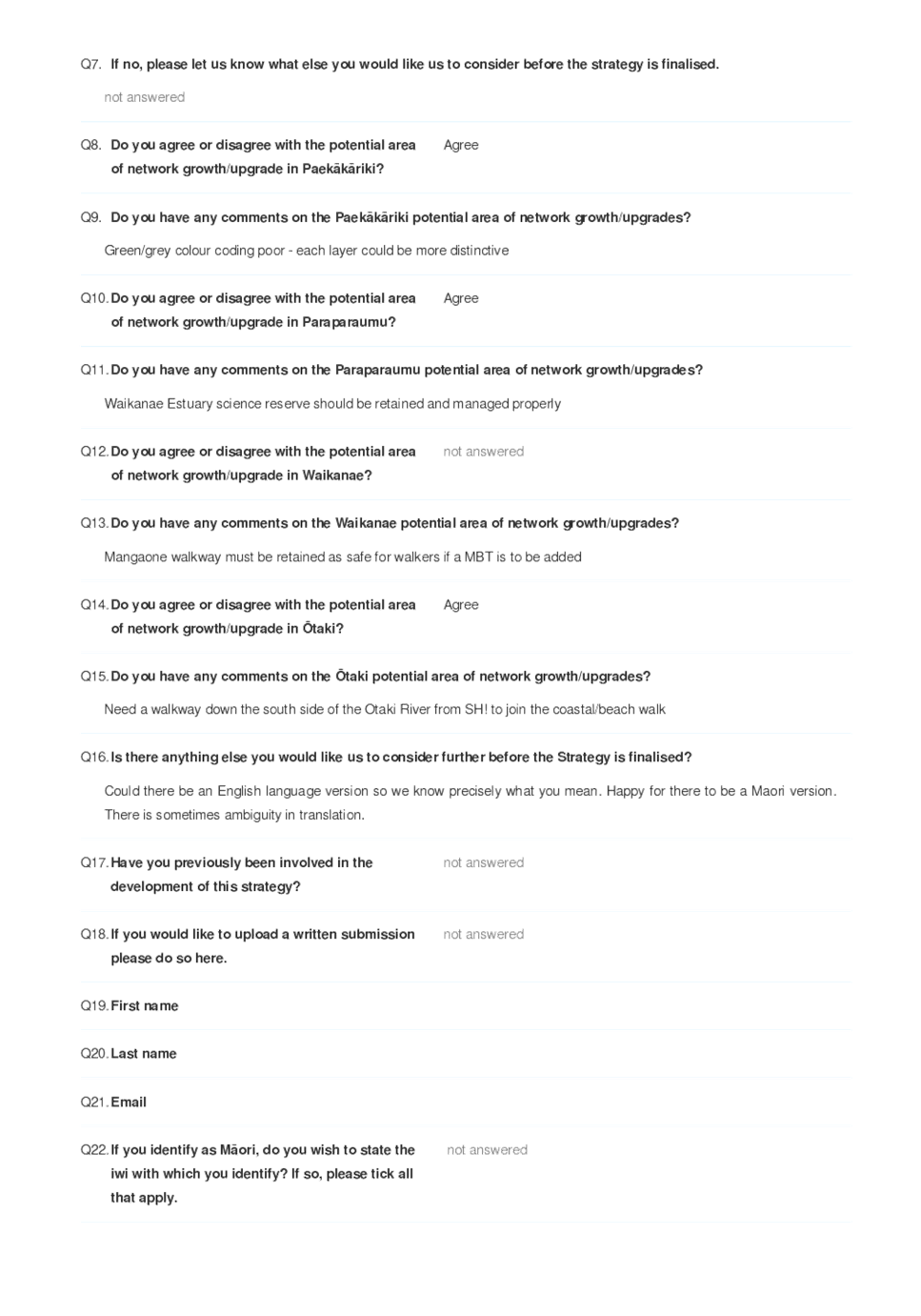


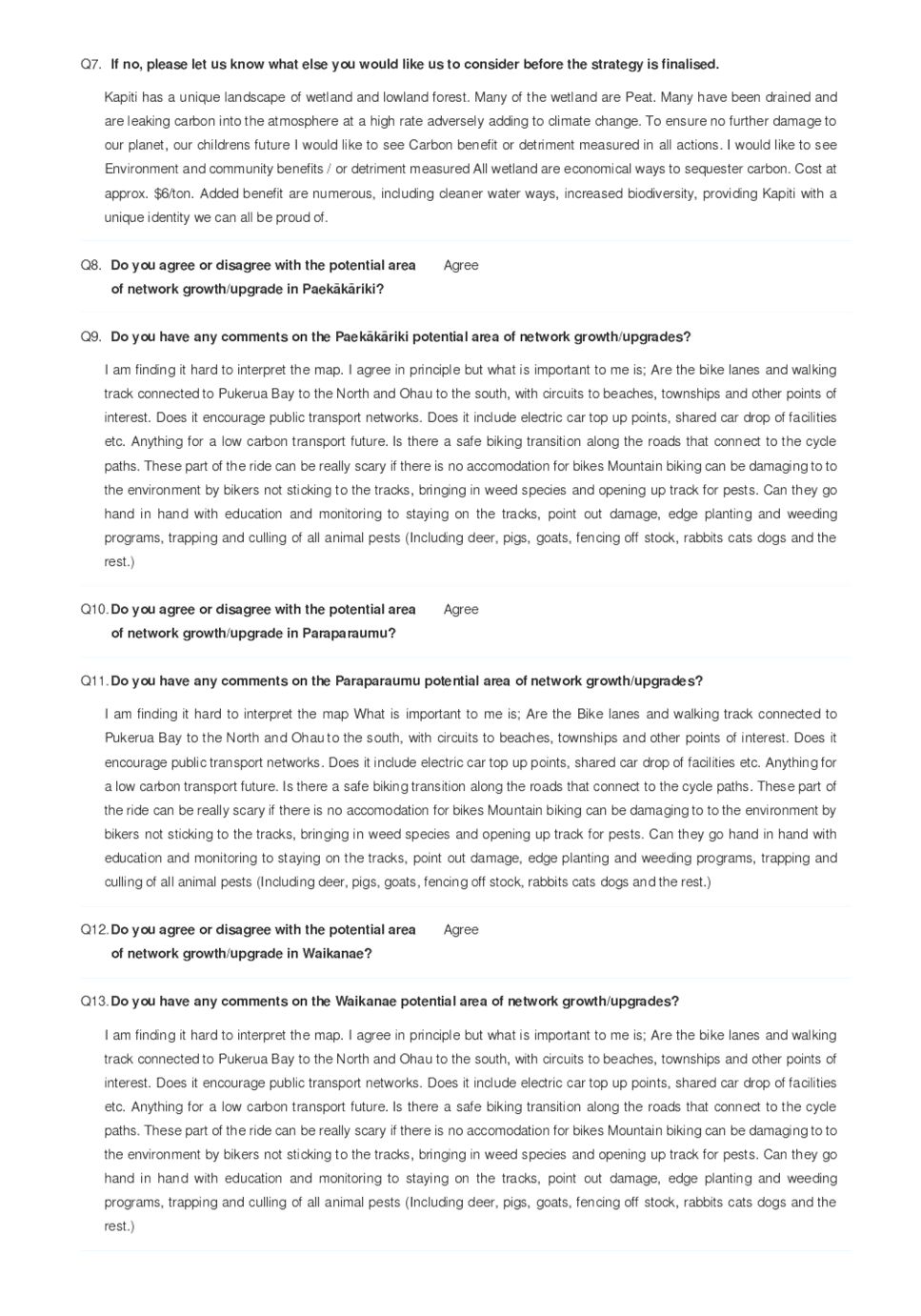
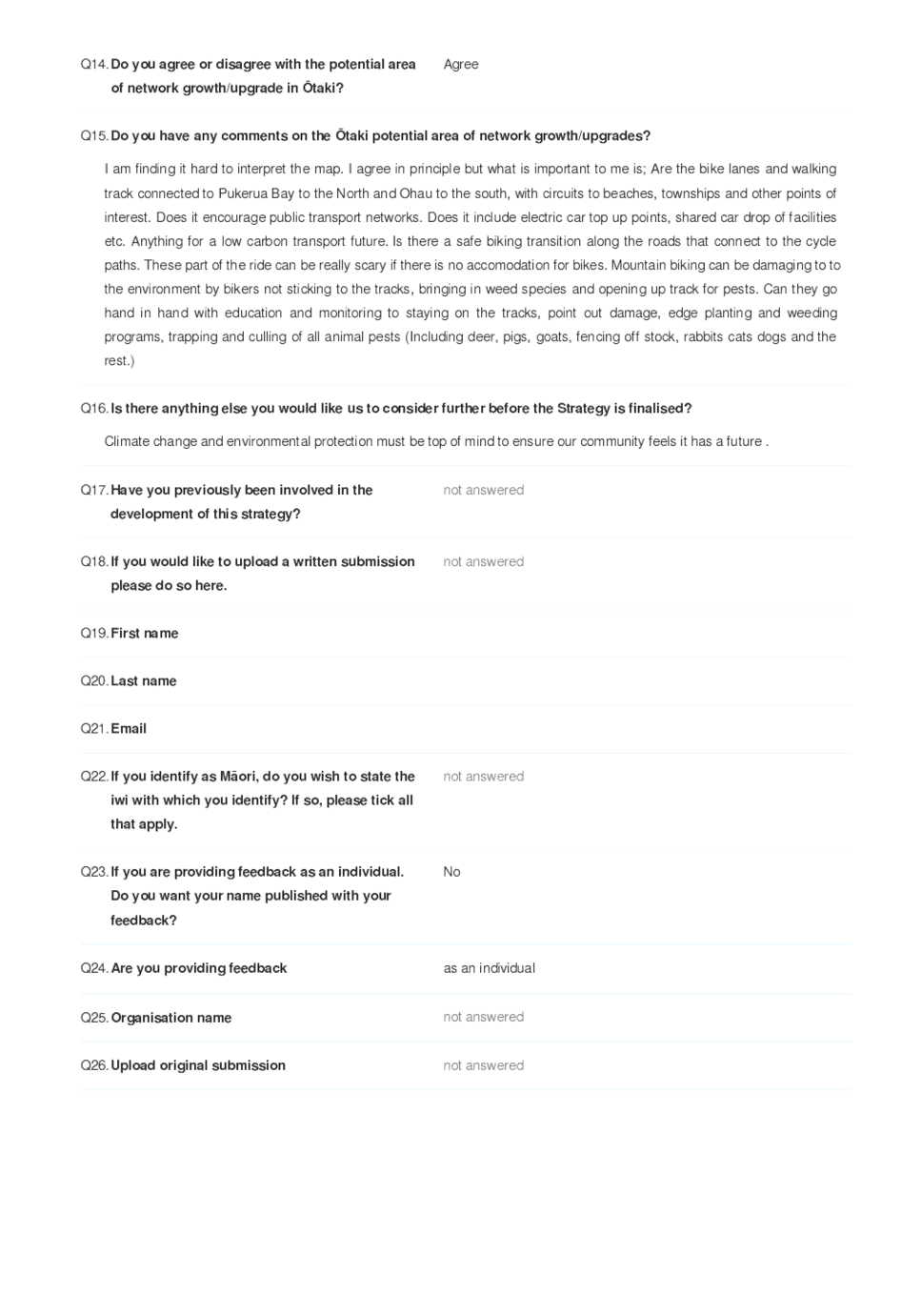




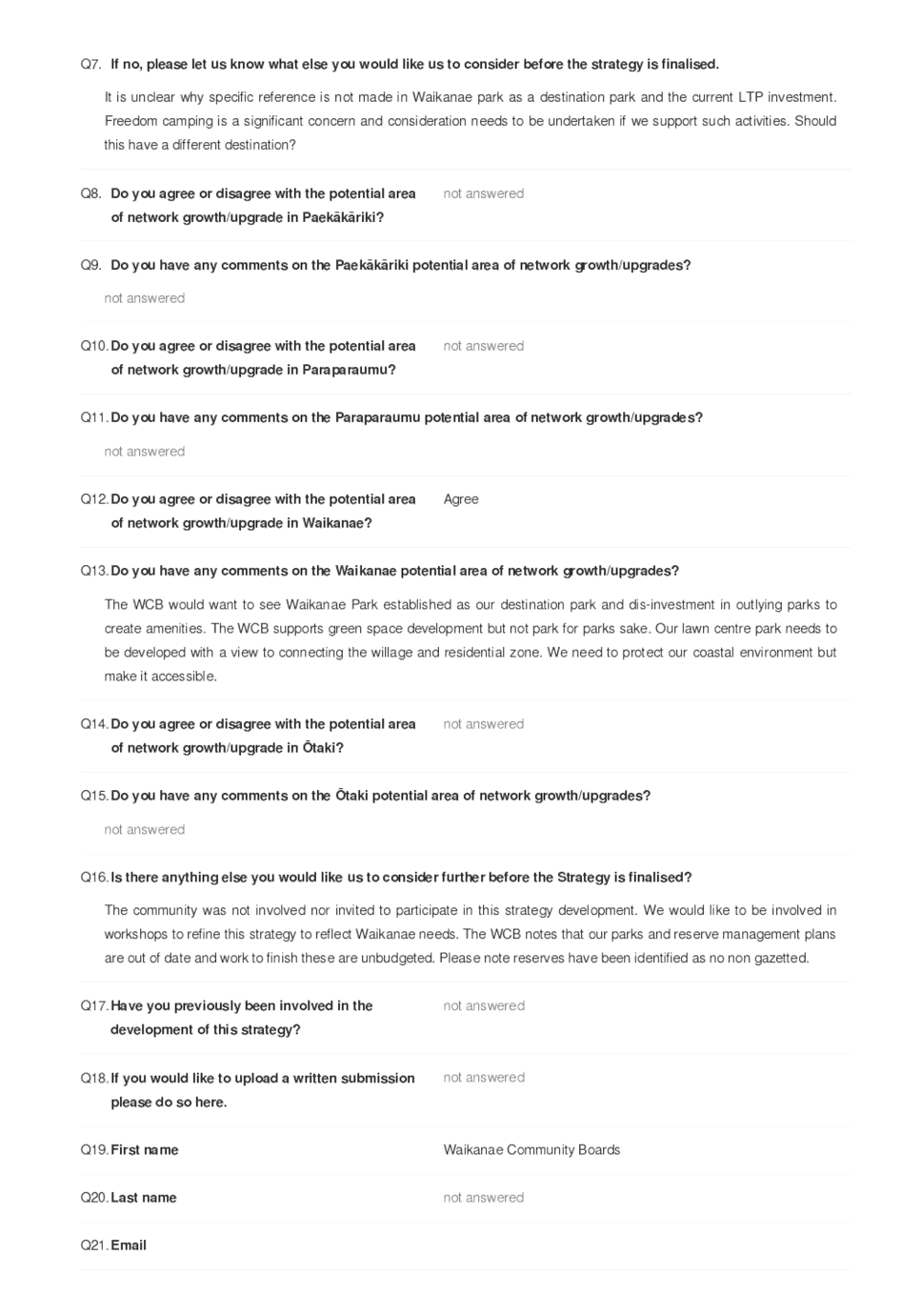

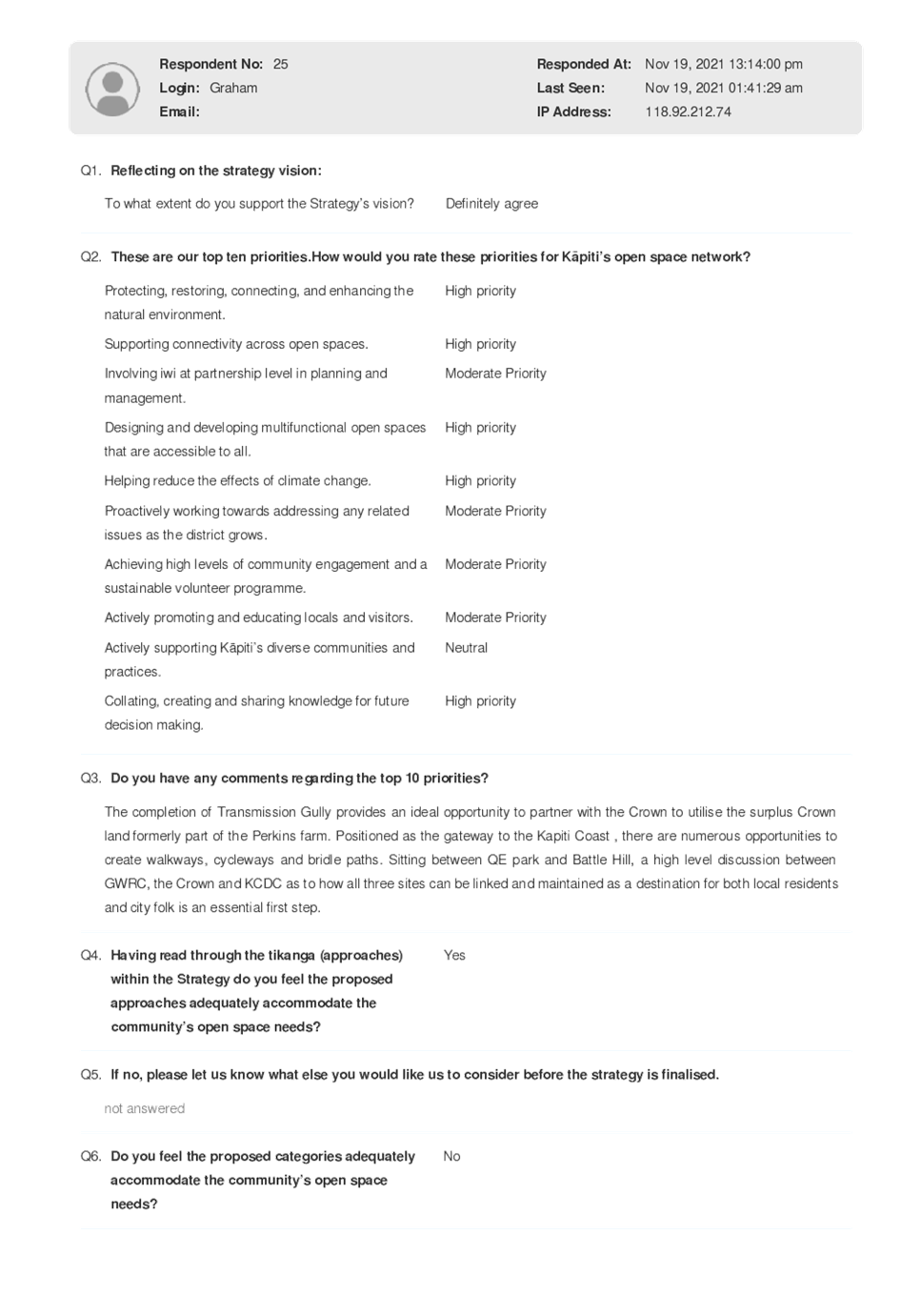
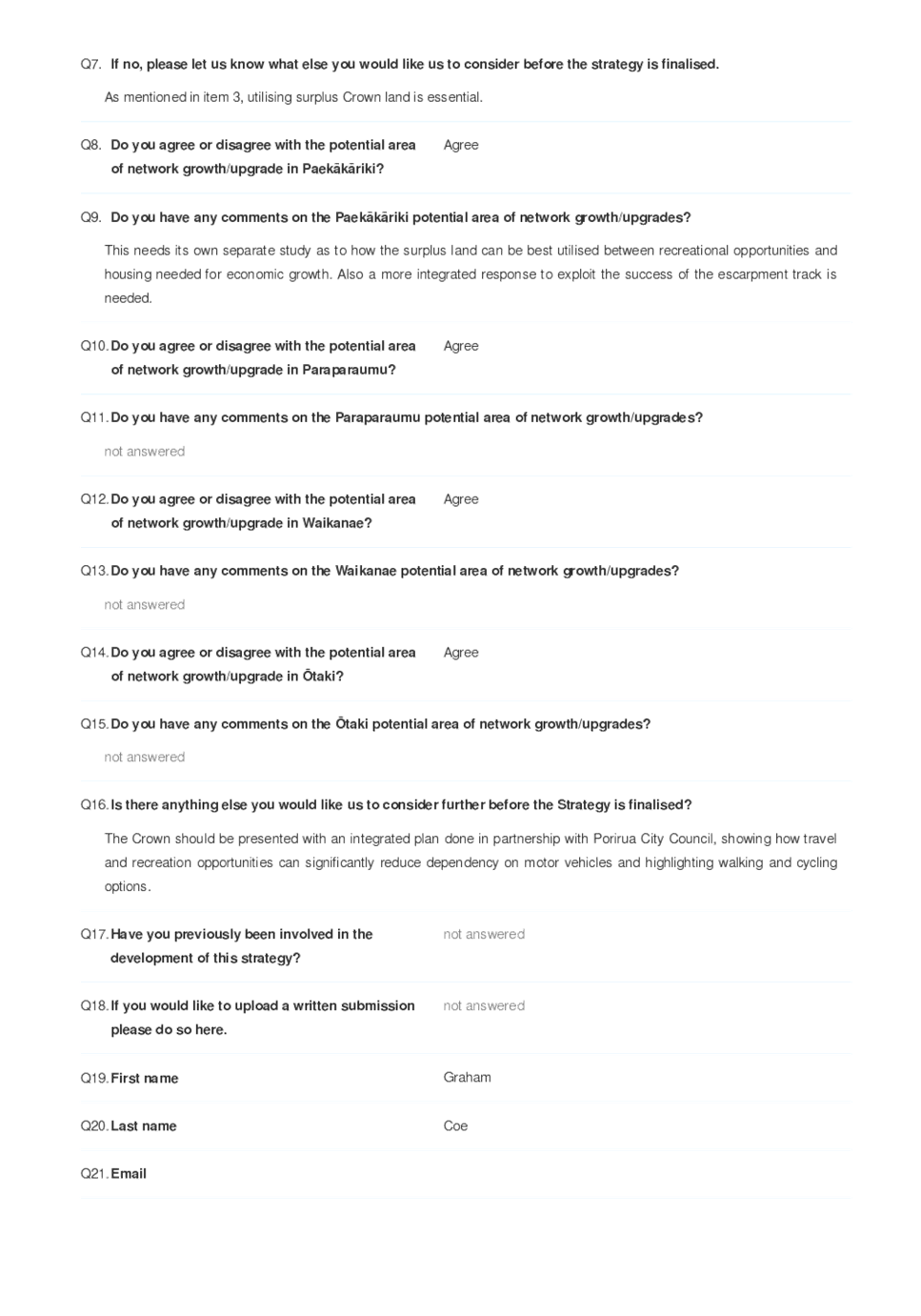



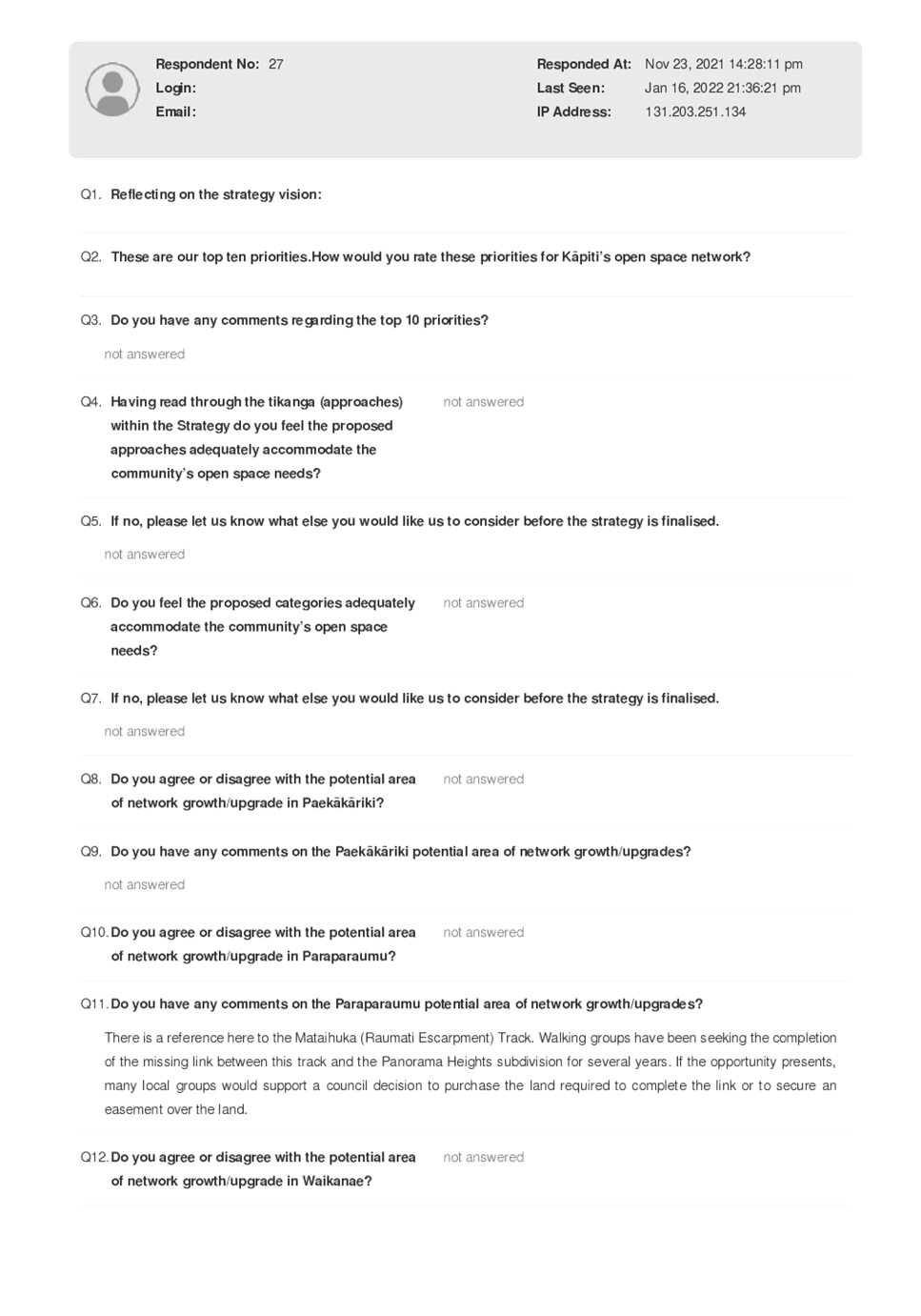
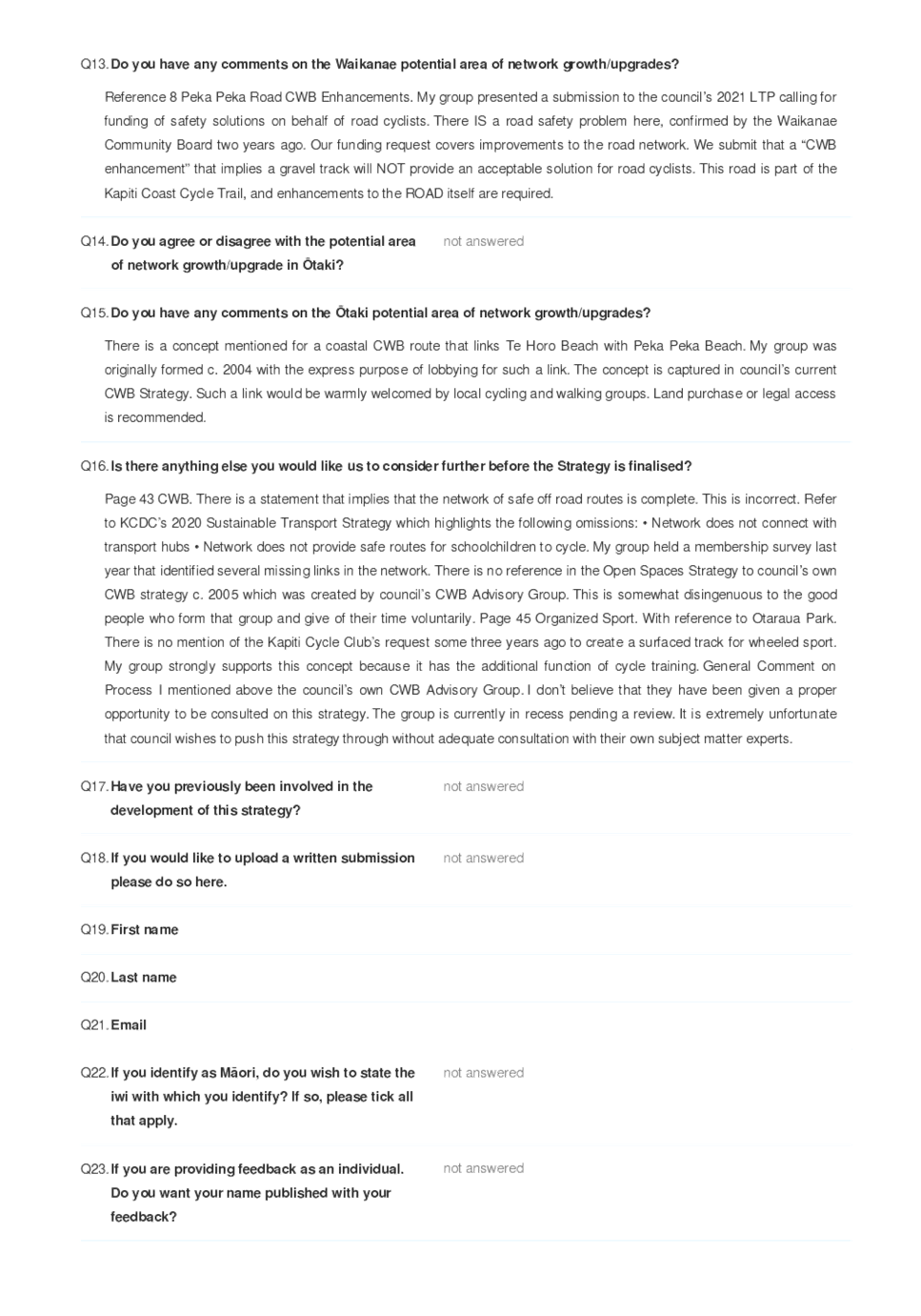


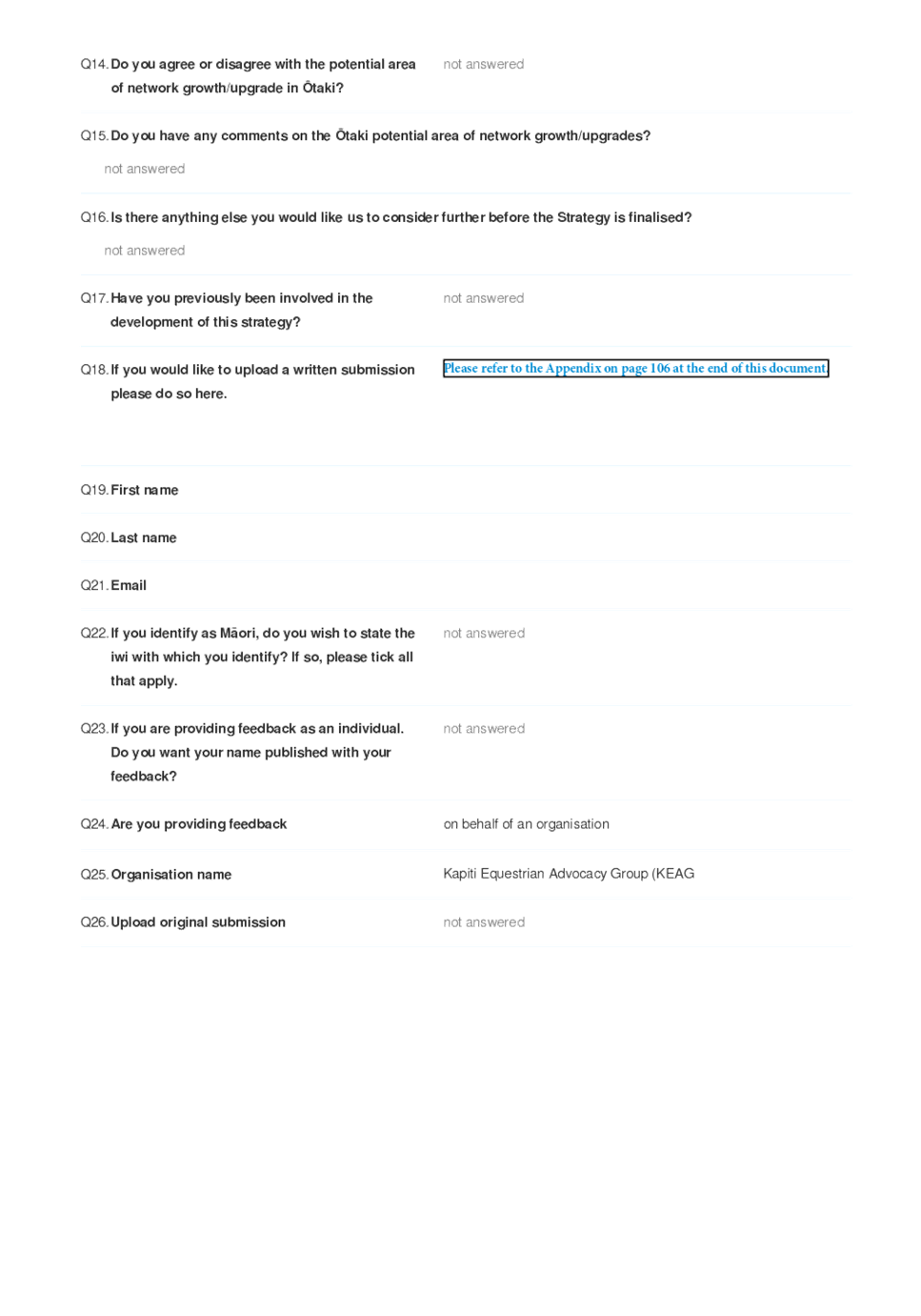
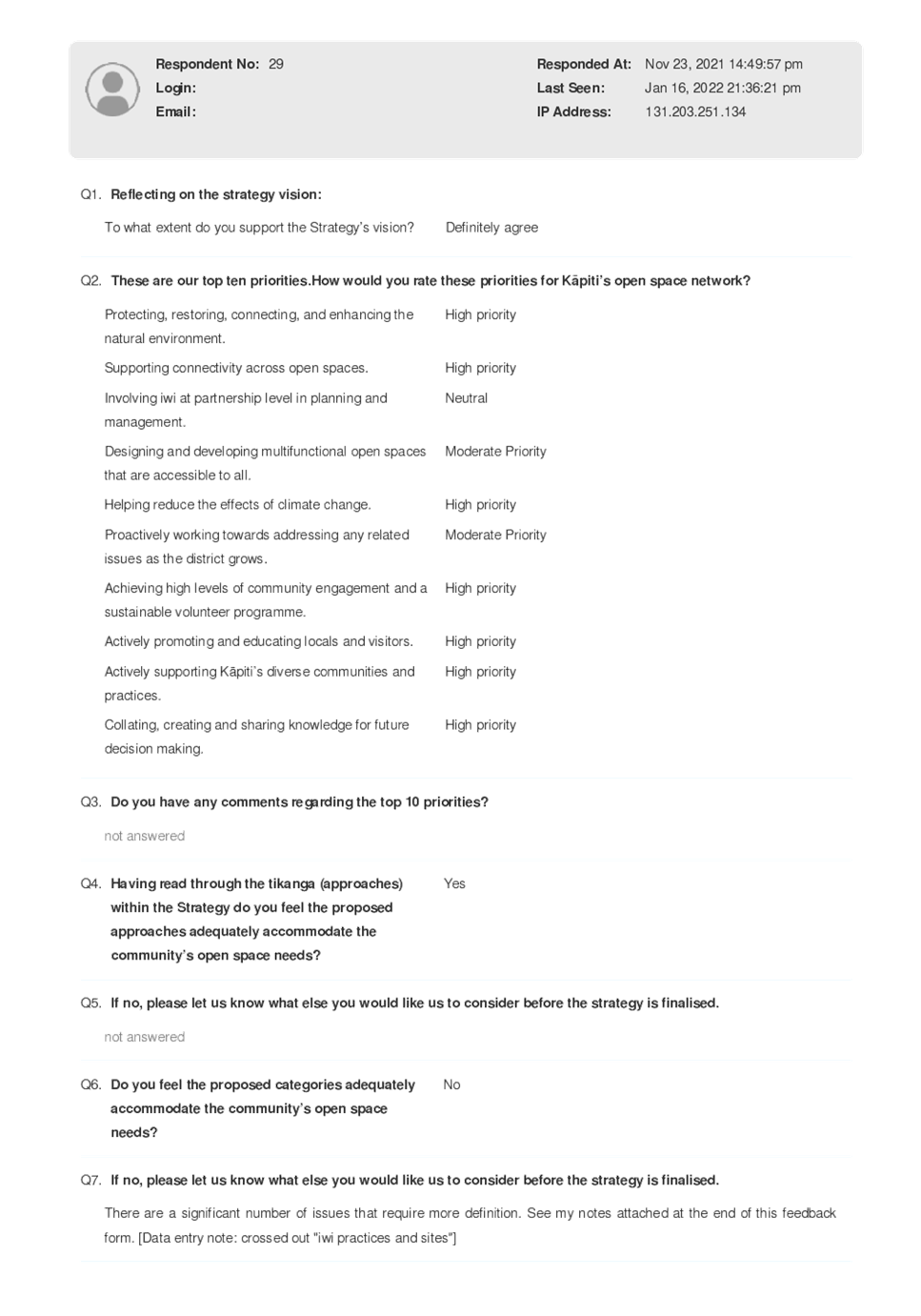
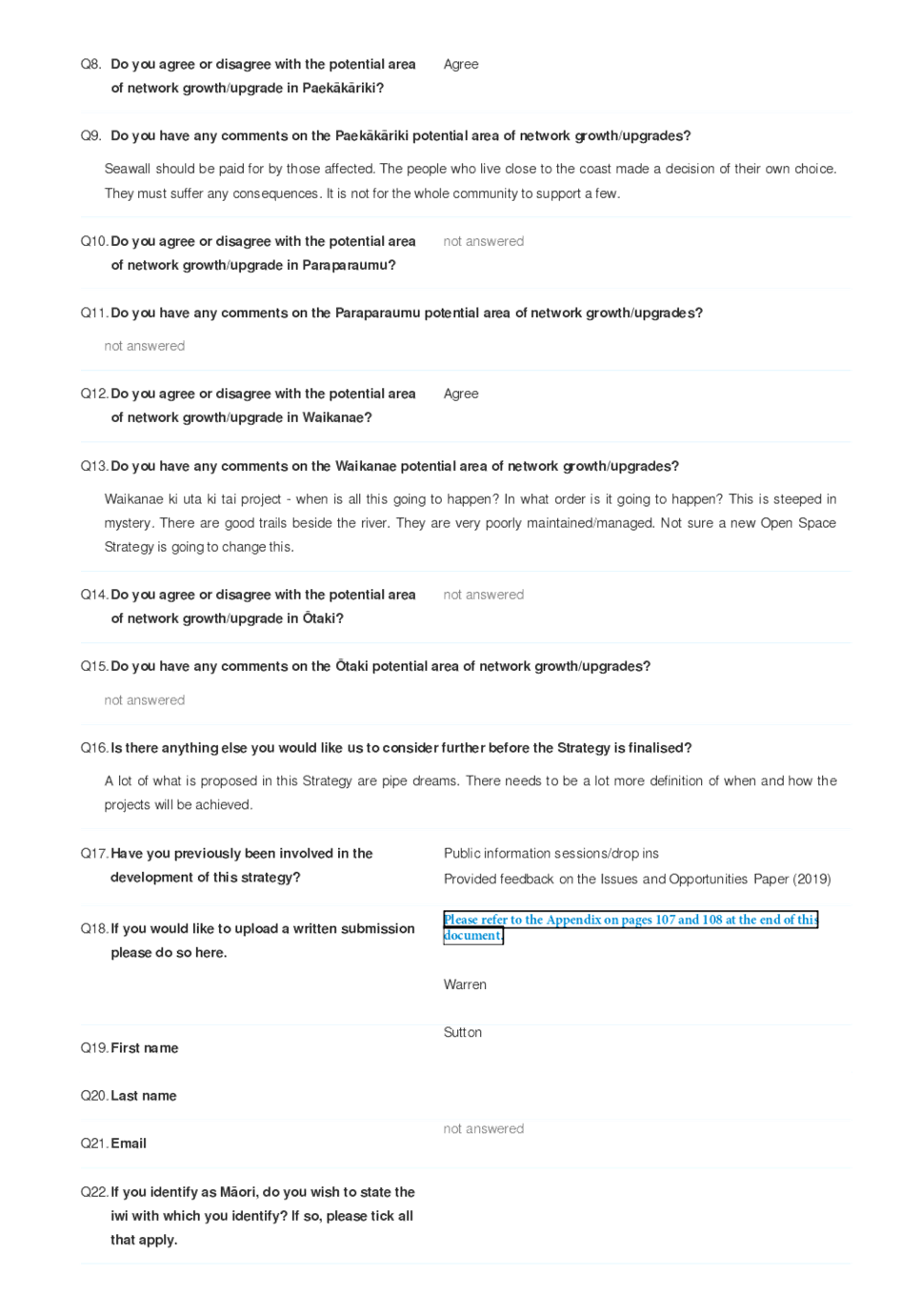

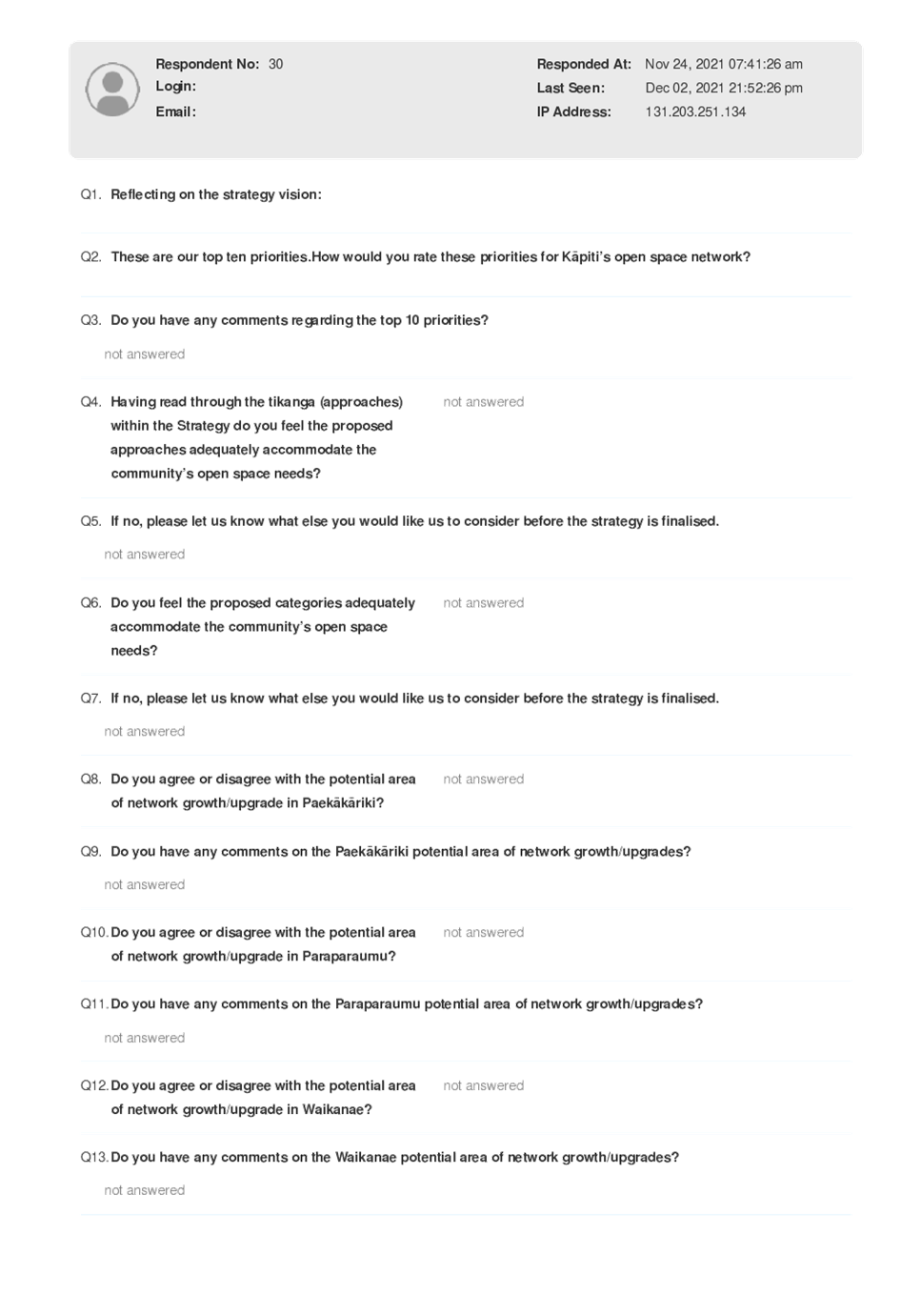
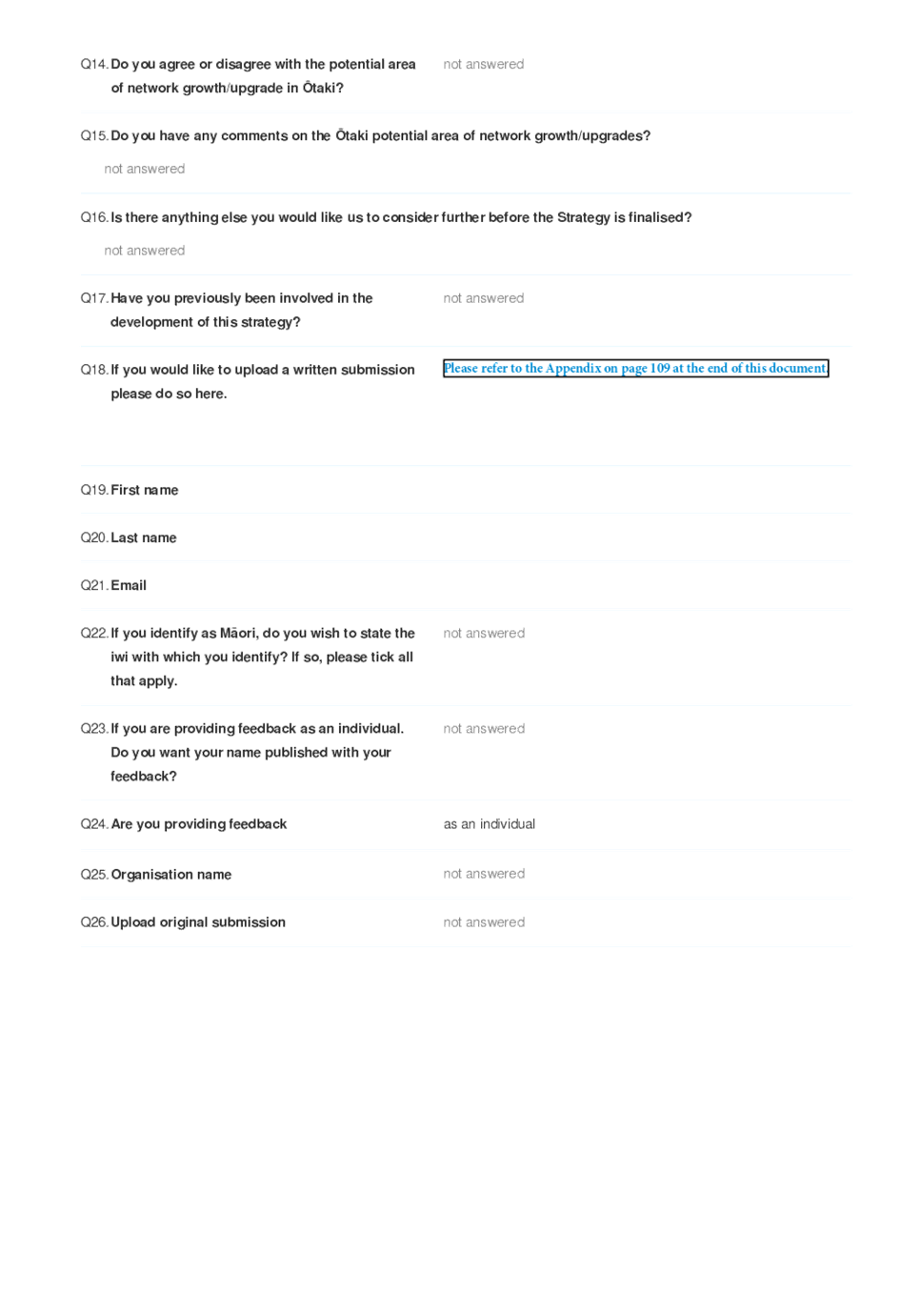

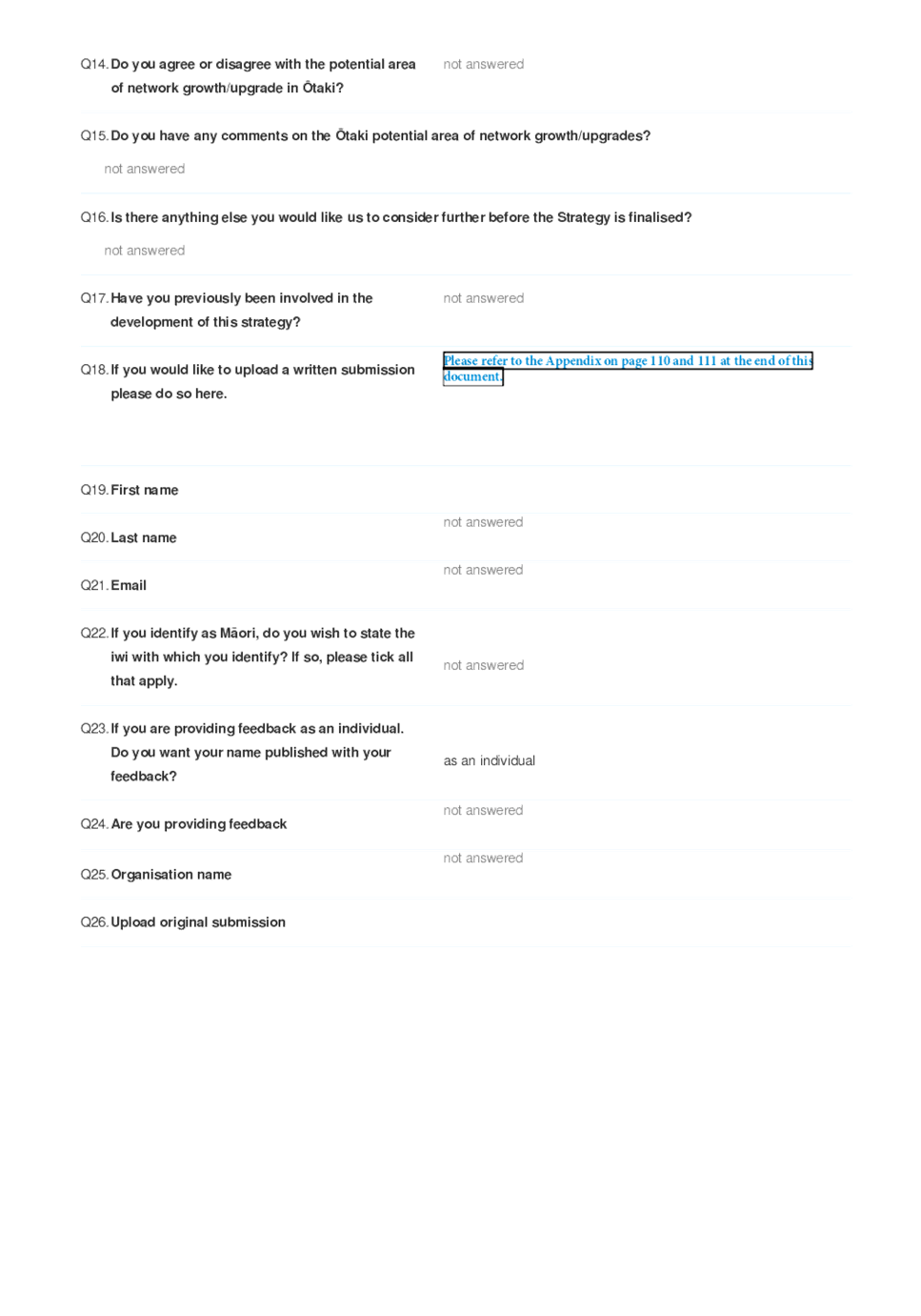
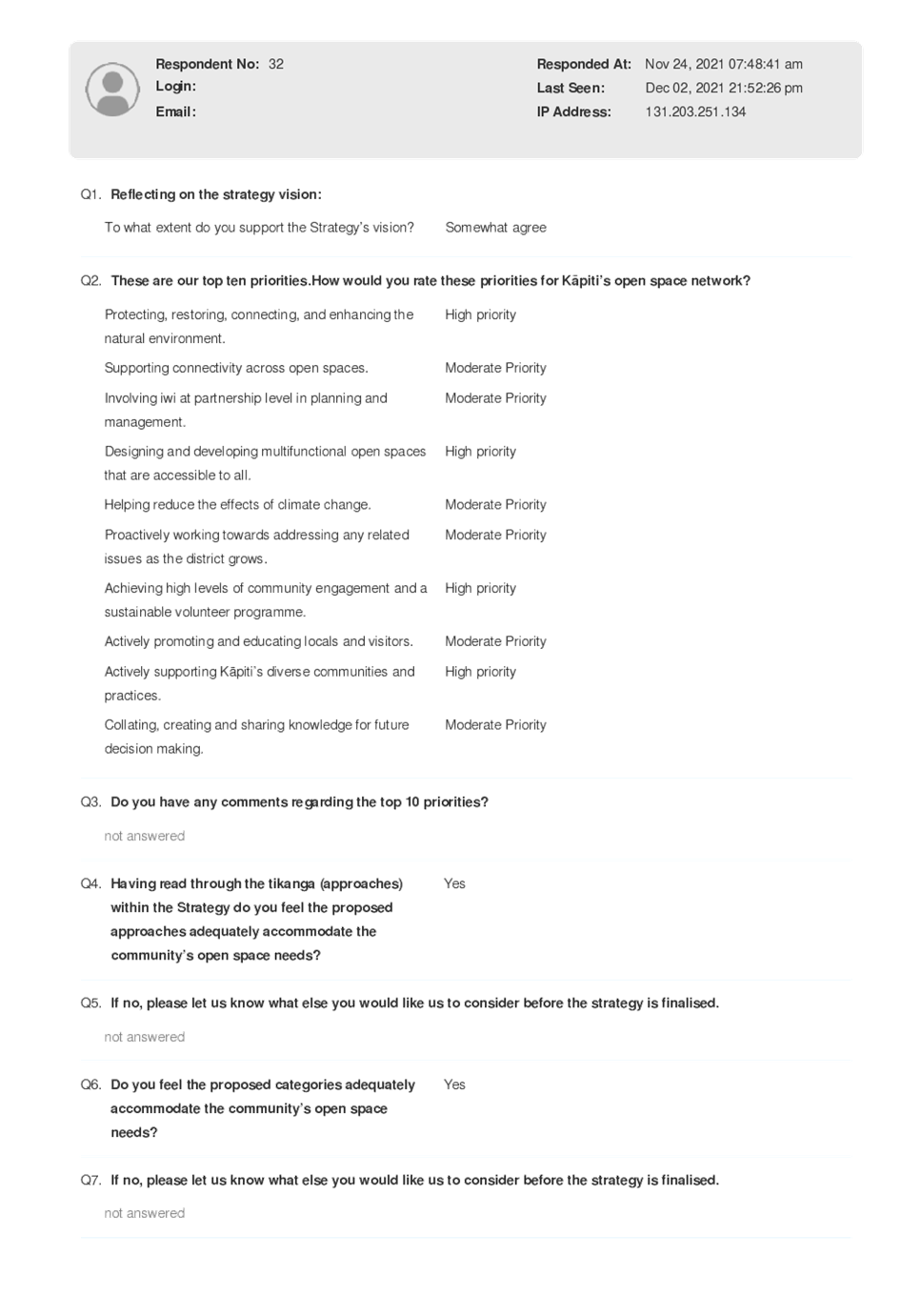
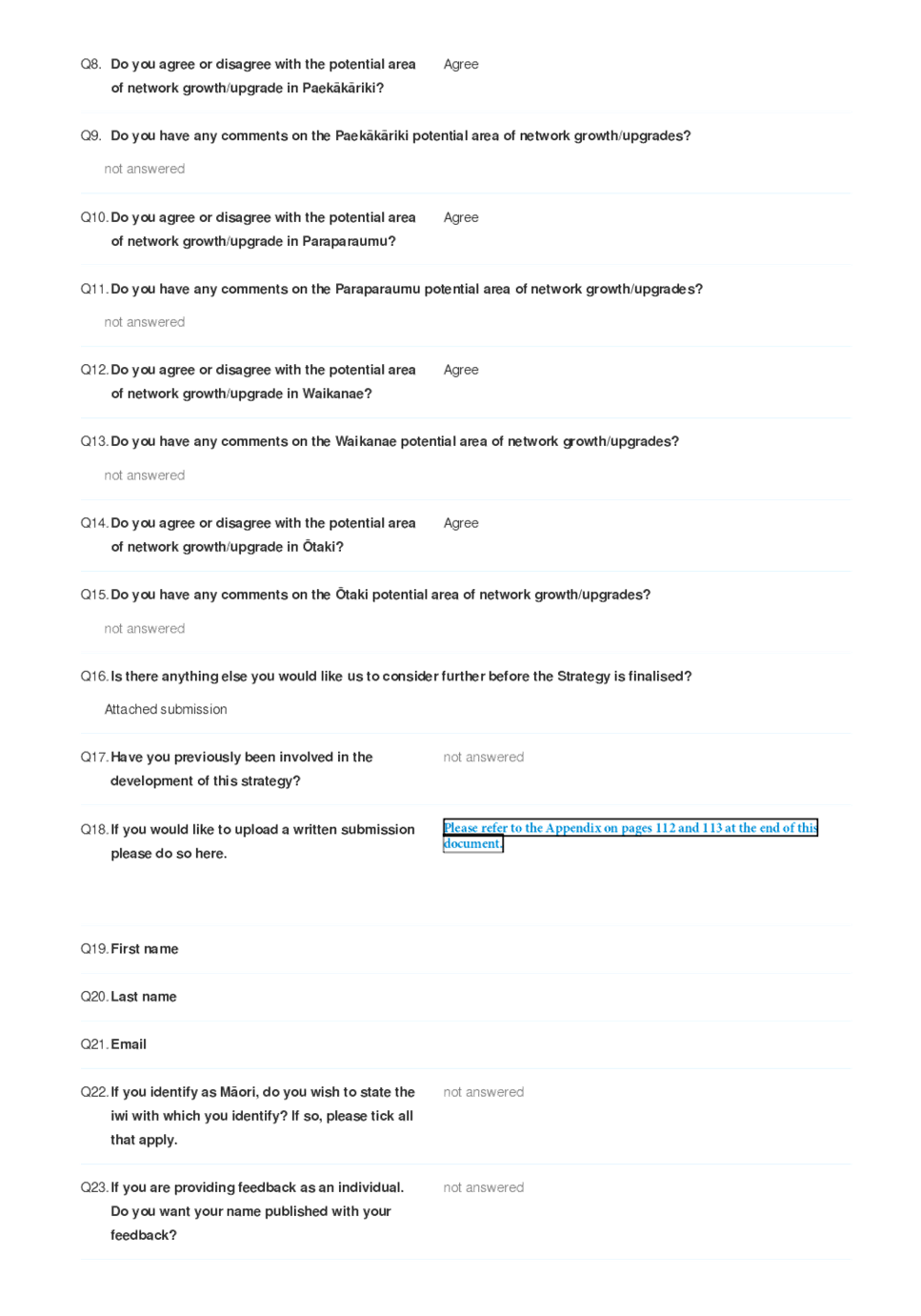

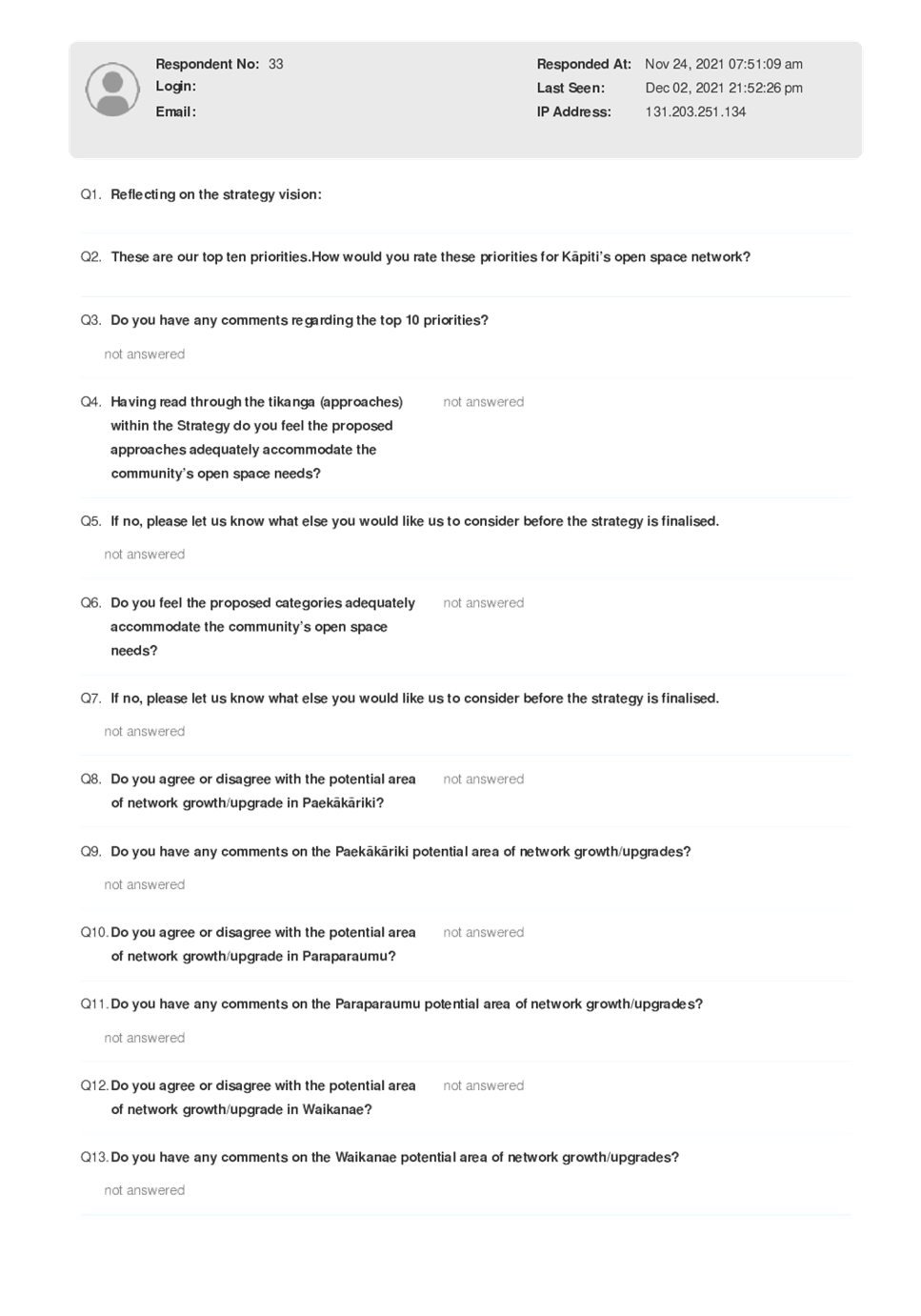
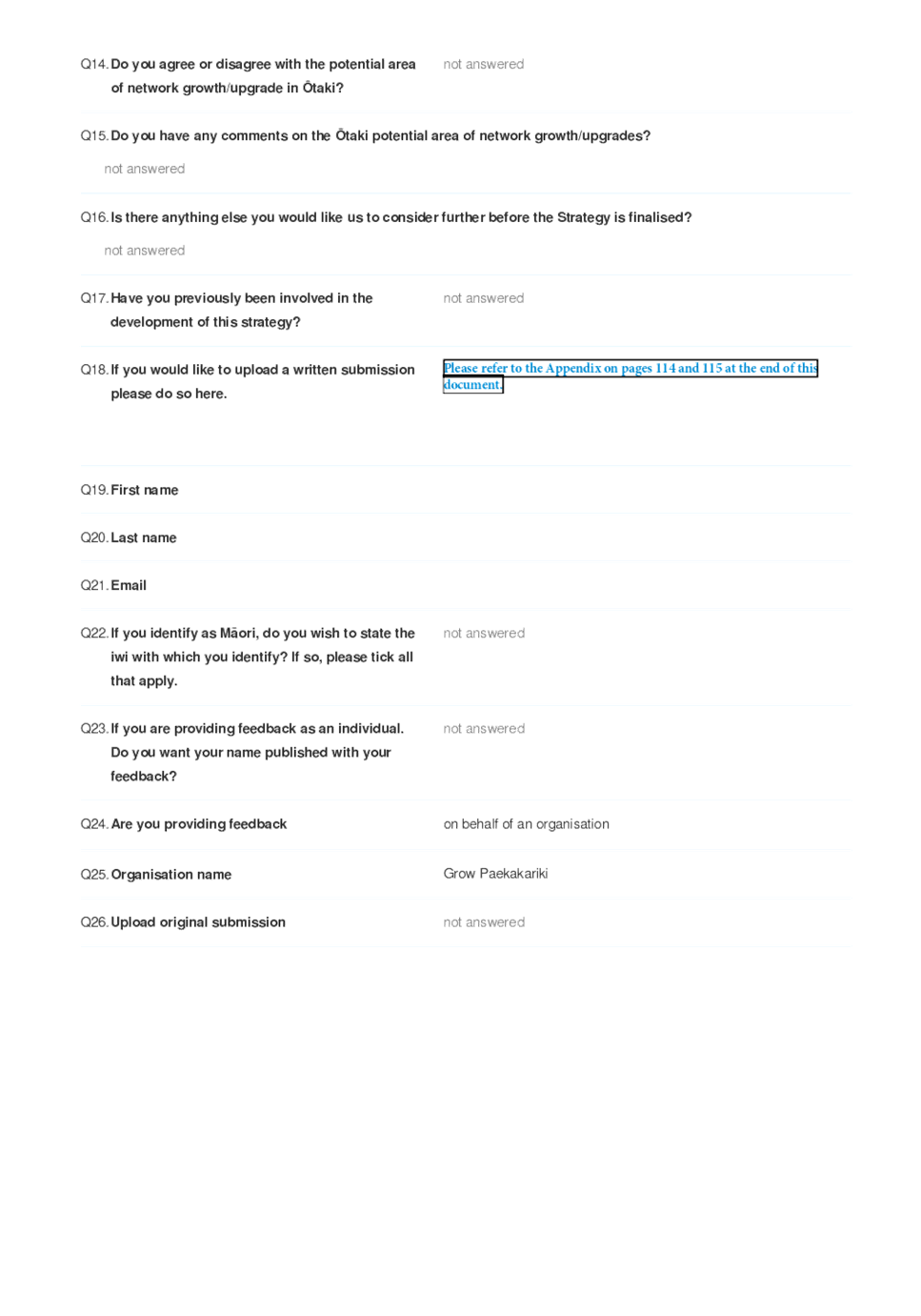
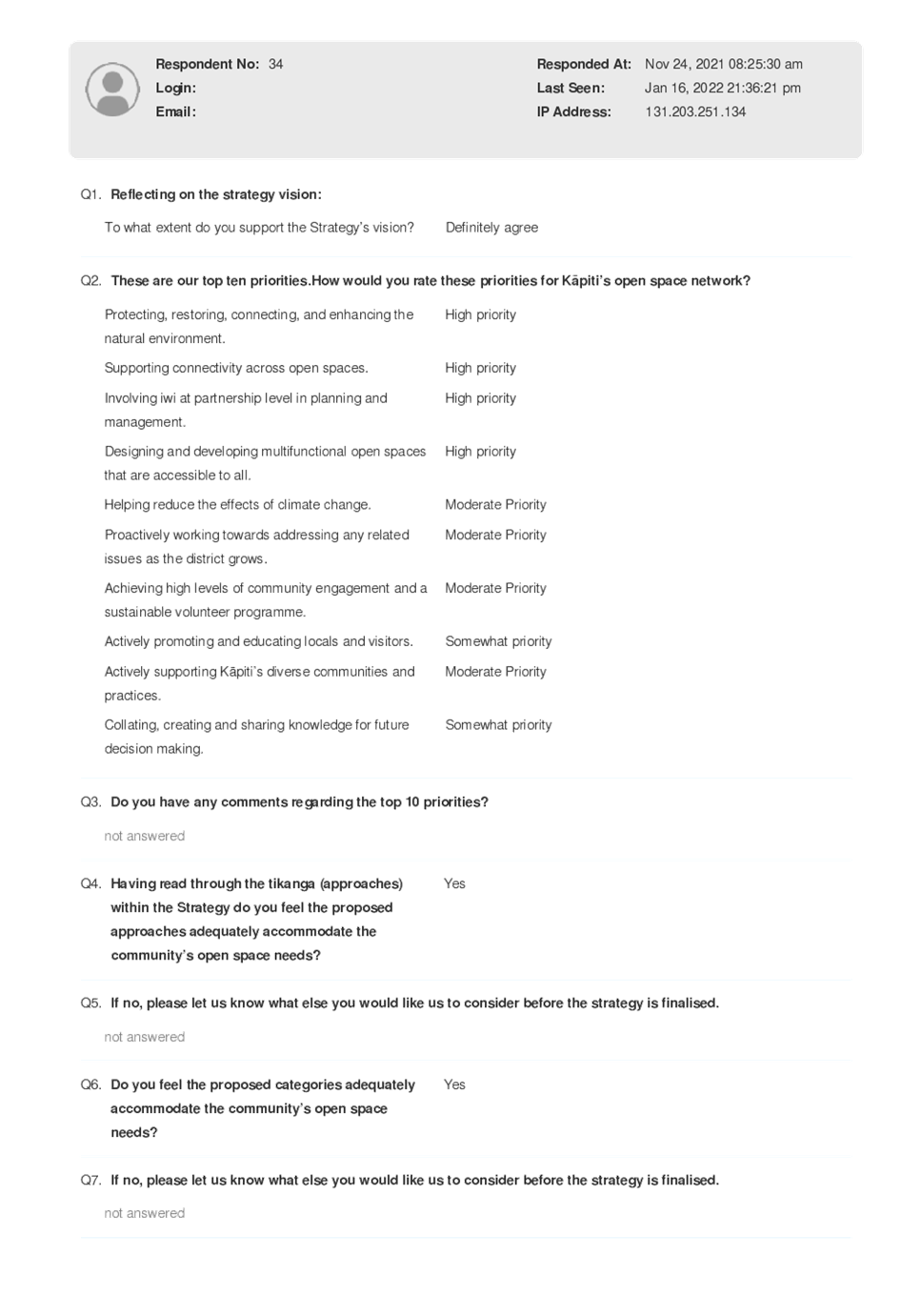
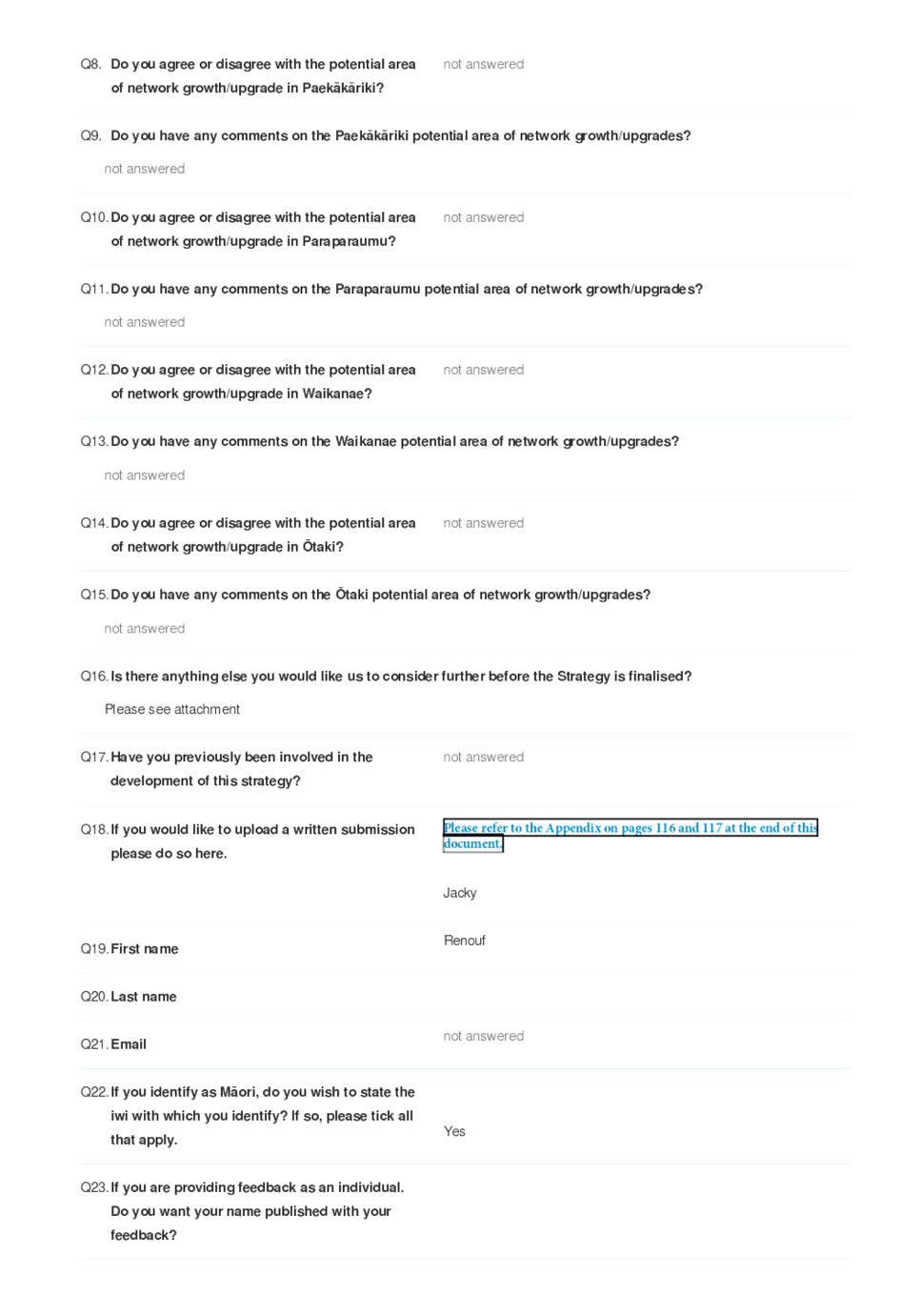

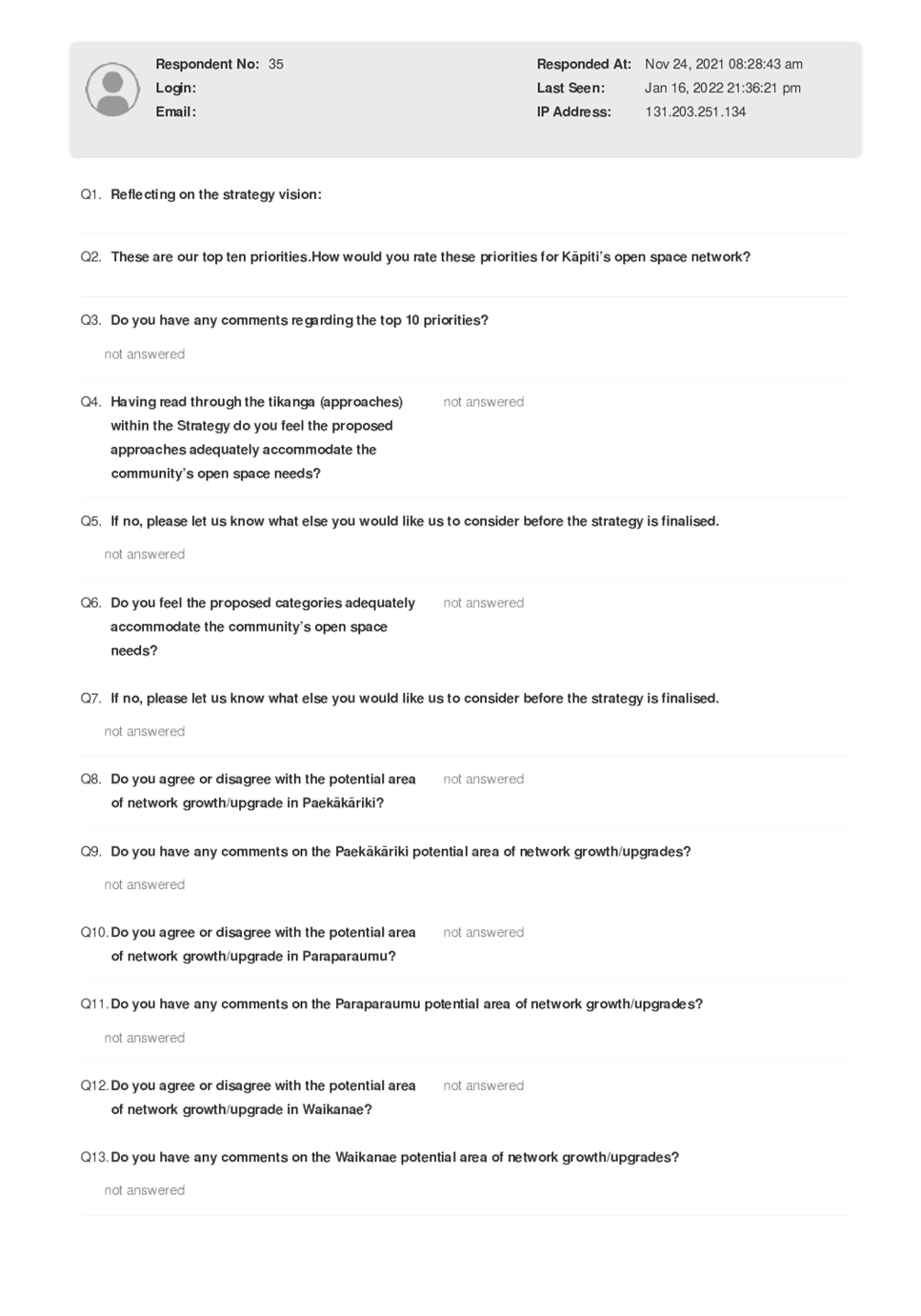
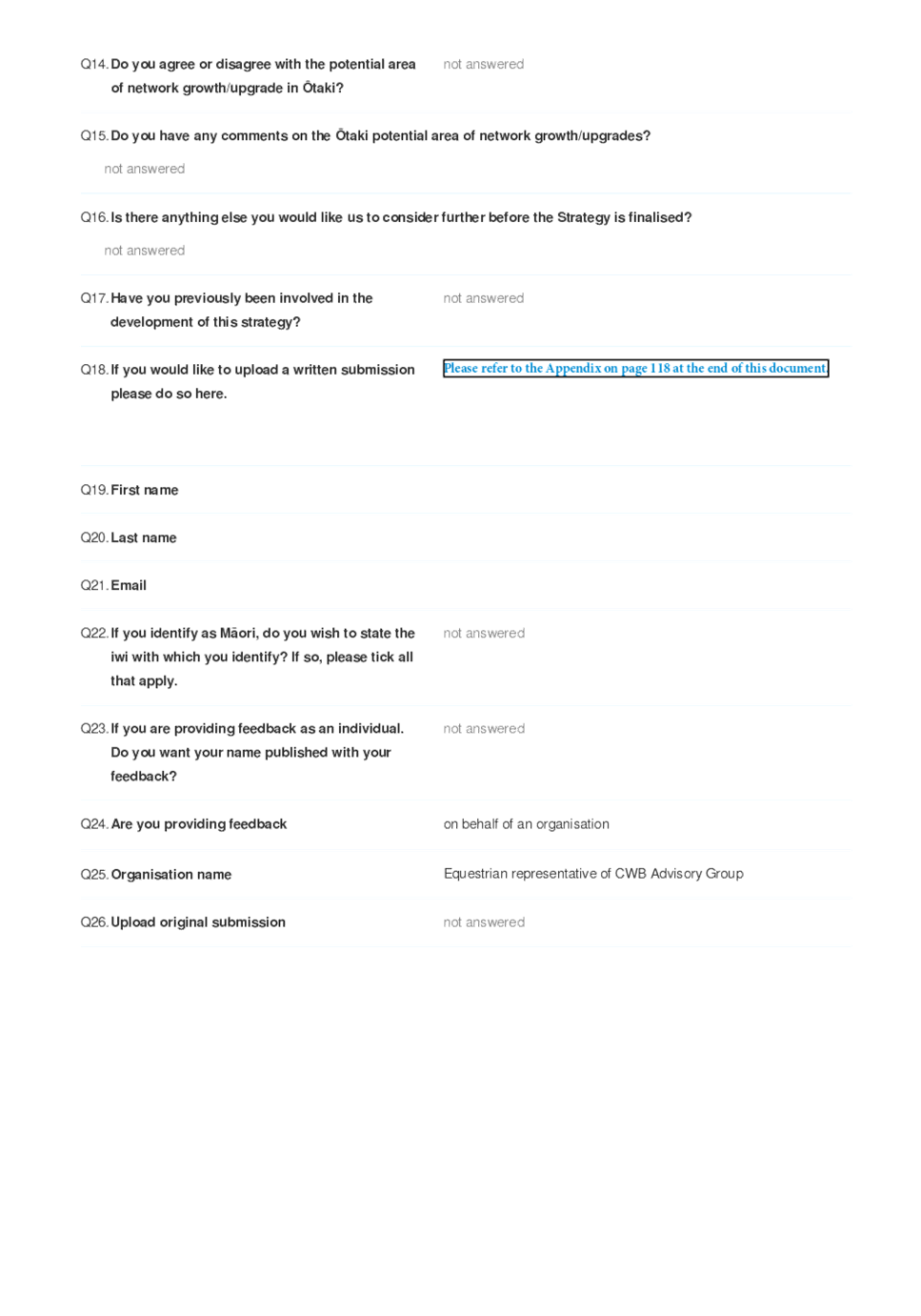
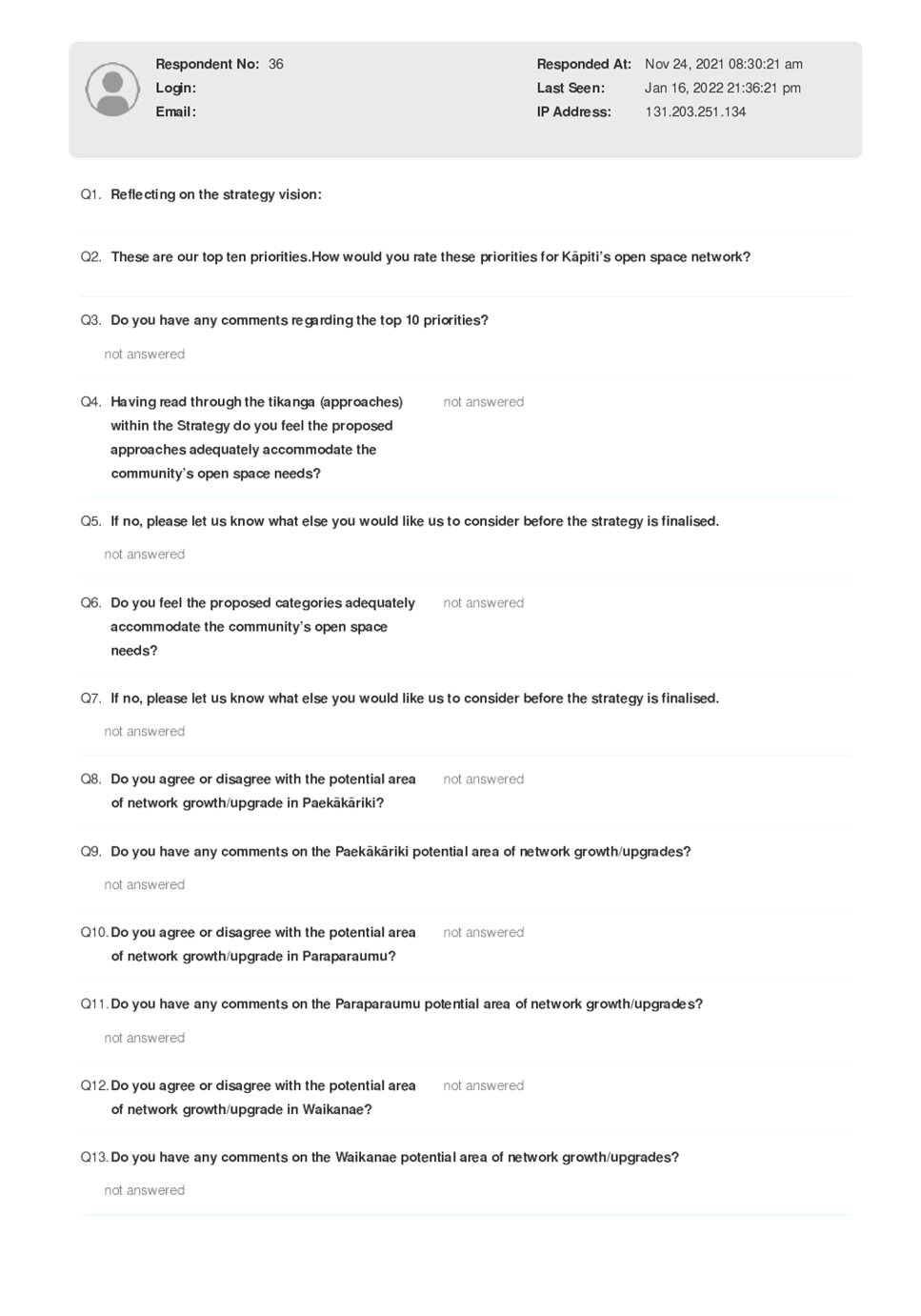
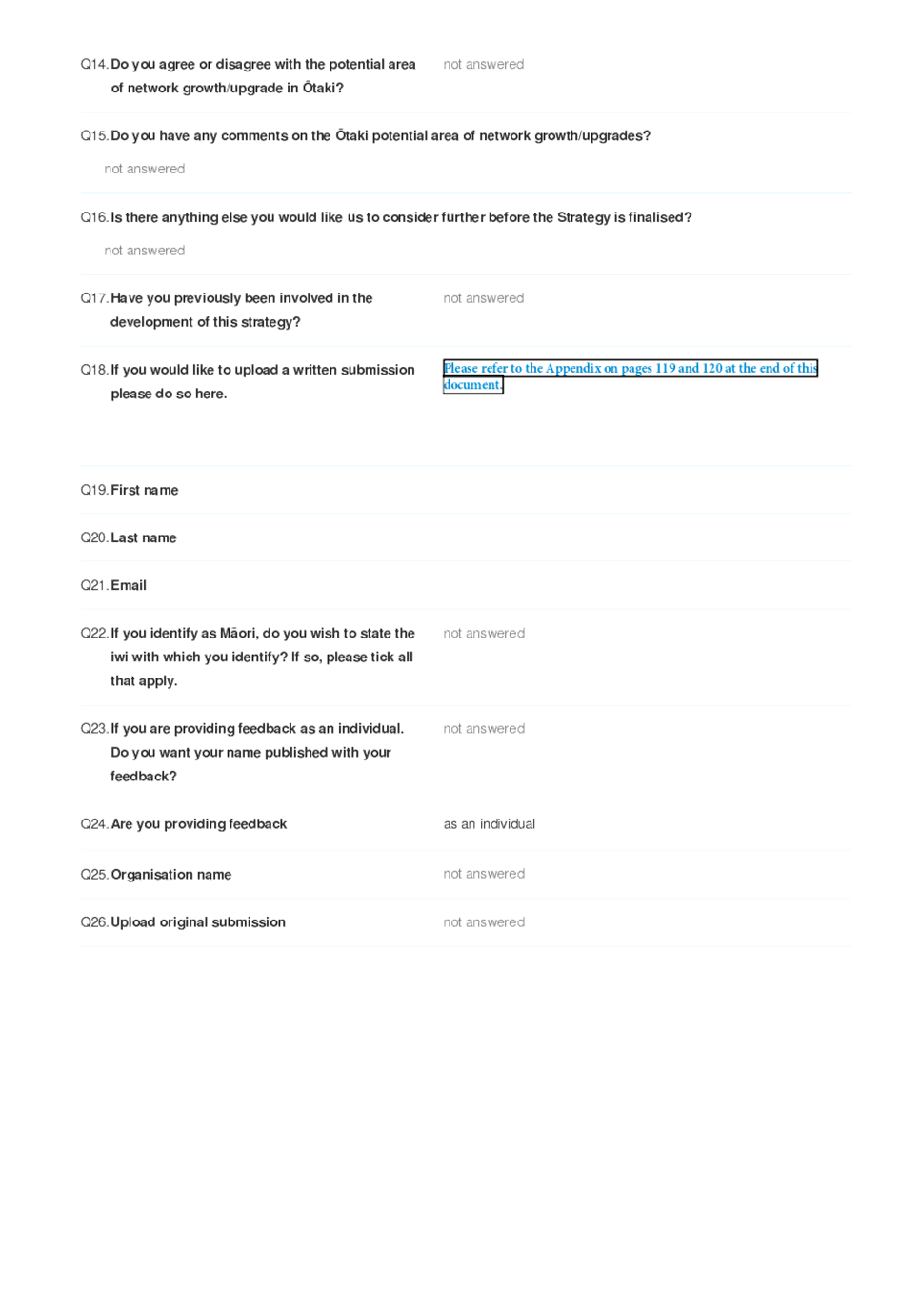

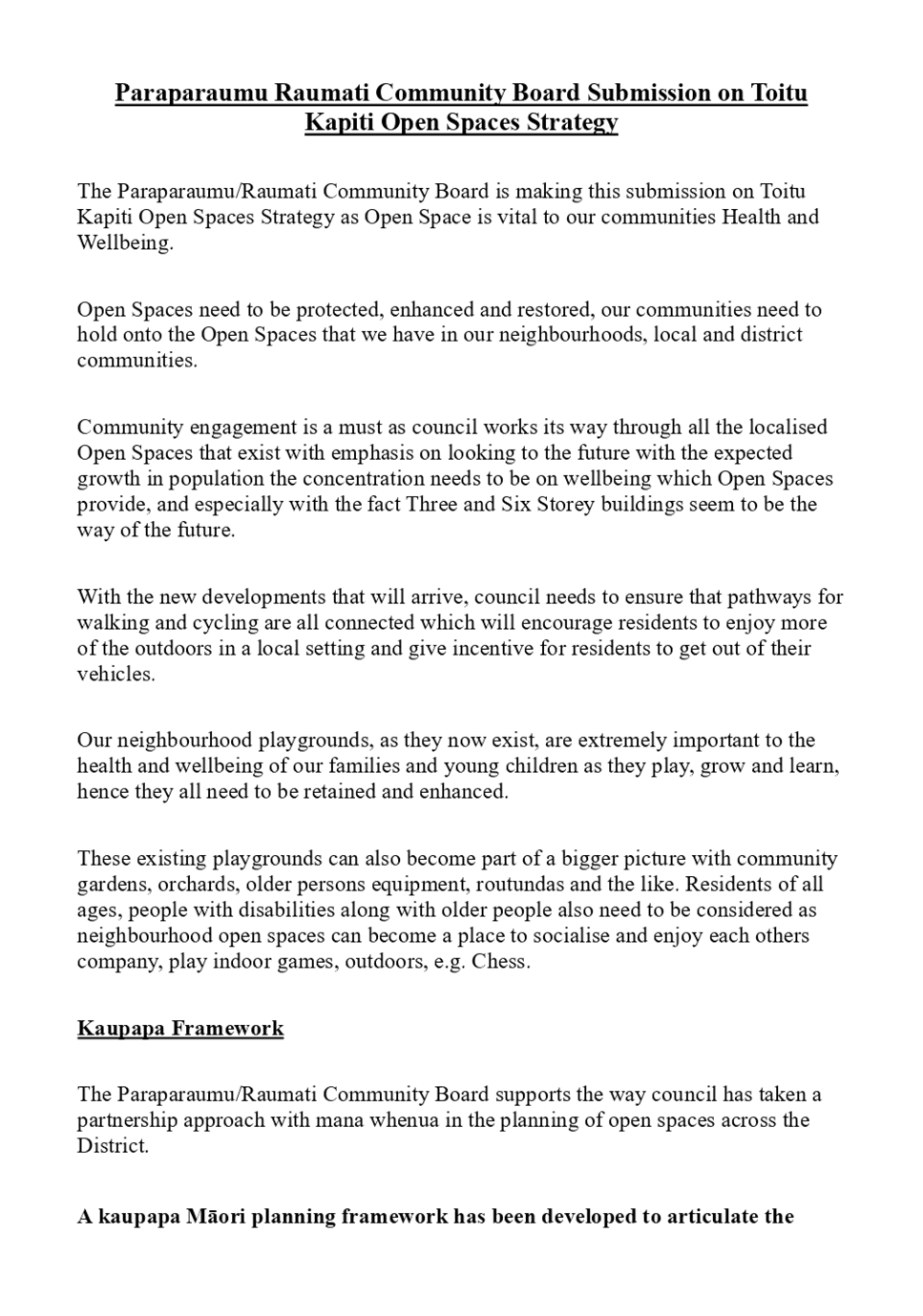
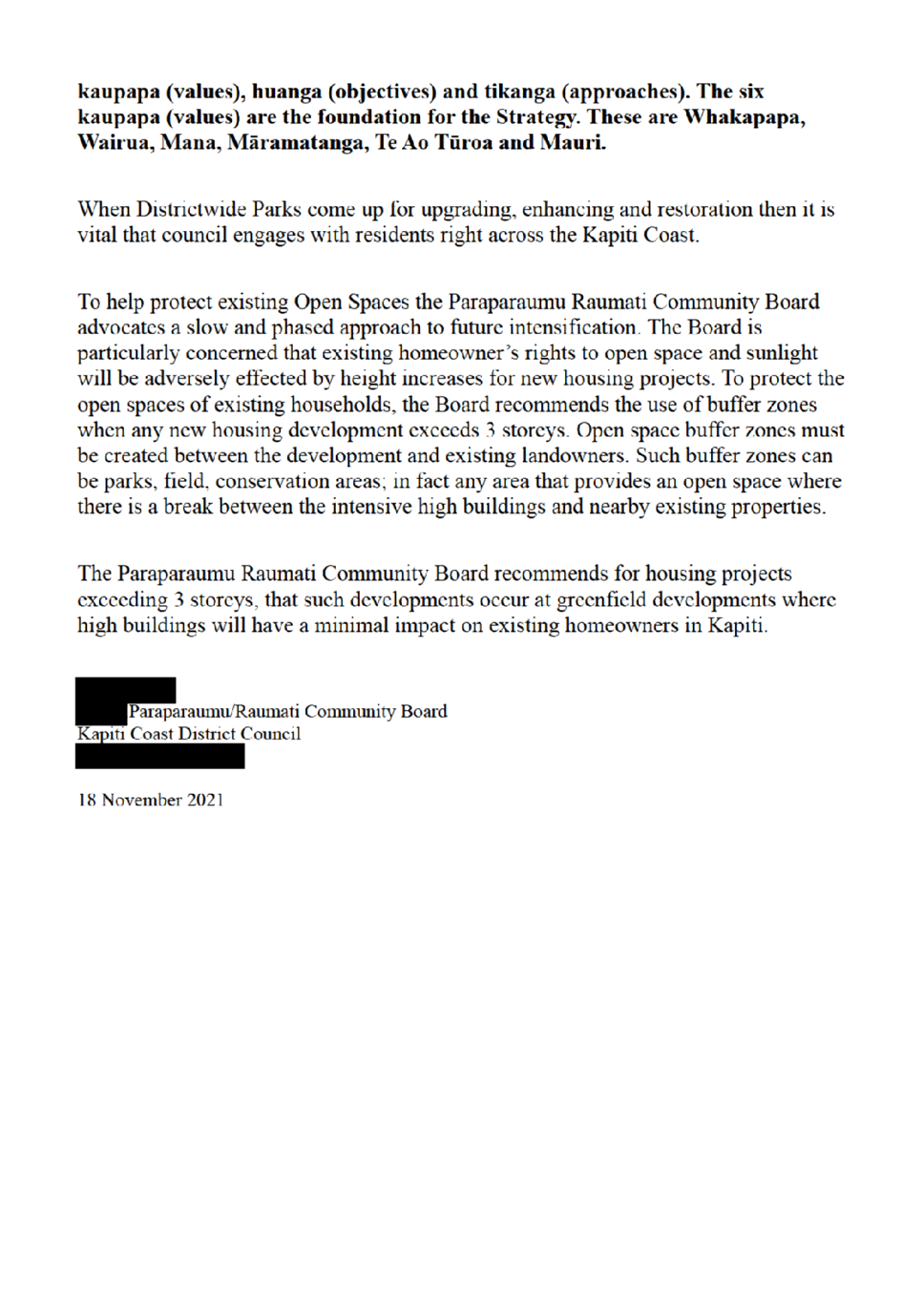
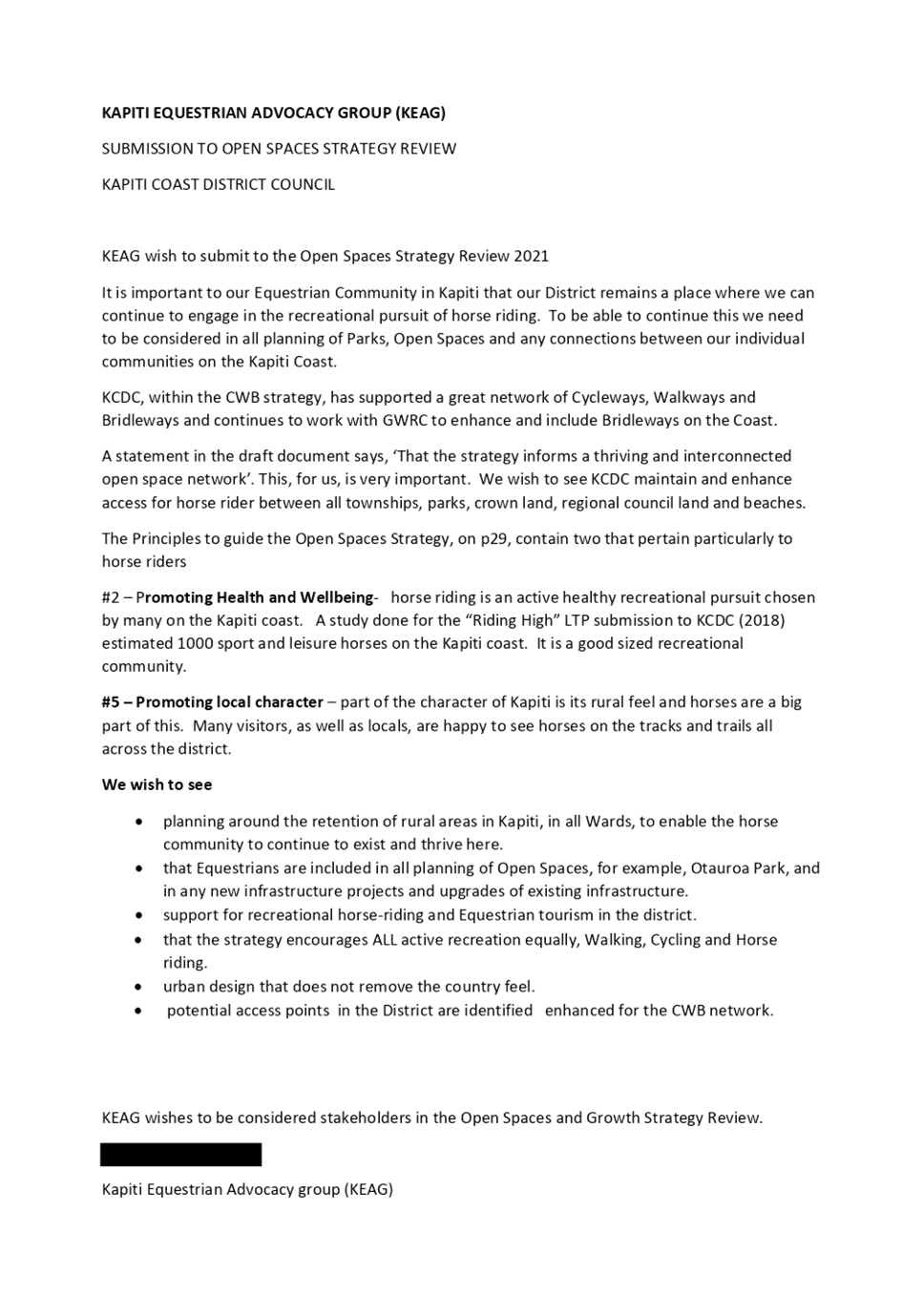
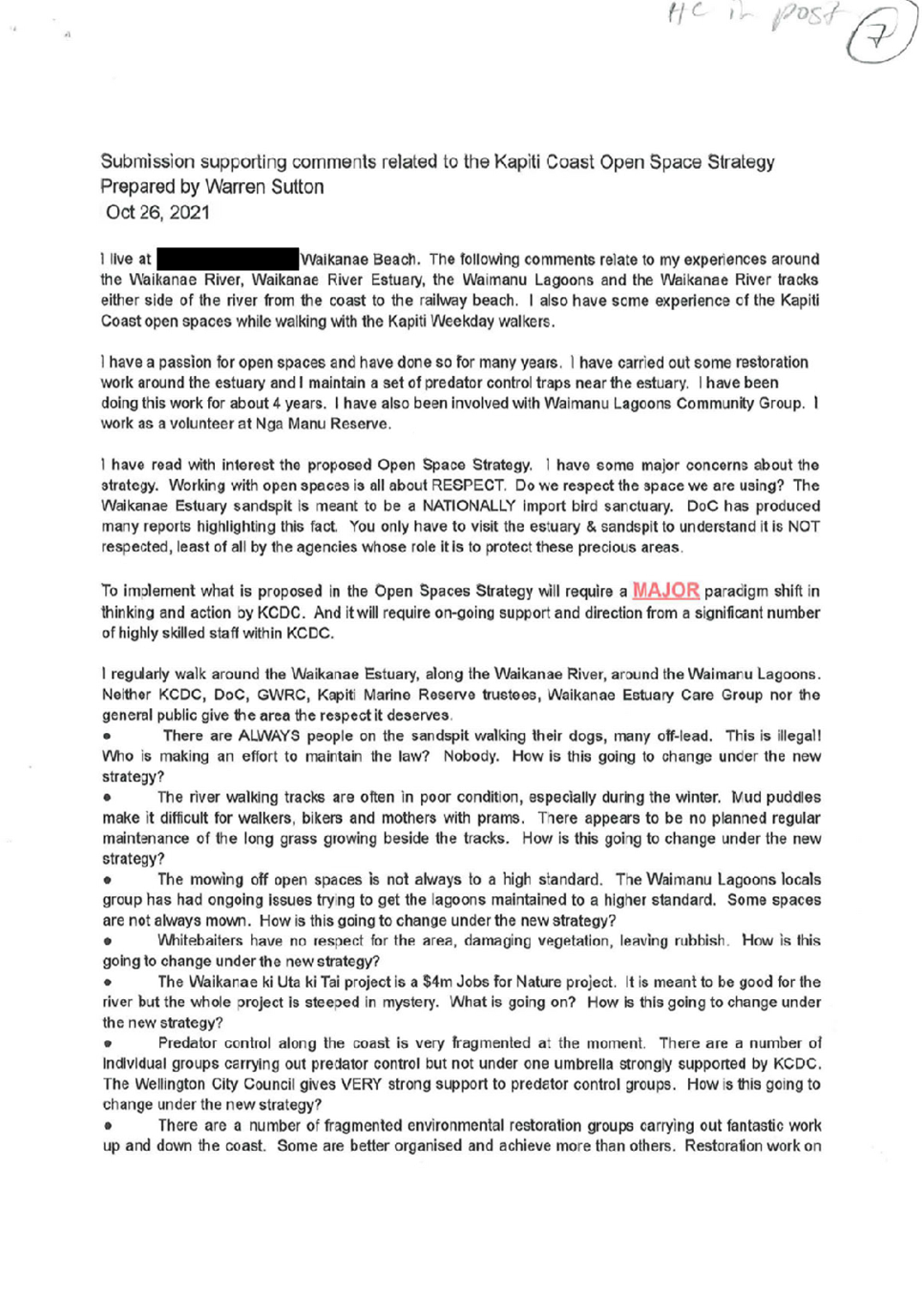
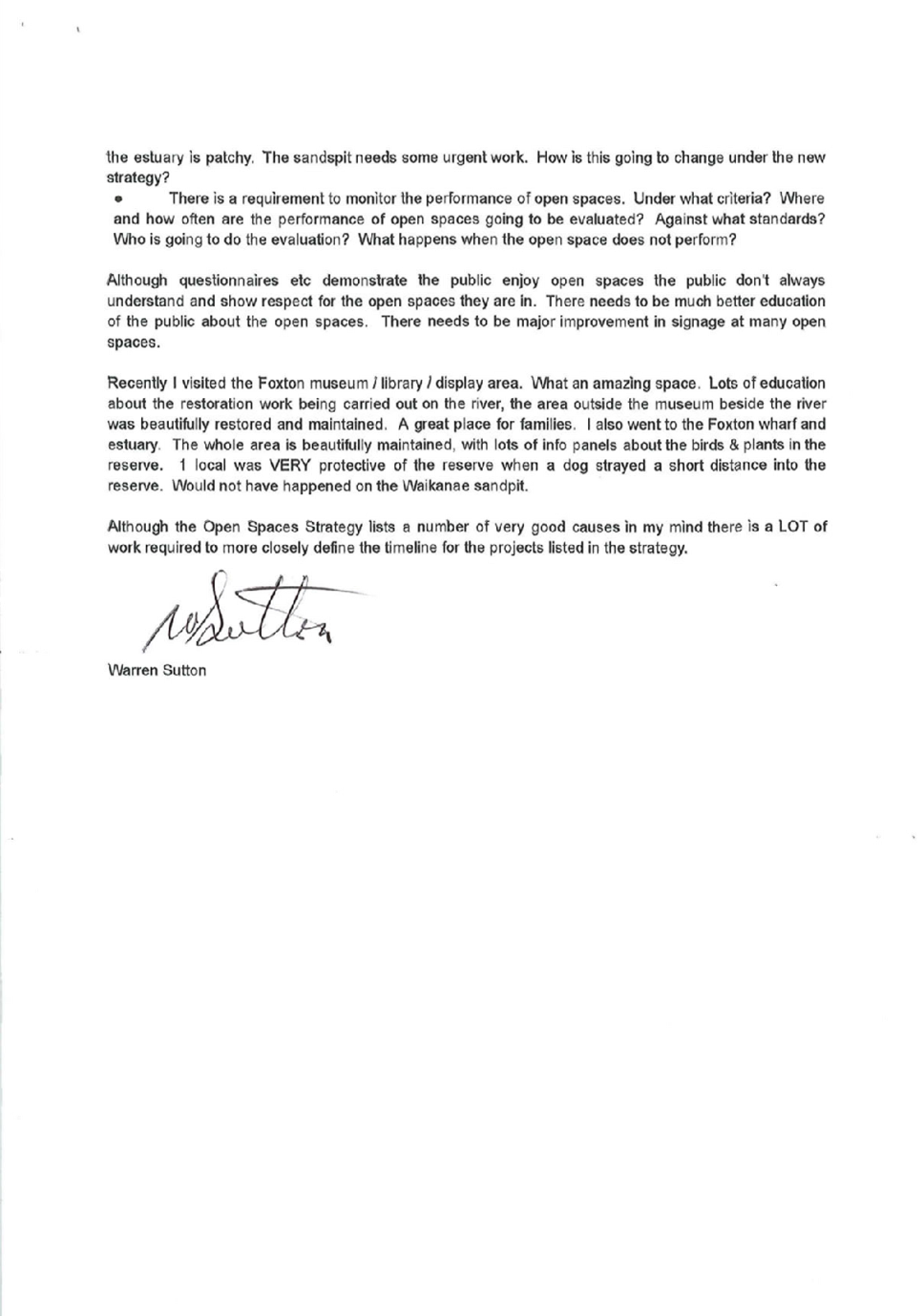
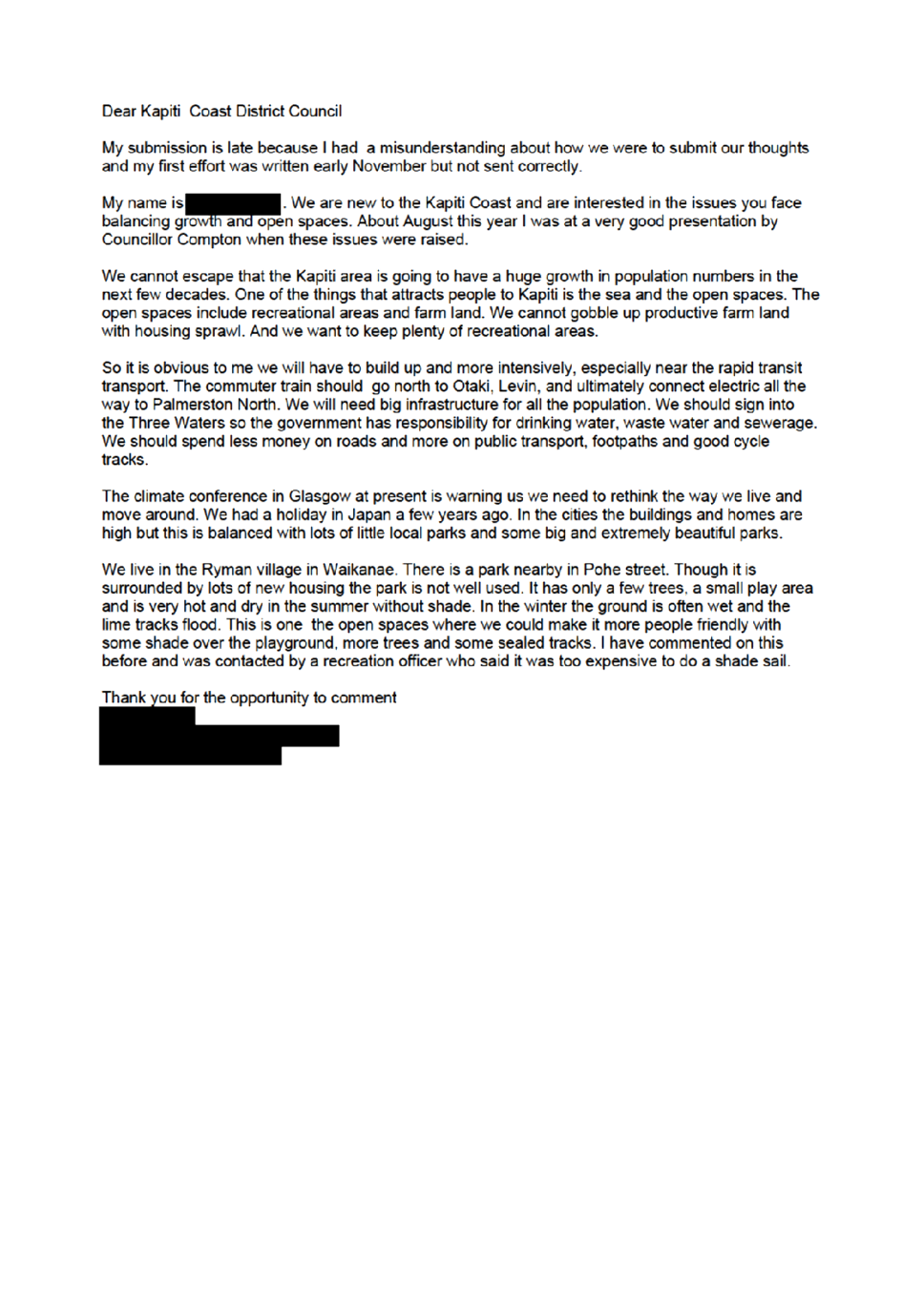
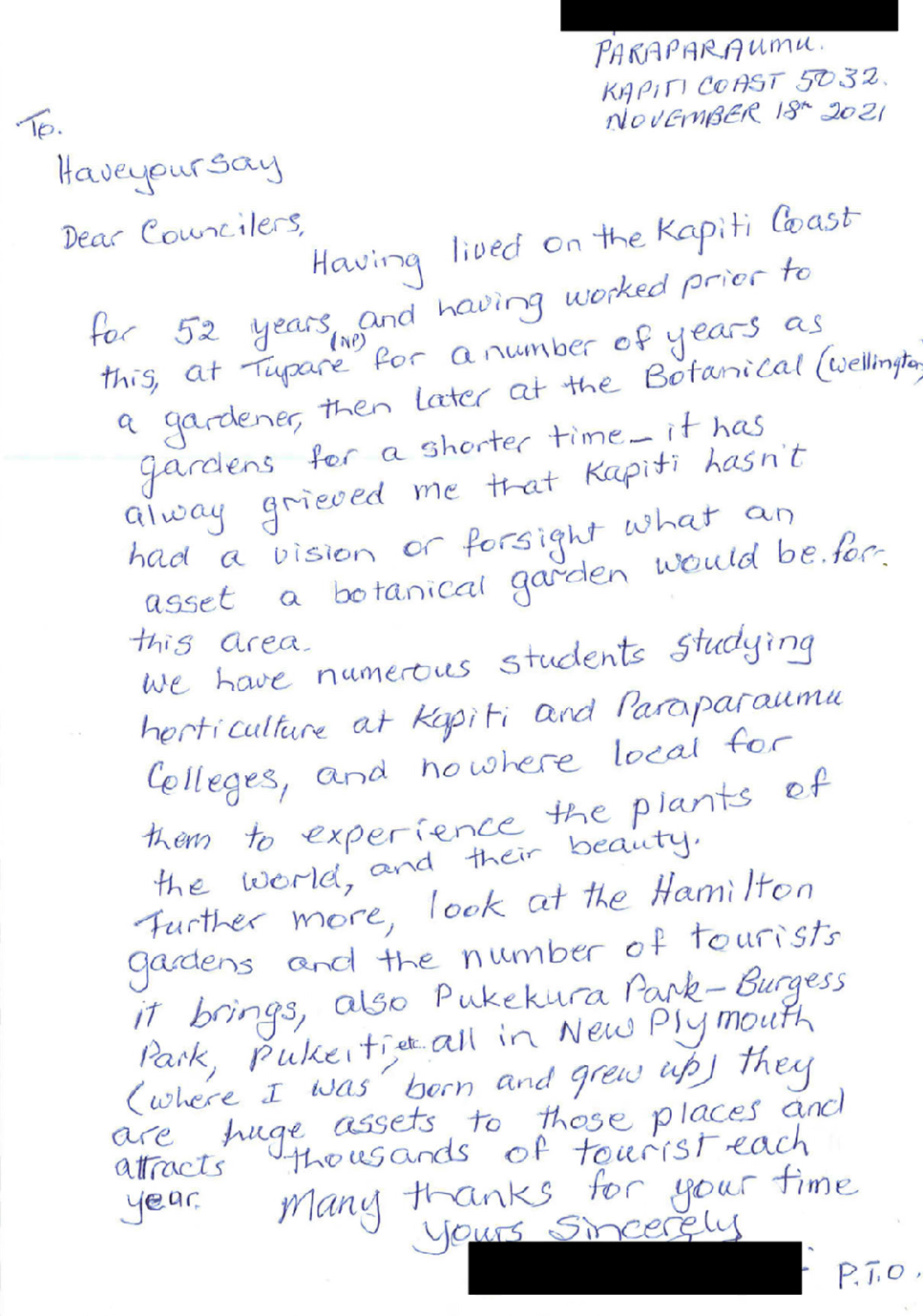

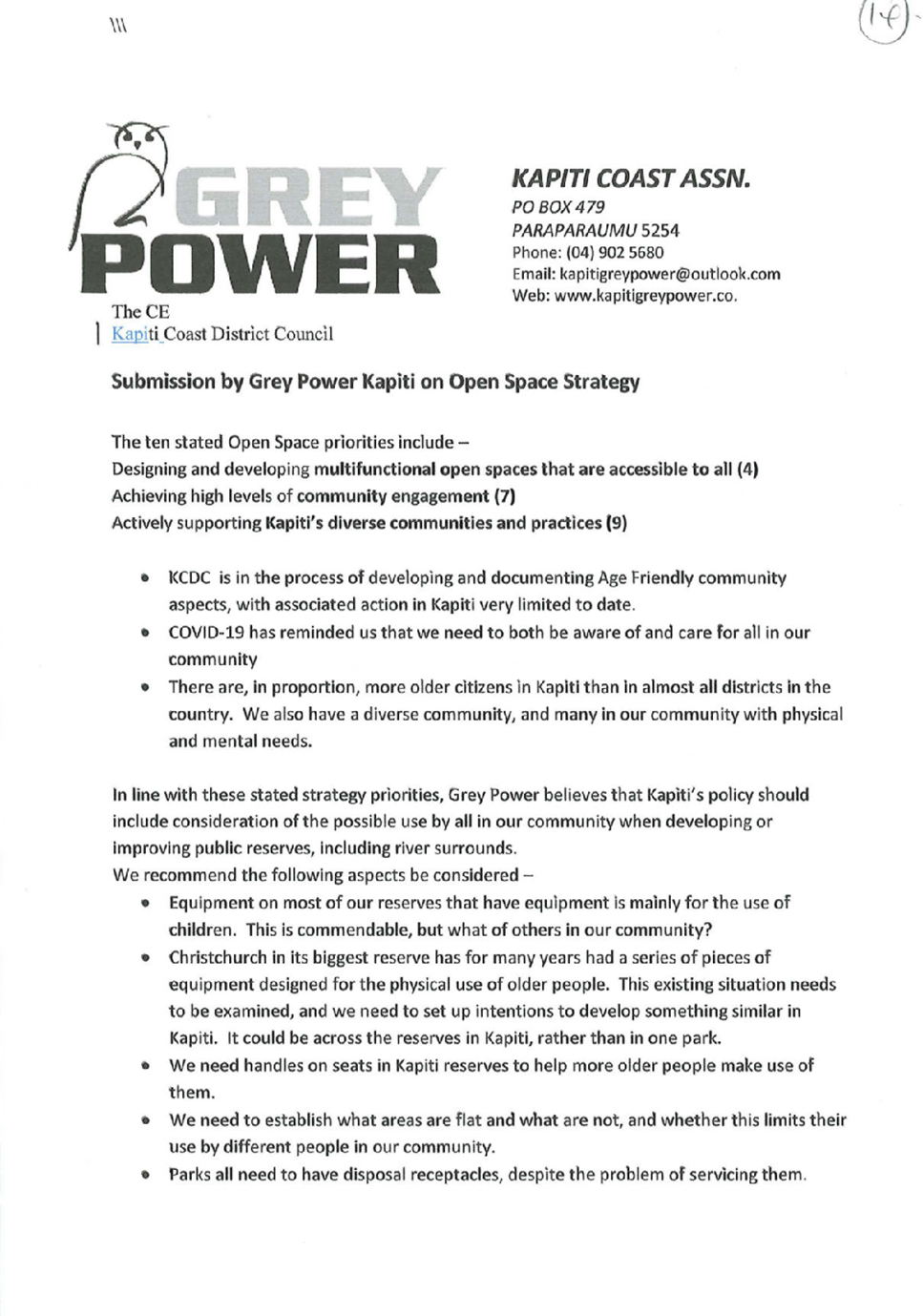
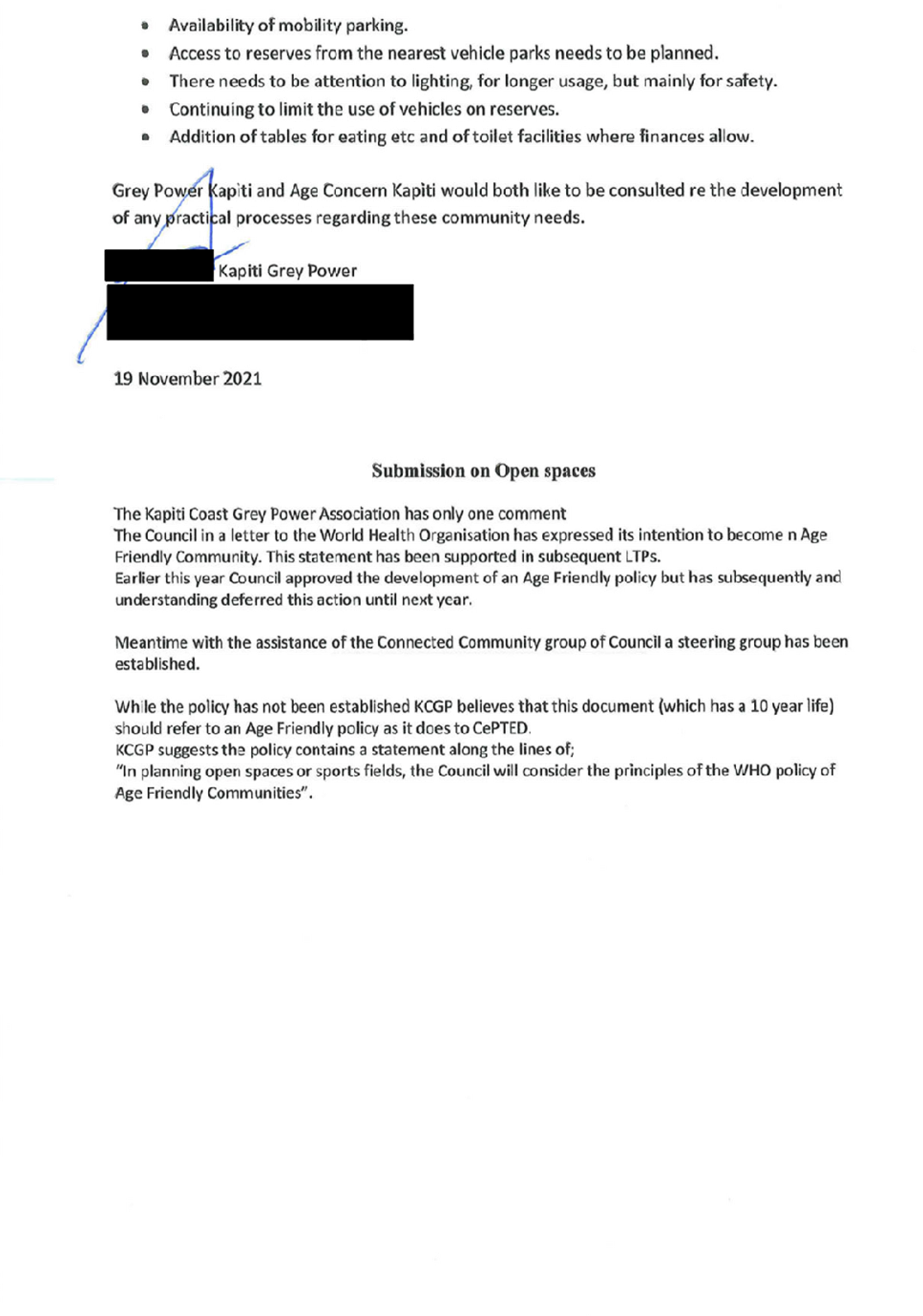

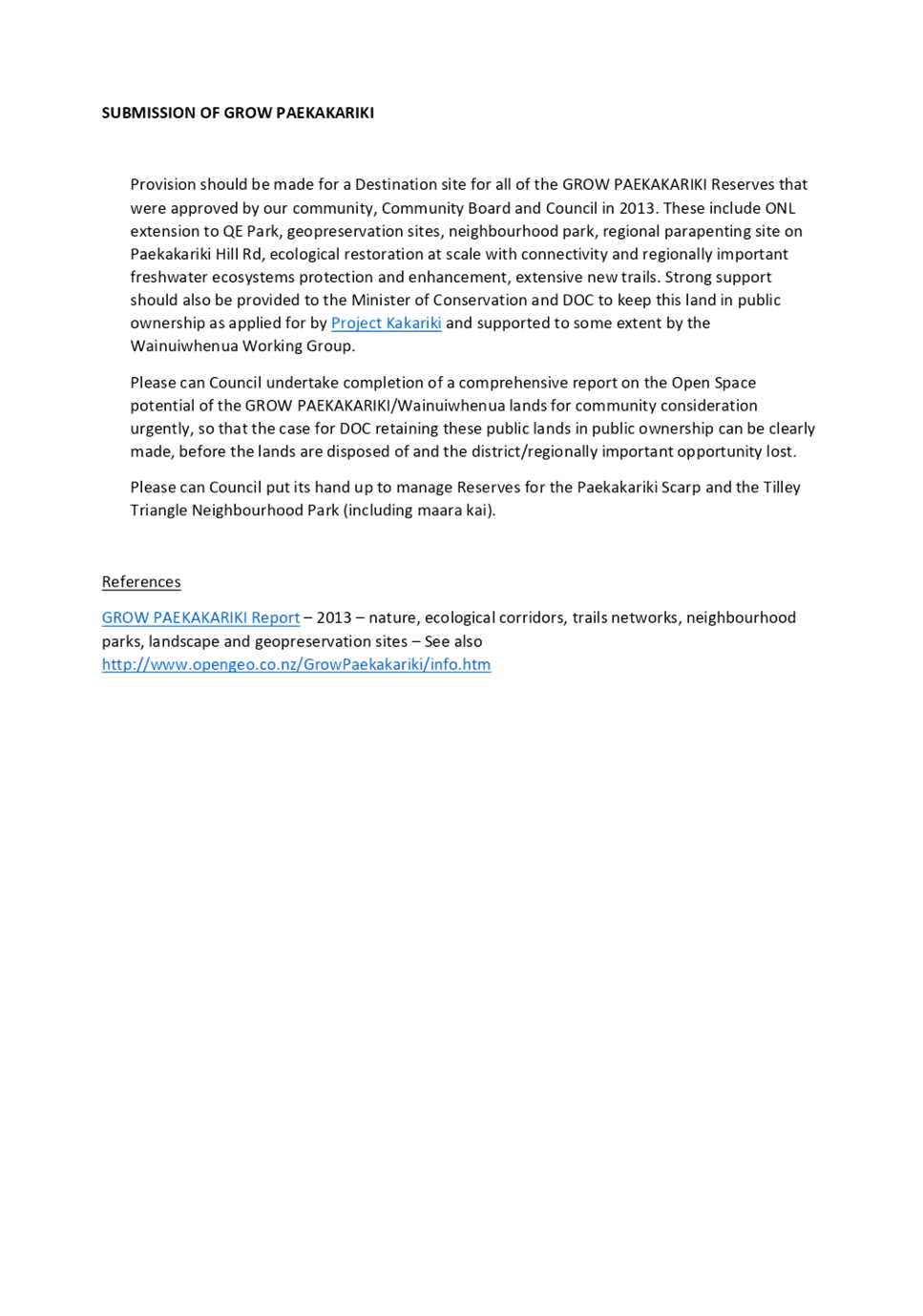
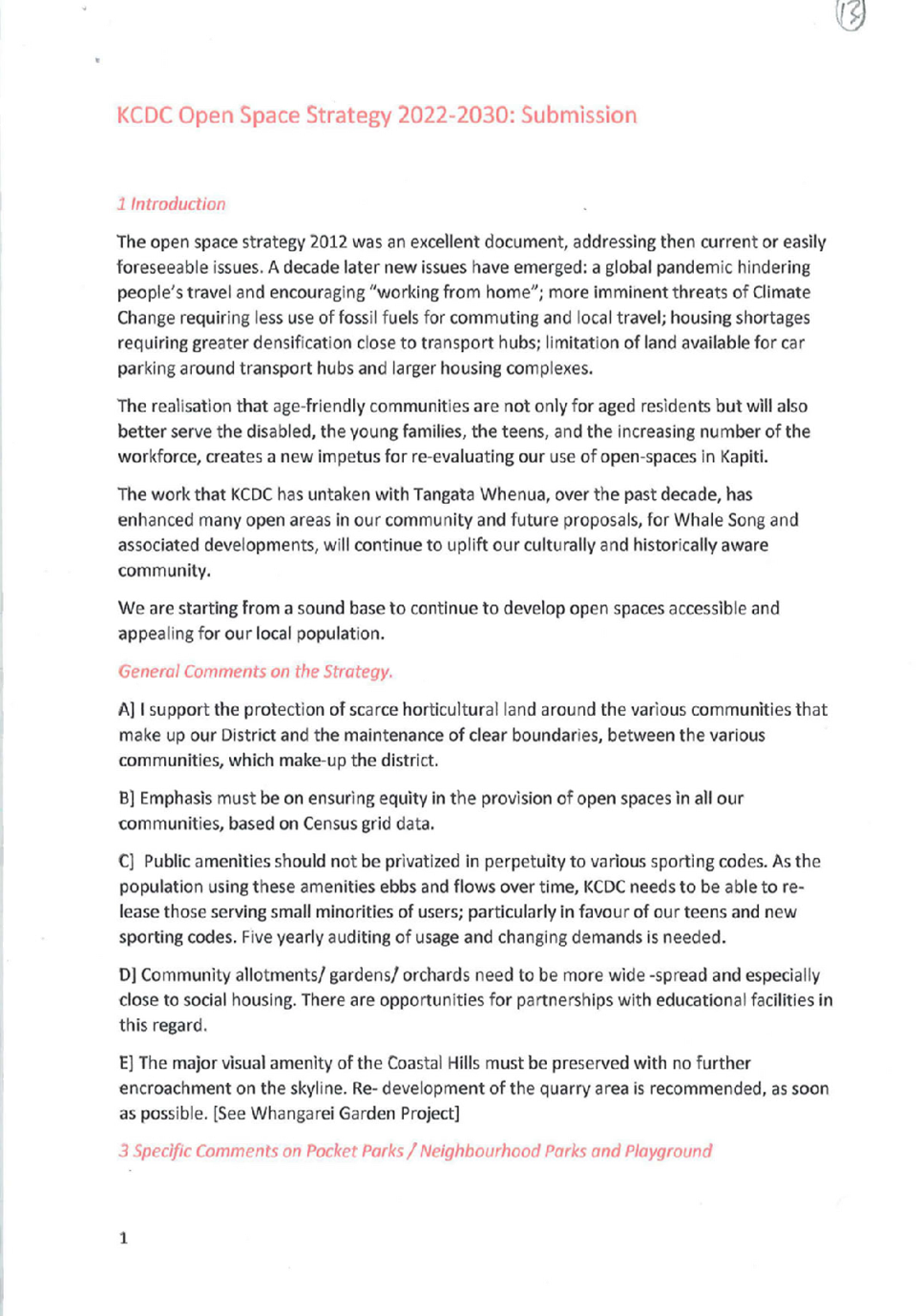
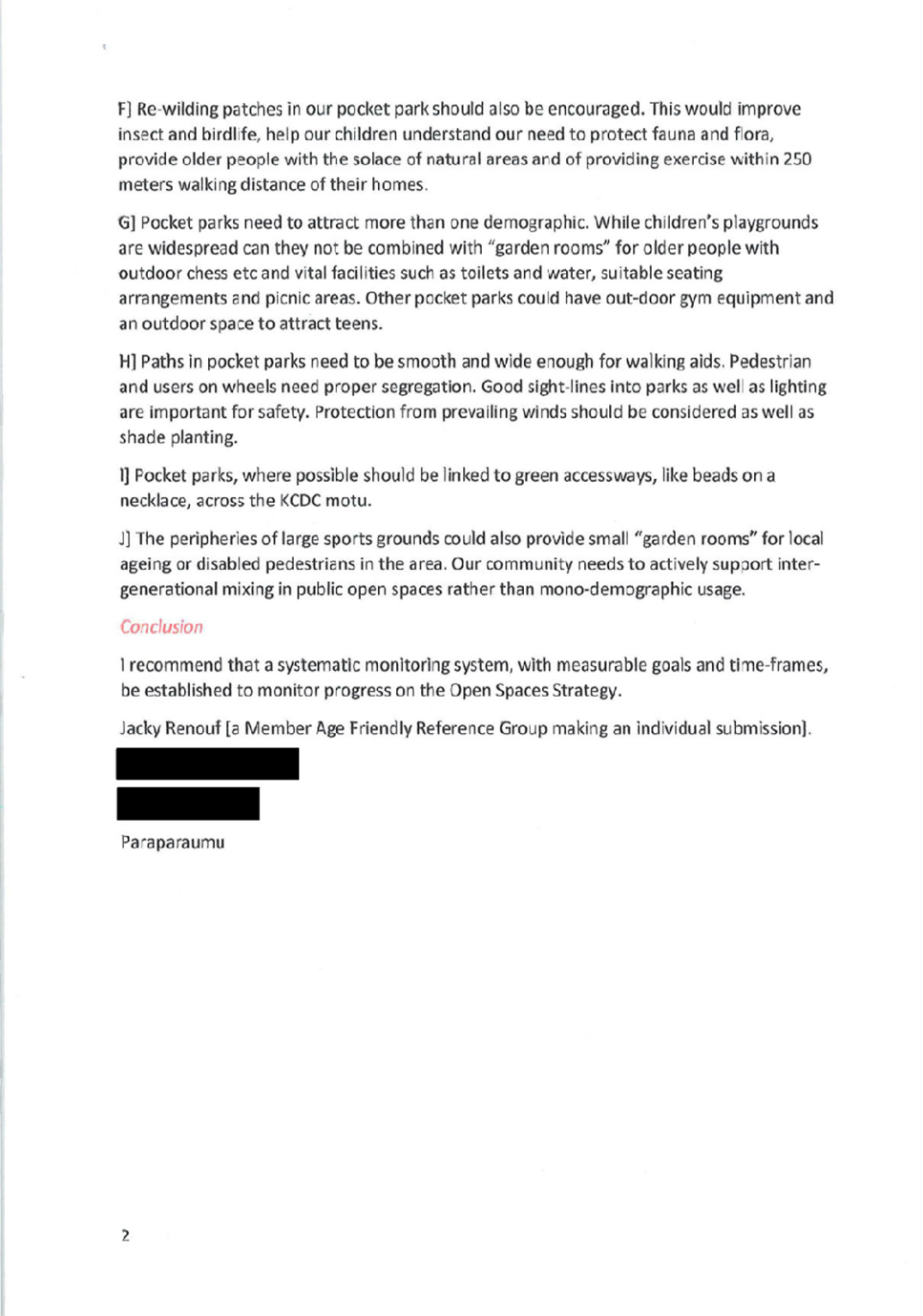

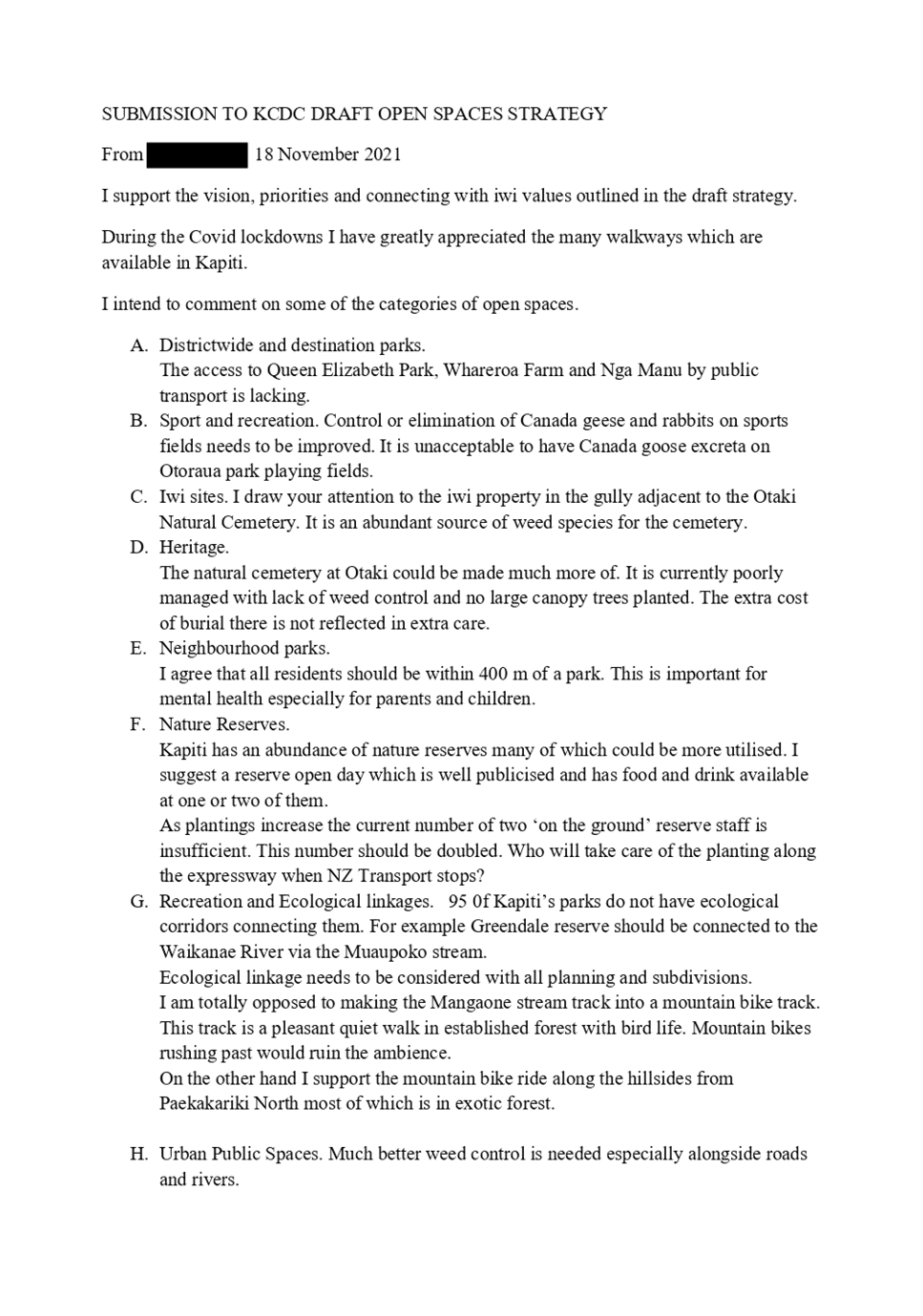

|
Council Meeting Agenda
|
24 March 2022
|
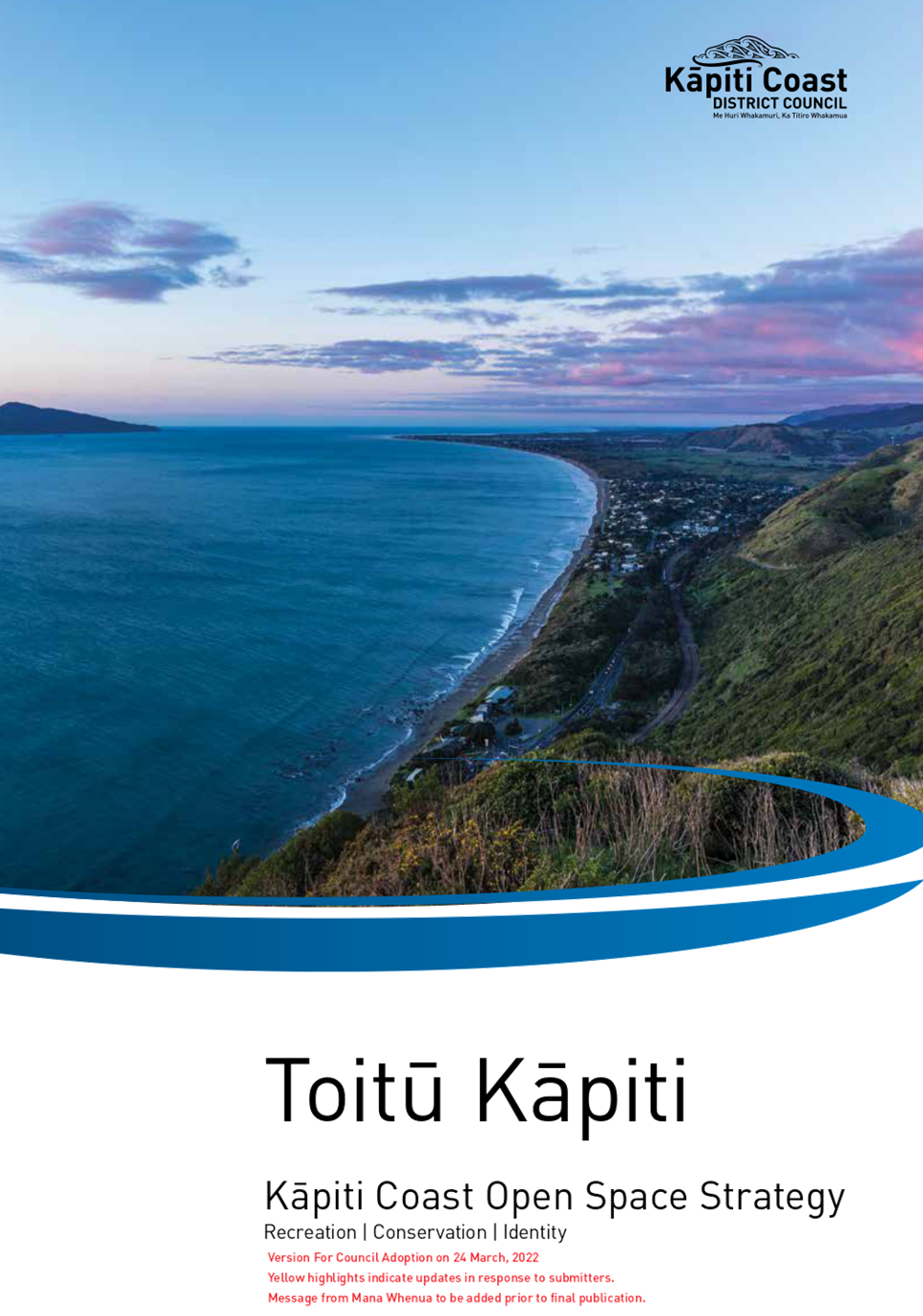
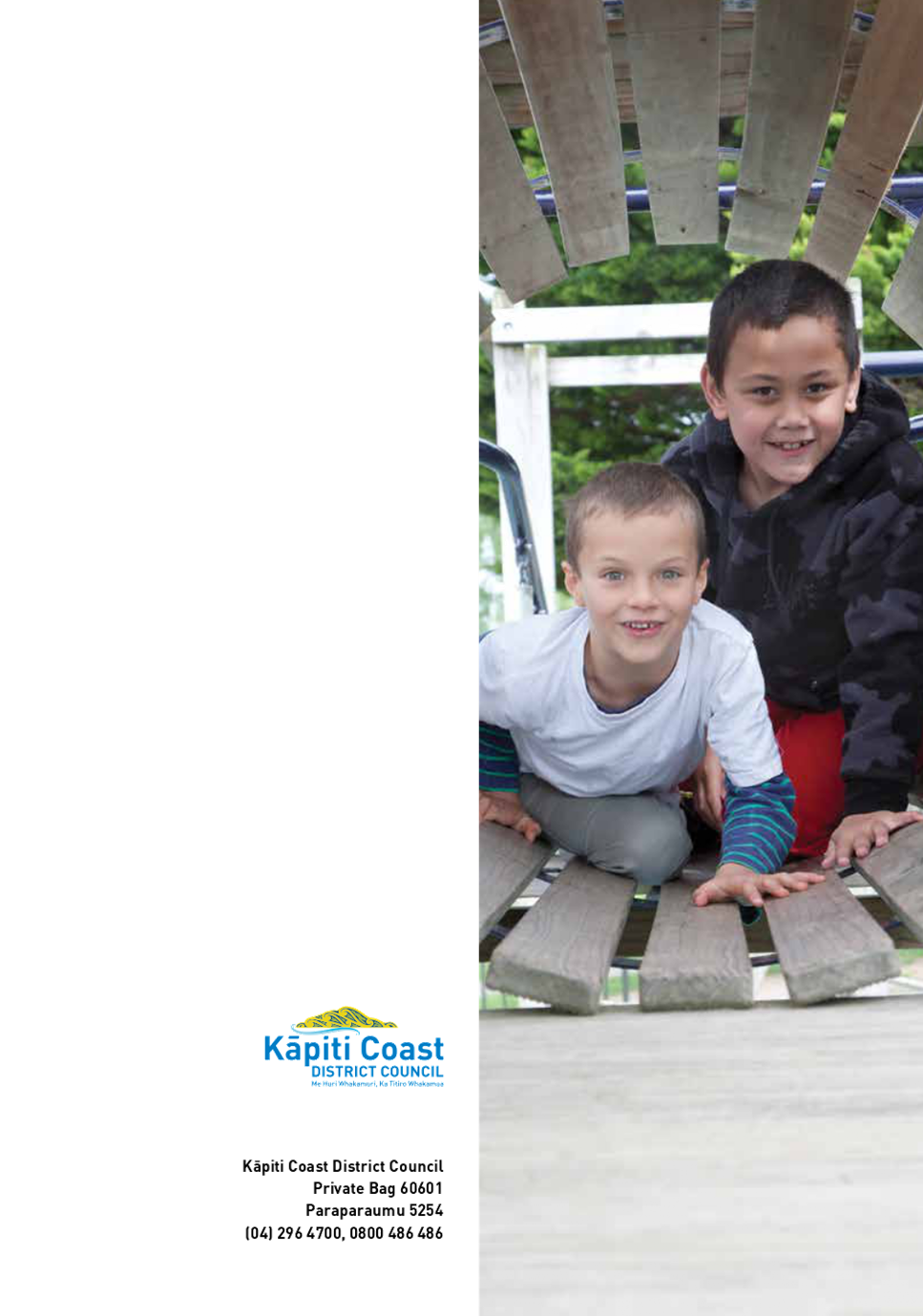
10.4 Amendments
to the Council Delegations to Staff
Kaituhi |
Author: Sarah
Wattie, Governance & Legal Services Manager
Kaiwhakamana
| Authoriser: Janice McDougall, Group Manager People and
Partnerships
Te pūtake |
Purpose
1 This
report seeks Council’s approval of amendments to Council delegations to
the Chief Executive and staff, including changes to the Resource Management Act
1991 delegations.
He
whakarāpopoto | Executive summary
2 Not
required.
Te tuku haepapa
| Delegation
3 Council
has the authority to consider this matter.
The delegations comply with the Local Government Act 2002
(clause 32, schedule 7), which empower the Council to delegate its
responsibilities, duties and powers in accordance with this section.
Taunakitanga | RECOMMENDATIONS
That the Council adopts the revised Resource Management Act
1991 Delegations to Staff as shown in Appendix 1 to report Amendments to the
Council Delegations to Chief Executive and Staff.
Tūāpapa | Background
4 The
purpose of local government under clause 10(1) of the Local Government Act 2002
is to enable democratic local decision-making and action by, and on behalf of,
communities; and to promote the social, economic, environmental, and cultural
well-being of communities in the present and for the future; legislative
compliance with central Government’s legislative and regulatory programme
supports Council to do this in a fair and efficient manner.
5 Council
has a range of legislative functions, duties and powers. It is not always
efficient or practical for elected members to carry out all of these functions,
duties and powers, which is reflected in various statutes that provide Council
with the legal authority to delegate to Council staff. Delegated authority
allows for administrative efficiency and ensures timeliness in the conduct of
Council’s daily business.
6 In
particular, Council has the authority to delegate to officers under clause 32
of Schedule 7 of the Local Government Act 2002. Clause 32 of the Local
Government Act 2002 also sets out certain powers that cannot be
delegated as follows:
“32. Delegations‒ (1) Unless expressly provided
otherwise in this Act, or in any other Act, for the purposes of efficiency and
effectiveness in the conduct of a local authority's business, a local authority
may delegate to a committee or other subordinate decision-making body,
community board, or member or officer of the local authority any of its
responsibilities, duties, or powers except‒
(a) the power to make a rate; or
(b) the power to make a bylaw; or
(c) the power to borrow money, or purchase or dispose of
assets, other than in accordance with the long-term plan; or
(d) the power to adopt a long-term plan, annual plan, or
annual report; or
(e) the power to appoint a chief executive; or
(f) the power to
adopt policies required to be adopted and consulted on under this Act in
association with the long-term plan or developed for the purpose of the local
governance statement.
(h the power to adopt a remuneration and
employment policy.”
7 Most
legislation provides the Chief Executive with the discretion to sub-delegate to
Council staff. However, some Acts prescribe the way delegations must be made.
For example, the Resource Management Act 1991 (RMA 1991) does not allow the
Chief Executive the power to sub-delegate and in this case, delegations must be
approved by Council.
8 The
Council’s delegations to Chief Executive and staff are monitored on a
regular basis and reported back to Council for amendment as required, in
response to changes in either staff or legislation.
He
kōrerorero | Discussion
plan change – private request
9 Council
has currently delegated staff in the Strategy, Growth and Recovery and
Regulatory groups the ability to consider private requests for changes to the
District Plans of local authorities under clause 25 of Schedule 1 of the RMA
1991. Council may impose conditions on, or revoke, delegations to staff under
section 34A of the RMA 1991.
10 The
relevant section is set out in Appendix 1, requiring decisions to be made
within 30 working days and setting out key considerations to be taken into
account in considering a request. Decisions made under this clause may be
challenged under clause 27 of Schedule 1 by an appeal to the Environment Court.
Subject to appeal rights on questions of law, decisions of the Court are final
on matters of fact. Decisions need to be robust and based on sound resource
management principles, and take care not to expose Council to undue legal
risk. It is not predictable when private plan changes request may be
received by Council, and there are likely to be times when making a decision within
30 working days is not possible due to the schedule of Council and Strategy and
Operations meetings. For this reason alone, it may be more appropriate to
retain this delegation at an operational level.
Amended RESOURCE MANAGEMENT aCT Delegations
11 A number
of amendments are required to Council’s delegations to staff under the
Resource Management Act 1991, which are set out in the table below. These
changes relate to the Water and Wastewater Assets, Project Management Office
(PMO), Building, Resource Consents and Parks, Open Space and Environment teams.
The amended RMA delegations and glossary are in Appendix 1.
|
Recommended amendments to Council
delegations to staff under
the Resource Management Act 1991
|
|
Positions
|
Amendments
to RMA 1991 delegations
|
|
Asset Planning Engineer –
Water
|
A new position
for the Water and Wastewater team. Position to include sections 35, 35A,
332 and 333.
|
Building
Advisory Officer
|
New position
for the Building Team. Position to include sections 35, 35A and
332.
|
|
Consultant Planner
|
Position to support Resource Consents processing and
includes sections 10,10B, 22, 32, 35, 35A, 36 (5),36AAB (1), 37, 37A, 41B,
42, 42A, 44A, 55, 87AAD, 87BA-BB, 87E, 87F, 87G, 88, 89A, 91, 91F, 92, 92A,
92B, 95, 95A-E, 95F, 98, 99, 101, 102, 103, 104, 104A, 104B, 104C, 104D, 105,
106, 108, 108A, 109, 110, 113, 114, 125, 126, 127, 128, 129, 133A, 138, 139,
139A, 168, 168A, 169, 175, 176A, 190, 220, 221, 222, 223, 224, 226 (1)(e),
227, 234, 235, 237, 237 B-H, 240, 241, 243, 332, 333, 343C, Sch 1 cl3, Sch 1
cl3A, Sch1 cl3B and Sch 1 cl4.
|
|
Parks Officer
|
A new role for the Parks, Open Space and
Environment team. Position to include sections 35, 35A, 330 and 333.
|
|
Principal Advisor, Regulatory
Services
|
Minor amendment to title Principal
Adviser, Regulatory Services.
|
|
Programme
Delivery Manager – Civil
|
A new position for the Project Management
Office. Position to include sections 35, 35A, 332 and 333.
|
|
Project Manager
Civil
|
A new position for the Project Management
Office. Position to include sections 35, 35A, 332 and 333.
|
|
Senior Delivery
Manager
|
Project Management Office title
superseded by changes above.
|
|
Senior Asset
Planning Engineer – Wastewater
|
A new position for the Water and
Wastewater team. Position to include sections 35, 35A, 332 and 333.
|
|
Senior Network
Engineer
|
A new position for the Water and
Wastewater team. Position to include sections 35, 35A, 332 and 333.
|
|
Team Leader
Open Space Management
|
A replacement position for the Parks
and Environment Senior Advisor role. Position to include sections 35,
35A, 330 and 333.
|
|
Team Leader
Open Space Planning
|
A replacement position for the Environment
and Design Senior Advisor role. Position to include sections 35, 35A,
330 and 333.
|
|
Water and
Wastewater Compliance Officer
|
A new position for the Water and
Wastewater team. Position to include sections 35, 35A, 332 and 333.
|
|
Water
Conservation and Tradewaste Officer
|
New position in the Water and Wastewater Asset
Team. Position to include sections 35, 35A, 332 and 333.
|
He
take | Issues
12 No
issues are considered in this report.
Ngā
kōwhiringa | Options
13 No
options are provided in this report.
Tangata whenua
14 There
are no tāngata whenua considerations arising from these delegations.
Panonitanga āhuarangi | Climate change
15 There
are no climate change considerations triggered by this report.
Ahumoni me ngā rawa | Financial
and resourcing
16 There
is no direct financial impact from these changes to delegations.
Ture me ngā Tūraru | Legal
and risk
17 This
paper has been reviewed by the Council’s Governance and Legal Services
Manager and external advice has been sought from Simpson Grierson on the use of
the common seal and execution requirements.
Ngā pānga ki ngā kaupapa here | Policy impact
18 Appropriate
delegations facilitate efficiency and effectiveness in the conduct of Council
business, and assist staff to deliver on Council outcomes.
Te whakawhiti
kōrero me te tūhono | Communications & engagement
Te mahere tūhono | Engagement
planning
19 This
decision has a low level of significance under the Council’s Significance
and Engagement policy.
20 No
consultation, engagement or publicity is required relating to the process of
making these amendments.
Whakatairanga |
Publicity
No publicity is required for these minor amendments.
Ngā āpitihanga | Attachments
1. Appendix
1 Amendments to the Council Delegations to Chief Executive and Staff ⇩ 
|
Council
Meeting Agenda
|
24 March 2022
|
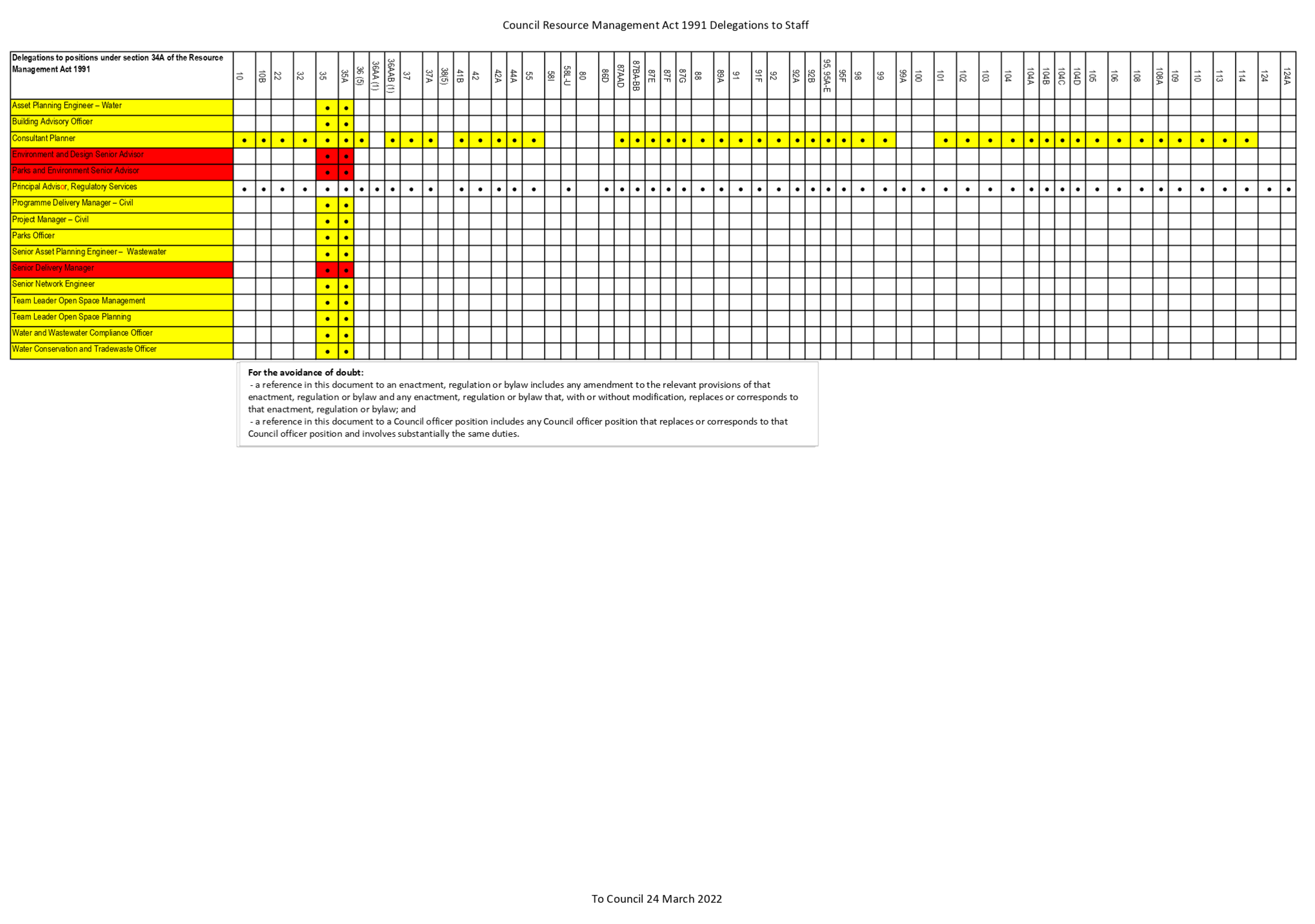
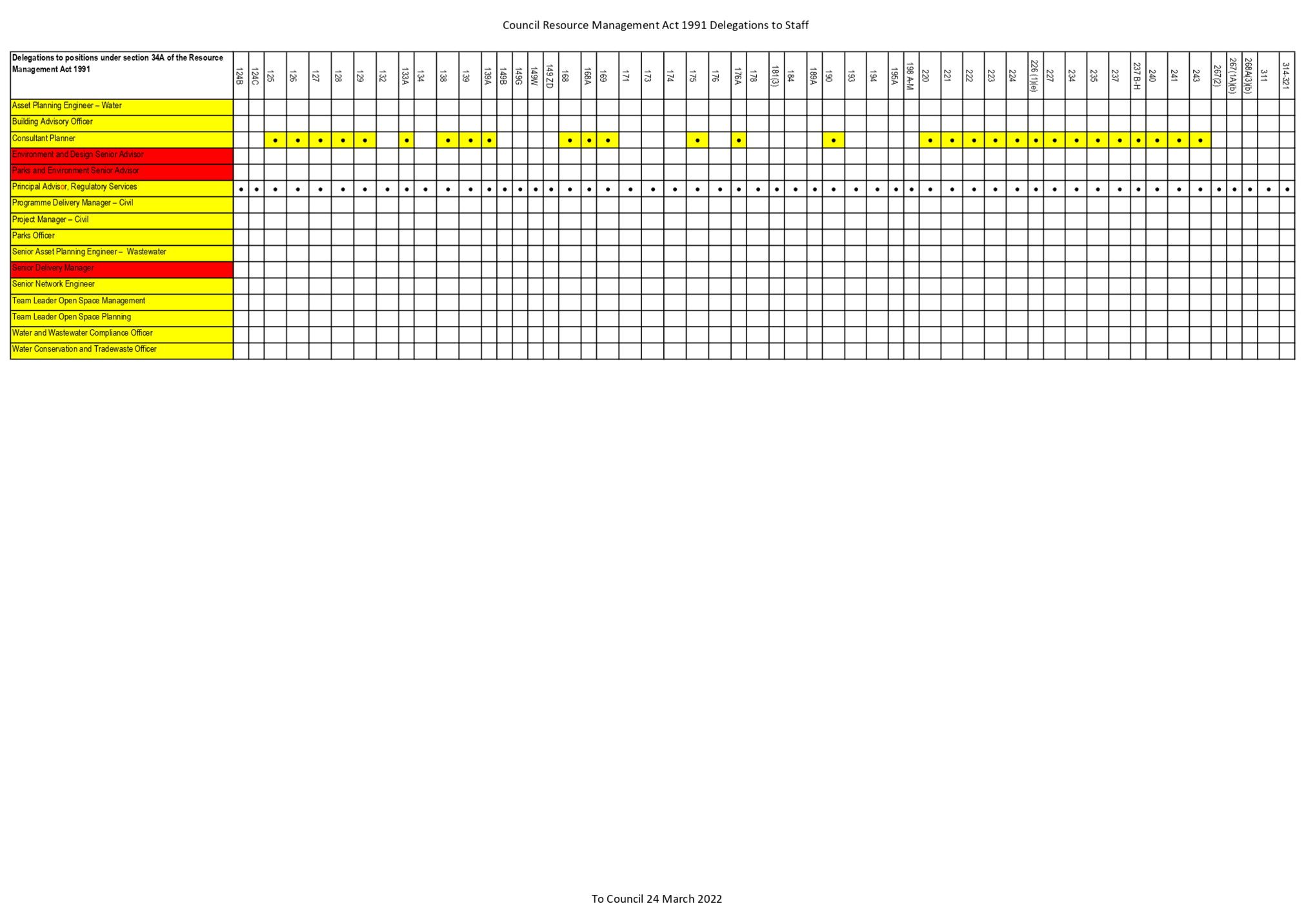

10.5 Reports
and Recommendations from Standing Committees and Community Boards
Kaituhi |
Author: Tanicka
Mason, Senior Advisor Democracy Services
Kaiwhakamana
| Authoriser: Janice McDougall, Group Manager People and
Partnerships
Te pūtake |
Purpose
1 This
report presents reports and recommendations considered by Standing Committees
and Community Boards from 9 February 2022 to 9 March 2022.
He
whakarāpopoto | Executive summary
2 Not
required.
Te tuku haepapa
| Delegation
3 The
Council has the authority to consider recommendations made from Standing
Committees and Community Boards to the Council.
®
Taunakitanga | RECOMMENDATIONS
A. That
Council receives this report (Reports and Recommendations from Standing
Committees and Community Boards.
Tūāpapa | Background
4 During
the time period of 9 February 2022 to 9 March 2022, Standing Committee and
Community Board meetings took place on the following dates:
|
Strategy and Operations Committee
|
10 February 2022
|
|
Paraparaumu-Raumati Community Board
|
15 February 2022
|
|
Paekākāriki Community Board
|
22 February 2022
|
|
Audit and Risk Subcommittee
|
3 March 2022
|
5 Items
discussed at each of the meetings listed in paragraph 4 are noted below:
5.1 On
10 February 2022, Strategy and Operations Committee met to discuss:
· RM Reform
Consultation
· Approval for public notification of
proposed Plan Changes 1A, 1B and 1C to the Operative District Plan 2021.
· Contracts under delegated authority.
· Confirmation of
Minutes
· Confirmation of
Public Excluded Minutes
· Mahara Gallery
Construction Contract
5.2 On
15 February 2022, the Paraparaumu-Raumati Community Board met to discuss:
· Considerations of
Applications for Funding
· Update on the
proposed pedestrian crossing, Poplar Avenue, Raumati South.
· Update on the
Notice of Motion of 3 August 2020: Speed signs, Raumati Village
· Confirmation of
Minutes
· Matters Under
Action
5.3 On
22 February 2022, Paekākāriki Community Board met
to discuss:
· Considerations of
applications for funding
· Update on Seawall
project
· Confirmation of
Minutes
· Matters Under
Action
5.4 On
3 March 2022, the Audit and Risk Subcommittee met to discuss:
· Insurance Overview
· Ernst & Young
Audit Plan for the Year ended 30 June 2022
· Health and Safety
Quarterly Report: 1 October 2021 - 31 December 2021
· Risk Management
· Quarterly Treasury
Compliance
· Progress Update
regarding Audit Control Findings 2020/21
· Confirmation of
Minutes
· Confirmation of
Public Excluded Minutes
· Update on
Litigation Status, Statutory Compliance Issues and Investigations
6 In
addition, the following meetings took place:
|
Kāpiti Coast Youth Council
|
14 February 2022
|
|
Kāpiti Coast Youth Council
|
7 March 2022
|
7 Items
discussed at each of the meetings listed in paragraph 6 are noted below:
7.1 On 14
February 2022, the Kāpiti Coast Youth Council met to
discuss:
· Youth Council
Group Agreement
· Presentation to
Council
· Councillor’s
Update: Councillor Handford
· Otaki Youth Space
update
· Think Big Update
2022
· Youth Action Plan
& Youth Survey.
· Youth Council
Coordinator Role – Update on recruitment.
· Kapiti Run for
Youth
· Festival for the
Future
· PicklePot
· Te Uruhi/MacLean
Park upgrade
7.2 On 7 March
2022, the Kāpiti Coast Youth Council met to discuss:
· Councillor
Hanford's update
· Tiriti Workshop
· KR4Y
· Coordinator Role
· Social Media
· Think Big
· Council
Presentation
He
kōrerorero | Discussion
He
take | Issues
8 Within
the reports and recommendations considered by Standing Committees and Community
Boards from 9 February 2022 to 9 March 2022, there were no recommendations made
to Council.
Ngā
kōwhiringa | Options
9 Options
are not required for this report.
Tangata whenua
10 There
are no tāngata whenua considerations relevant to this report.
Panonitanga āhuarangi | Climate change
11 There
are no climate change considerations relevant to this report.
Ahumoni me ngā rawa | Financial
and resourcing
12 There
are no financial and resourcing considerations relevant to this report.
Ture me ngā Tūraru | Legal
and risk
13 There
are no legal considerations relevant to this report.
Ngā pānga ki ngā kaupapa here | Policy impact
14 This
report has no current or future impact on Council policies.
Te whakawhiti
kōrero me te tūhono | Communications & engagement
Te mahere tūhono | Engagement
planning
15 An
engagement plan is not required for this report.
Whakatairanga |
Publicity
16 No
publicity is required with regards to this report.
Ngā āpitihanga | Attachments
Nil
11 Confirmation
of Minutes
11.1 Confirmation
of minutes
Author: Tanicka
Mason, Senior Advisor Democracy Services
Authoriser: Janice
McDougall, Group Manager People and Partnerships
|
Taunakitanga |
Recommendations
That the minutes of the Council
meeting of 24 February 2022 be accepted as a true and correct record.
|
Appendices
1. Confirmation
of minutes - Council meeting 24 February 2022 ⇩ 
|
Council
Meeting Agenda
|
24 March 2022
|
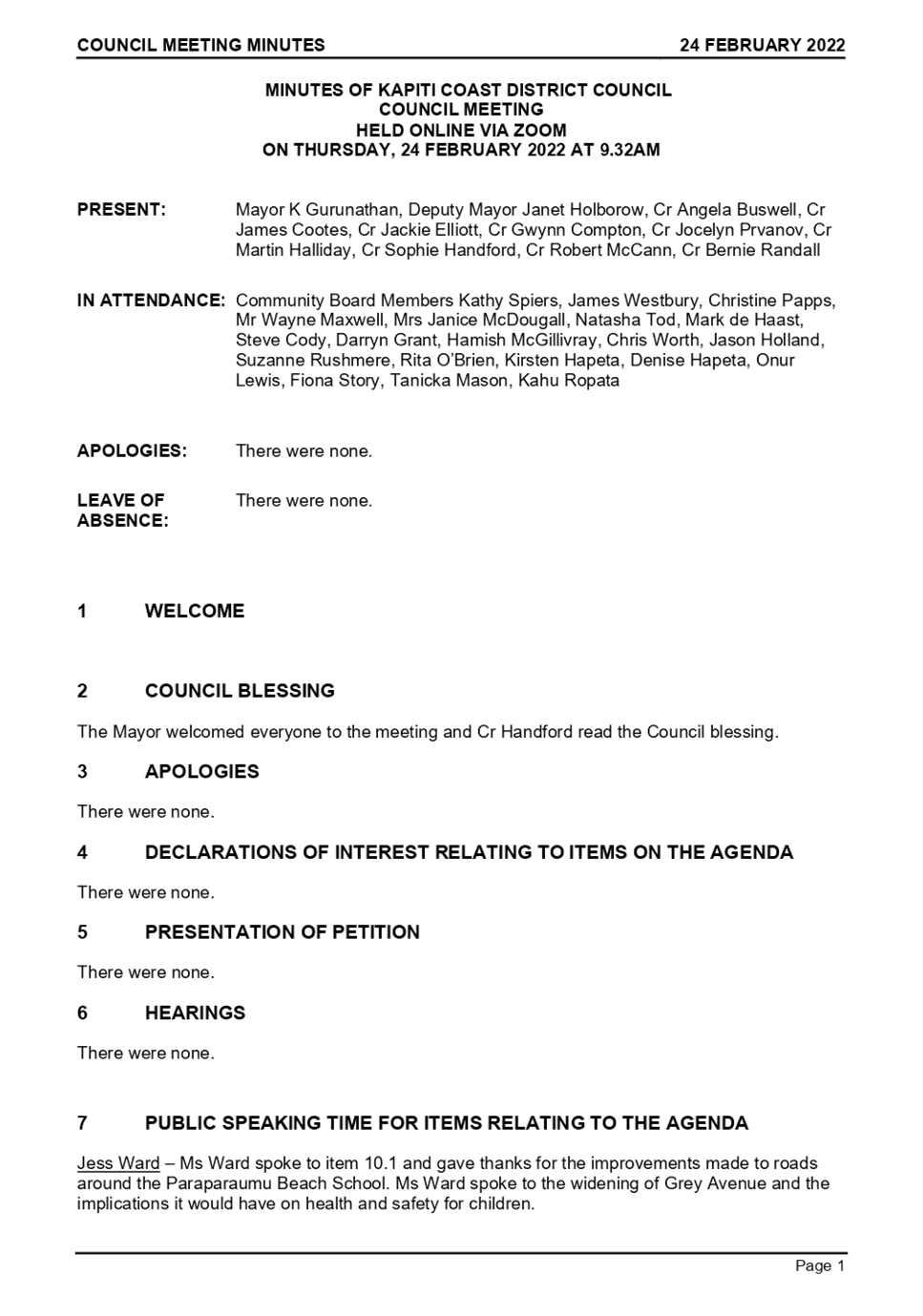
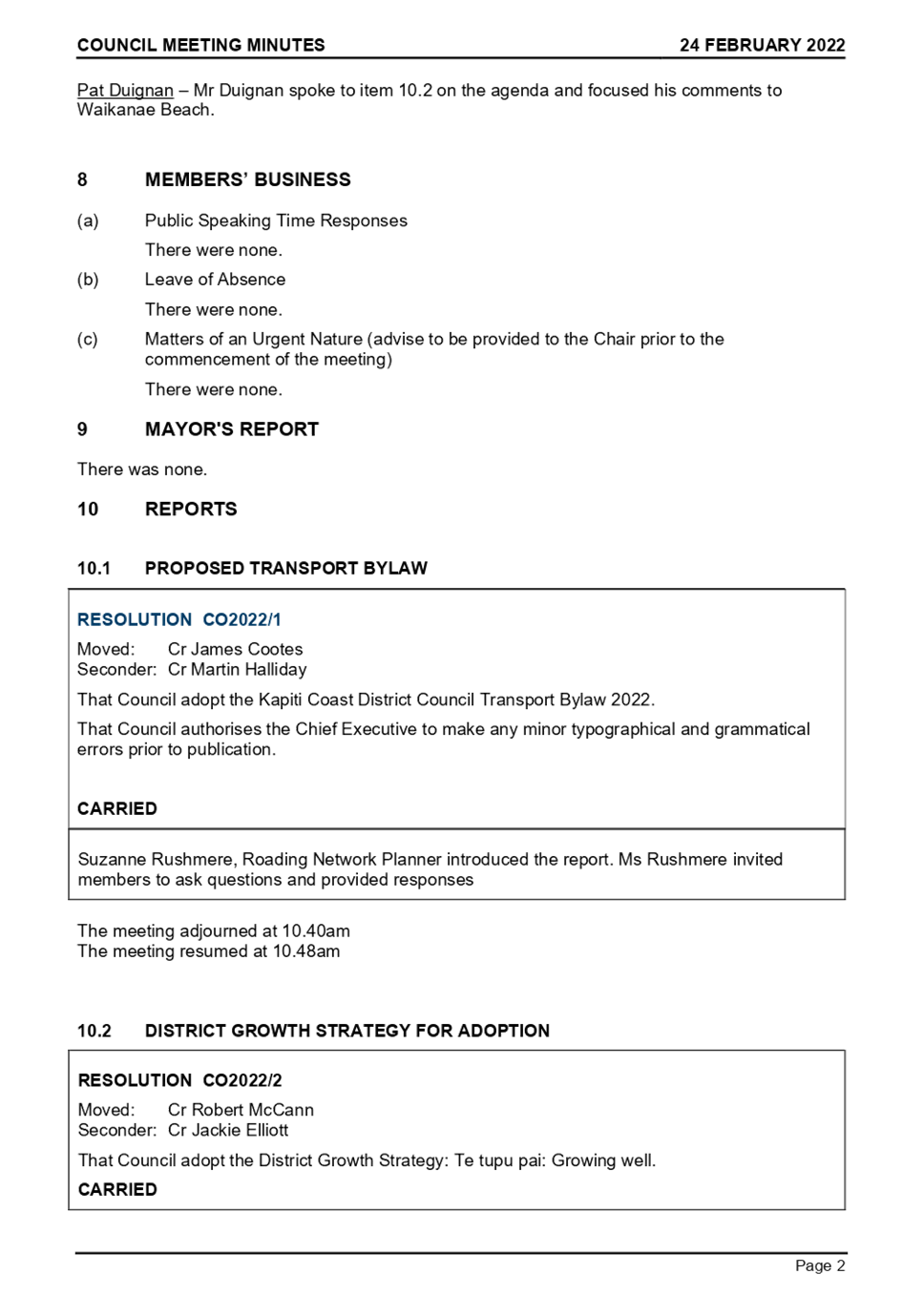
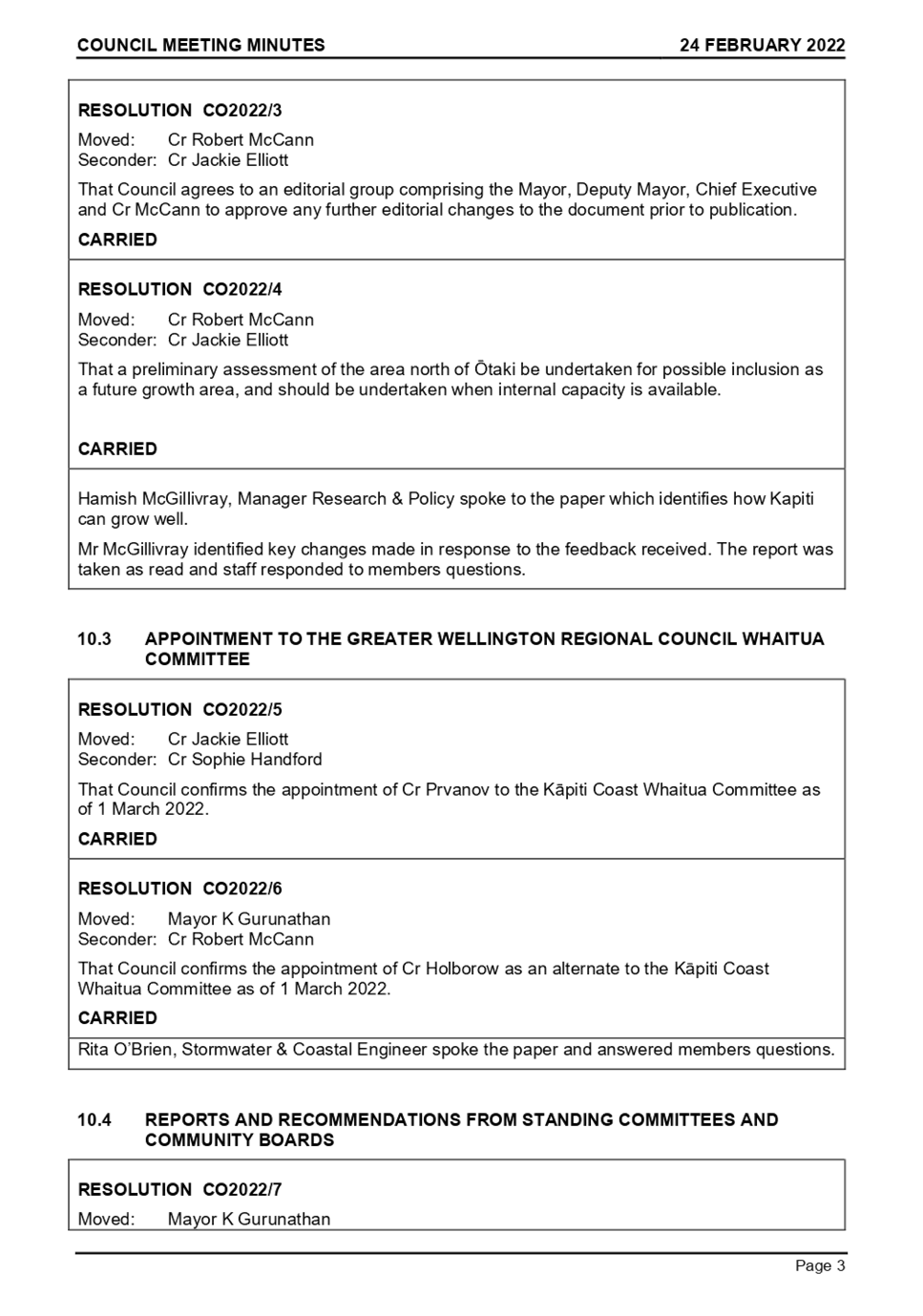
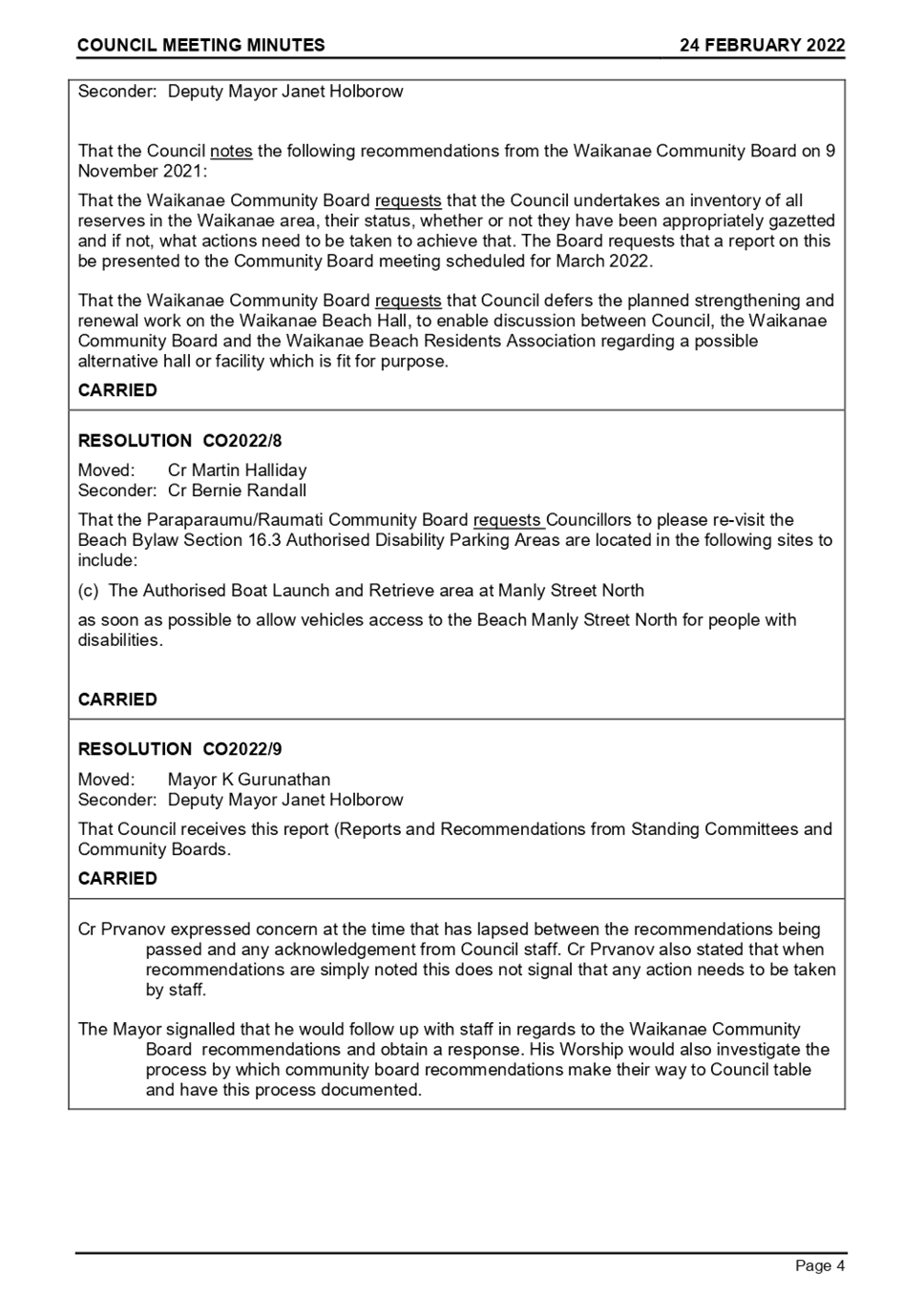
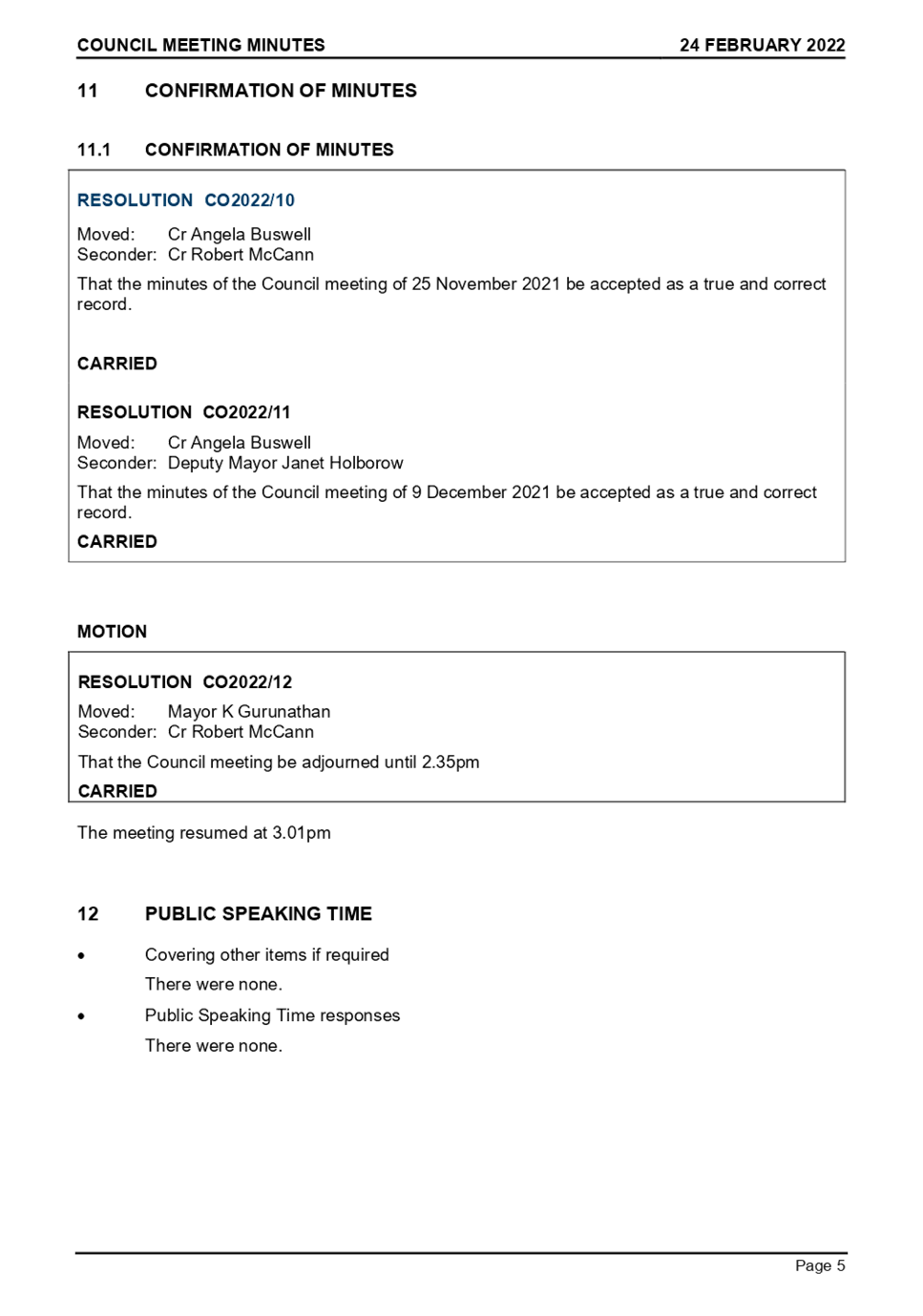
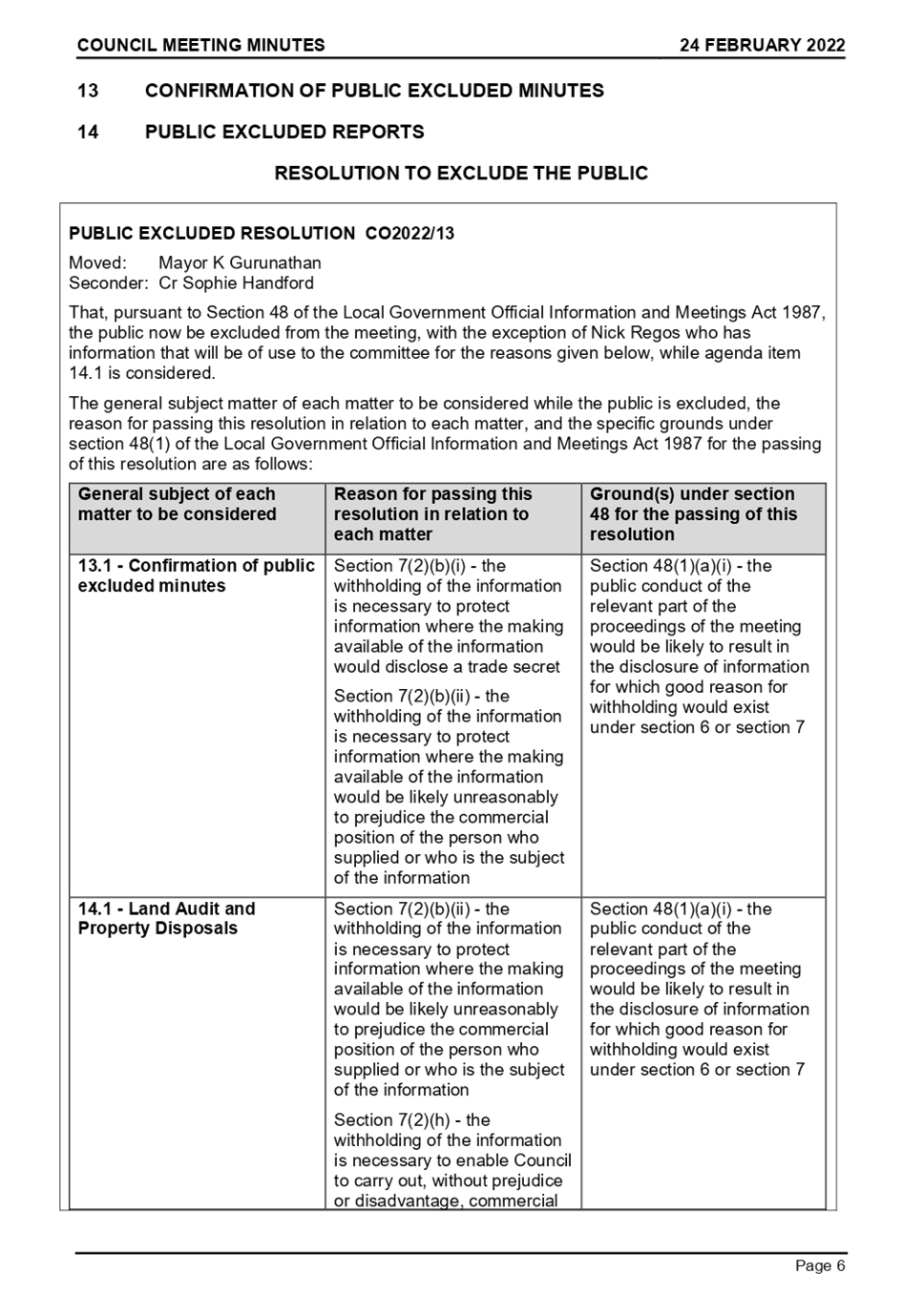
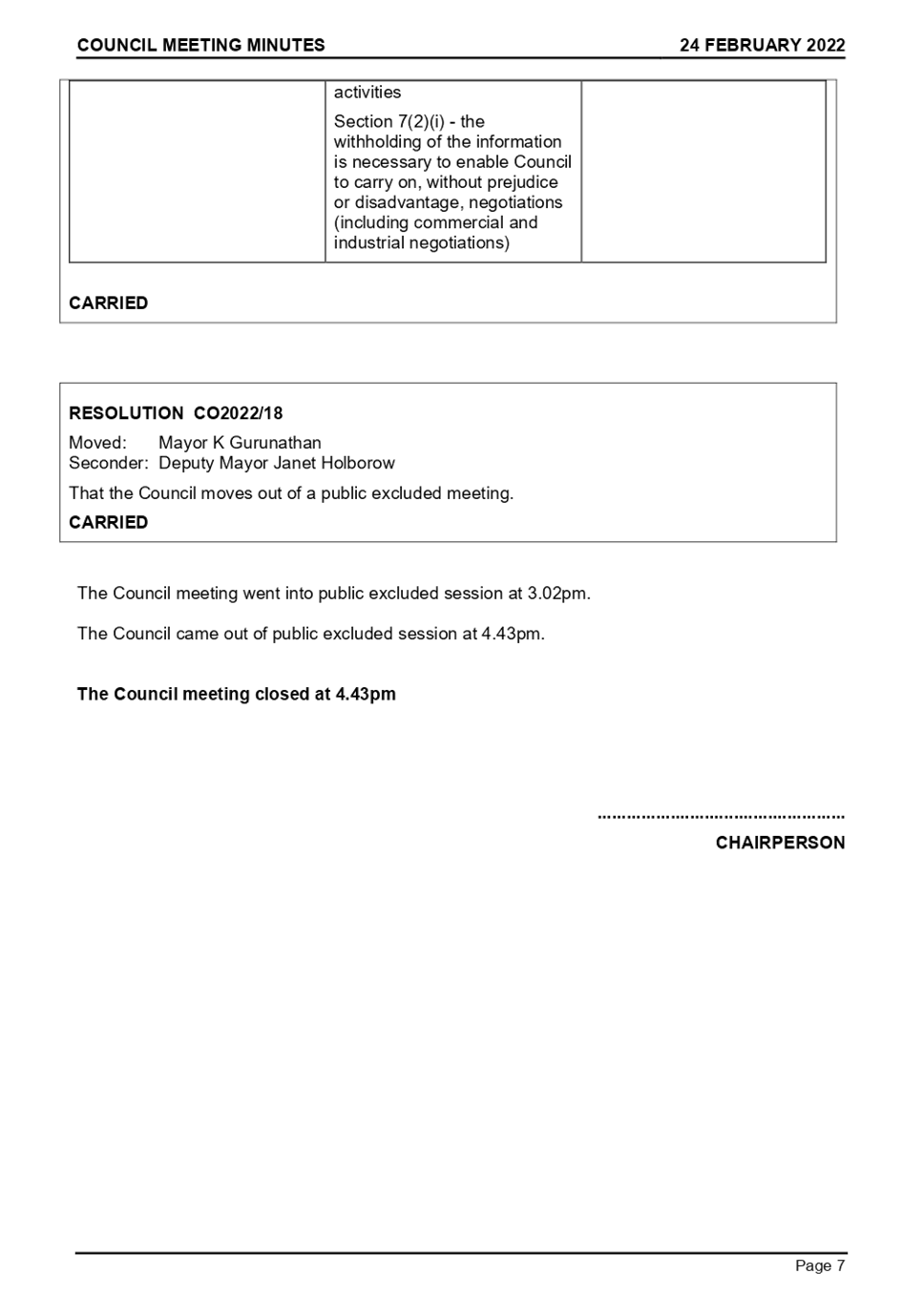
14 Public
Excluded Reports
Resolution
to Exclude the Public
|
PUBLIC EXCLUDED ReSOLUtion
That, pursuant to Section 48 of the Local Government
Official Information and Meetings Act 1987, the public now be excluded from
the meeting for the reasons given below, while the following matters are
considered.
The general subject matter of each matter to be considered
while the public is excluded, the reason for passing this resolution in
relation to each matter, and the specific grounds under section 48(1) of the
Local Government Official Information and Meetings Act 1987 for the passing
of this resolution are as follows:
|
General subject of each
matter to be considered
|
Reason for passing this
resolution in relation to each matter
|
Ground(s) under section 48
for the passing of this resolution
|
|
13.1 - Confirmation of Public Excluded Minutes
|
Section 7(2)(b)(i) - the withholding of the information
is necessary to protect information where the making available of the
information would disclose a trade secret
Section 7(2)(b)(ii) - the withholding of the information
is necessary to protect information where the making available of the
information would be likely unreasonably to prejudice the commercial
position of the person who supplied or who is the subject of the
information
Section 7(2)(h) - the withholding of the information is
necessary to enable Council to carry out, without prejudice or
disadvantage, commercial activities
Section 7(2)(i) - the withholding of the information is
necessary to enable Council to carry on, without prejudice or disadvantage,
negotiations (including commercial and industrial negotiations)
|
Section 48(1)(a)(i) - the public conduct of the relevant
part of the proceedings of the meeting would be likely to result in the
disclosure of information for which good reason for withholding would exist
under section 6 or section 7
|
|








































































































































































































